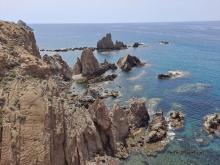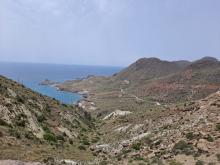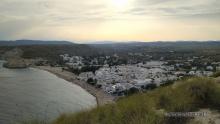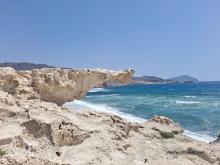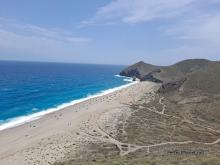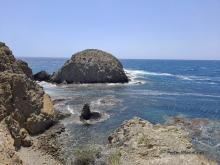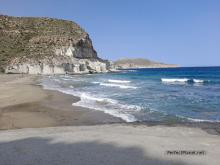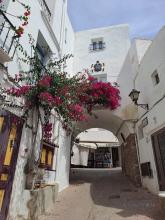The Cabo de Gata Nijar Natural Park is located in the province of Almeria, in the southeast of the Peninsula.
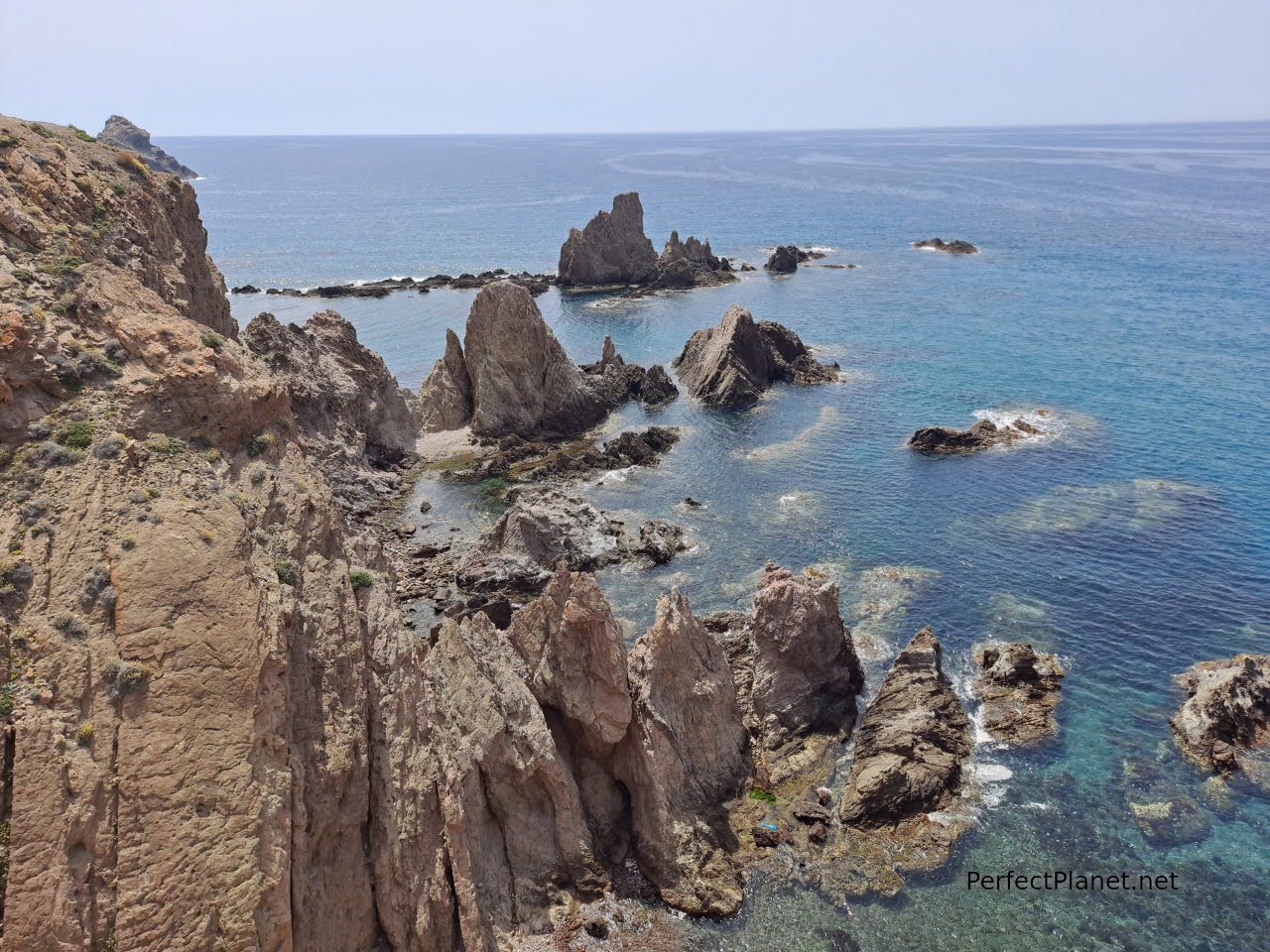
Mermaid reef
A mountainous, desert and volcanic natural paradise. Pure nature.
Thanks to its spectacular seabed it is perfect for scuba diving or snorkelling, but also a great place for trekking or cycling.
It has spectacular cliffs and beaches, fossil dunes, volcanic domes, salt flats, a reef full of life, villages and quality gastronomy.
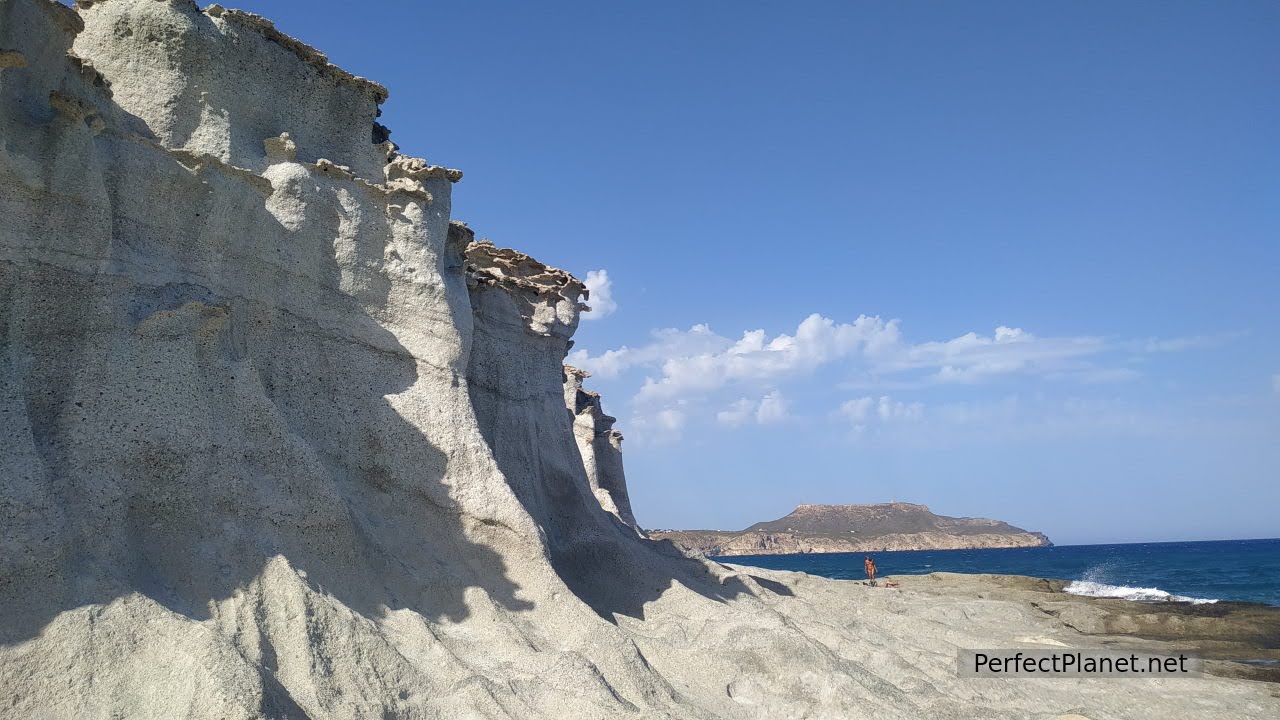
Fossil dunes
This protected natural area, free from urban development, is not overcrowded (if you avoid the months of July and August). This enclave is the second Spanish Geopark with a geological heritage of great importance.
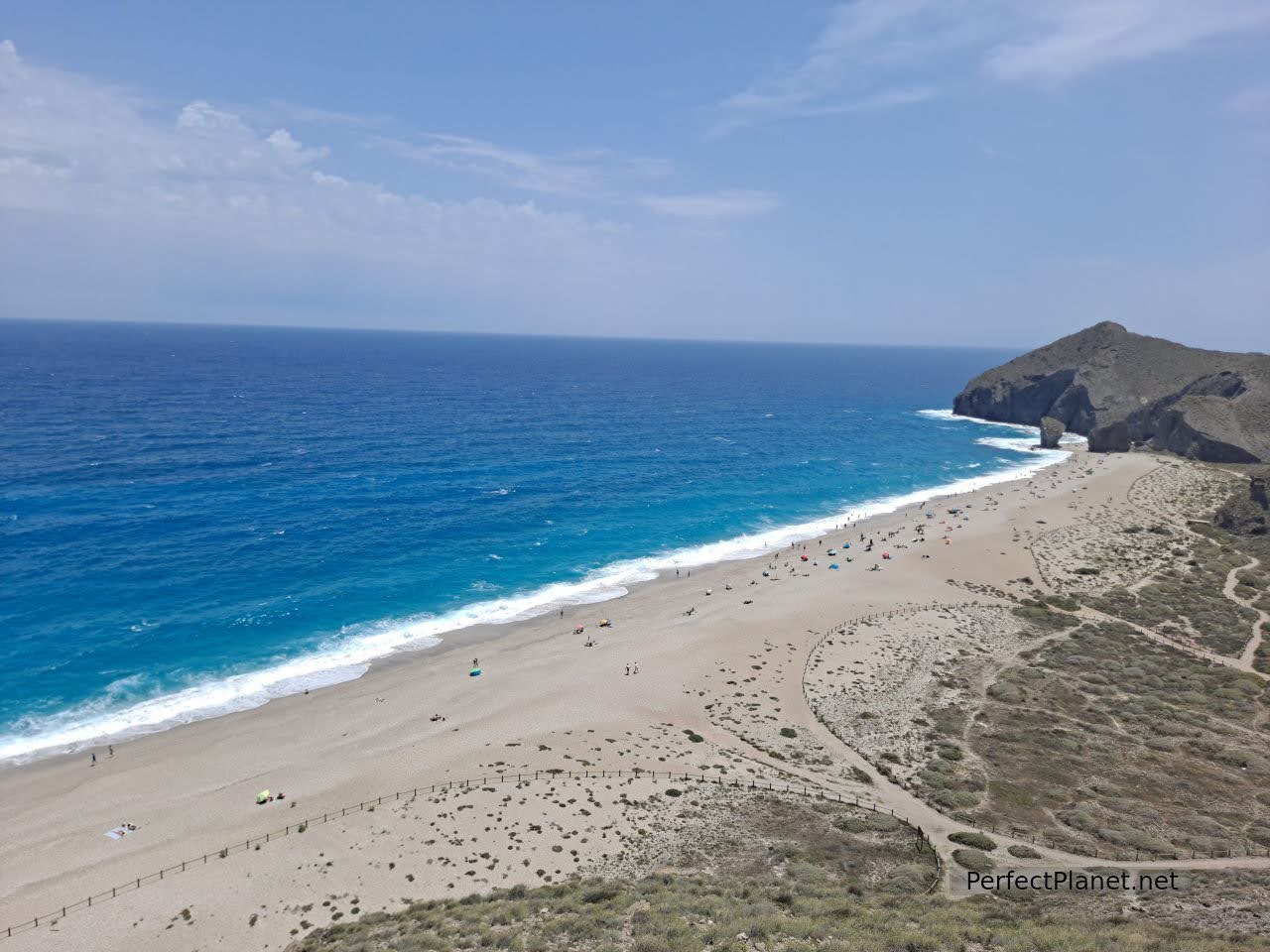
Dead beach
We invite you to discover it!
Indispensable Cabo de Gata. These are ten of the places you can't miss in the Cabo de Gata Nijar Natural Park:
2. Carboneras and the beach and viewponit of Muertos. Mesa de Roldán
3. Agua Amarga, beach of Cala de Enmedio and beach of Cala del Plomo
4. Escullos and Arco beach
5. La Isleta del Moro and Amatista viewpoint
6. Rodalquilar and el Playazo
7. Cabo de Gata Lighthouse and Sirenas reef
8. Domo del cerro de Vela Blanca and Cala Rajá
9. San José, Monsúl beach and Genoveses beach
10. Salinas
1. Mojácar
This beautiful coastal town is divided between Mojácar village and Mojácar beach.
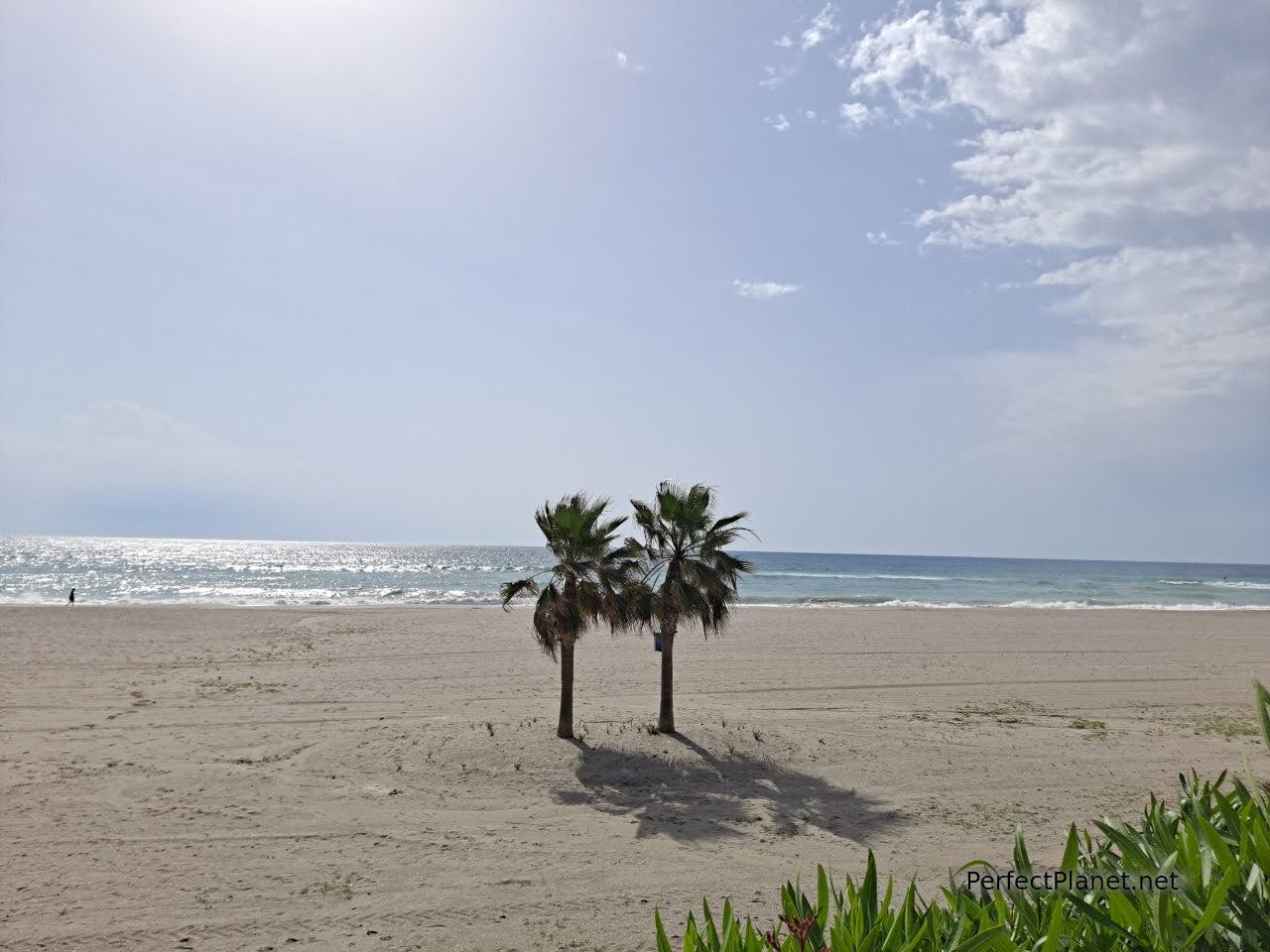
Mojácar beach
Mojácar village is situated at the top of the Sierra de Cabrera. A labyrinth of narrow streets full of life and white houses adorned with pretty flowers.
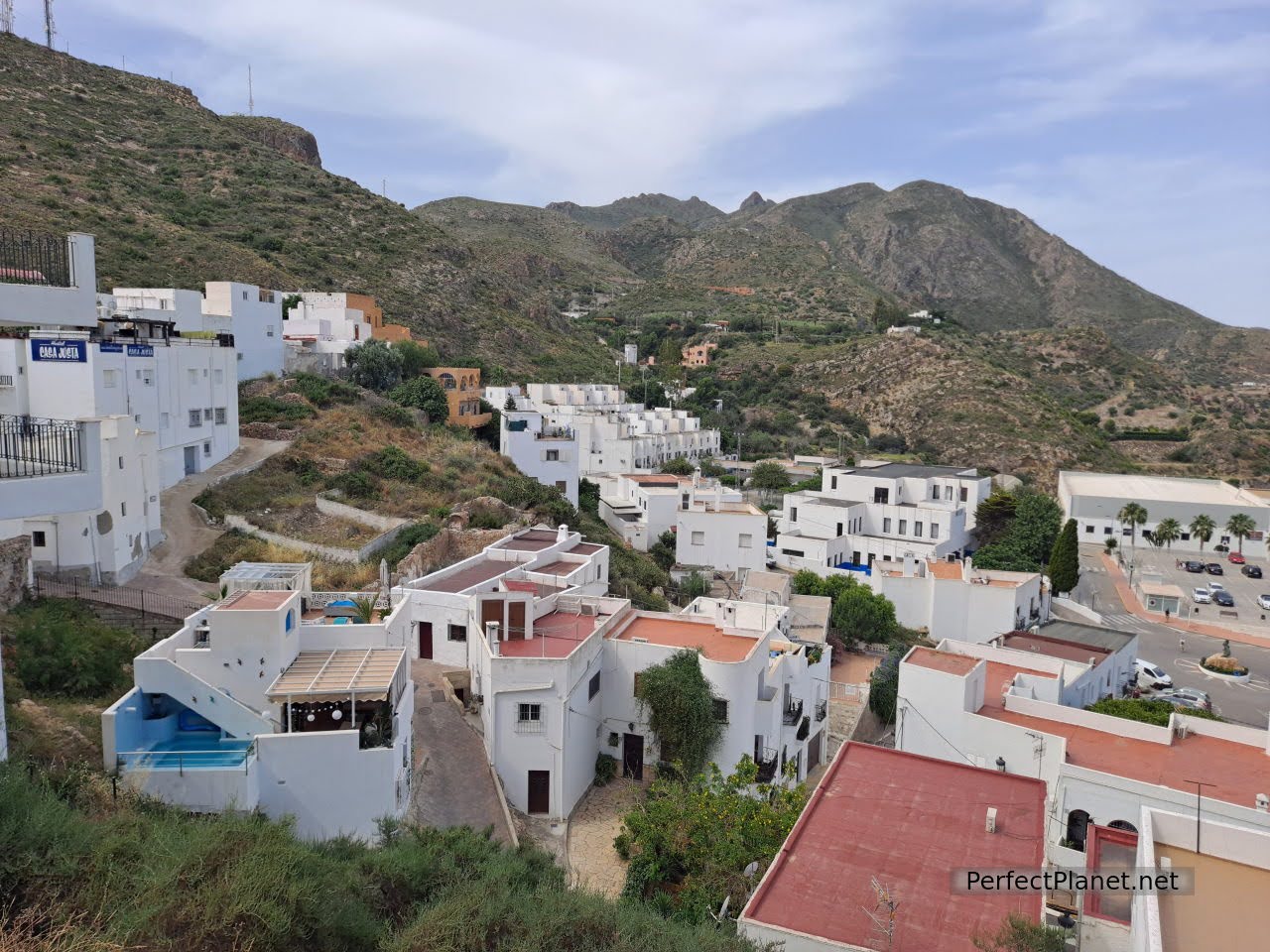
Mojácar village
A must on your visit to Mójacar:
1. Casa de la Canana Museum. Recreates the atmosphere of a traditional Mojácar house from the first half of the 20th century. The entrance fee is 3€/pax.
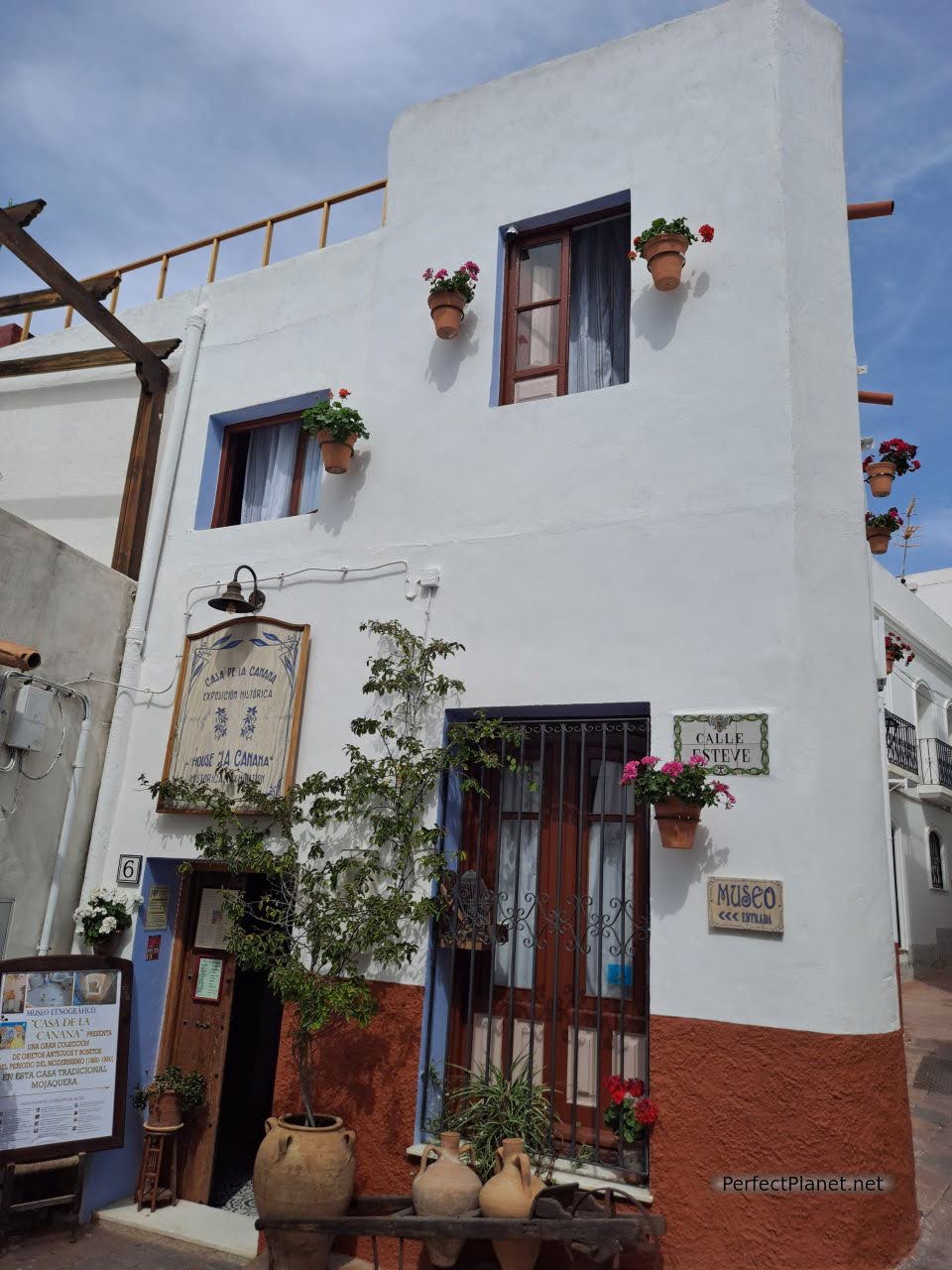
Casa de la Canana Museum
2. Calle de Enmedio. Narrow and long, this street is one of the most spectacular. The white houses, decorated with pretty flowers and curious doors, run through the centre of Mojácar.
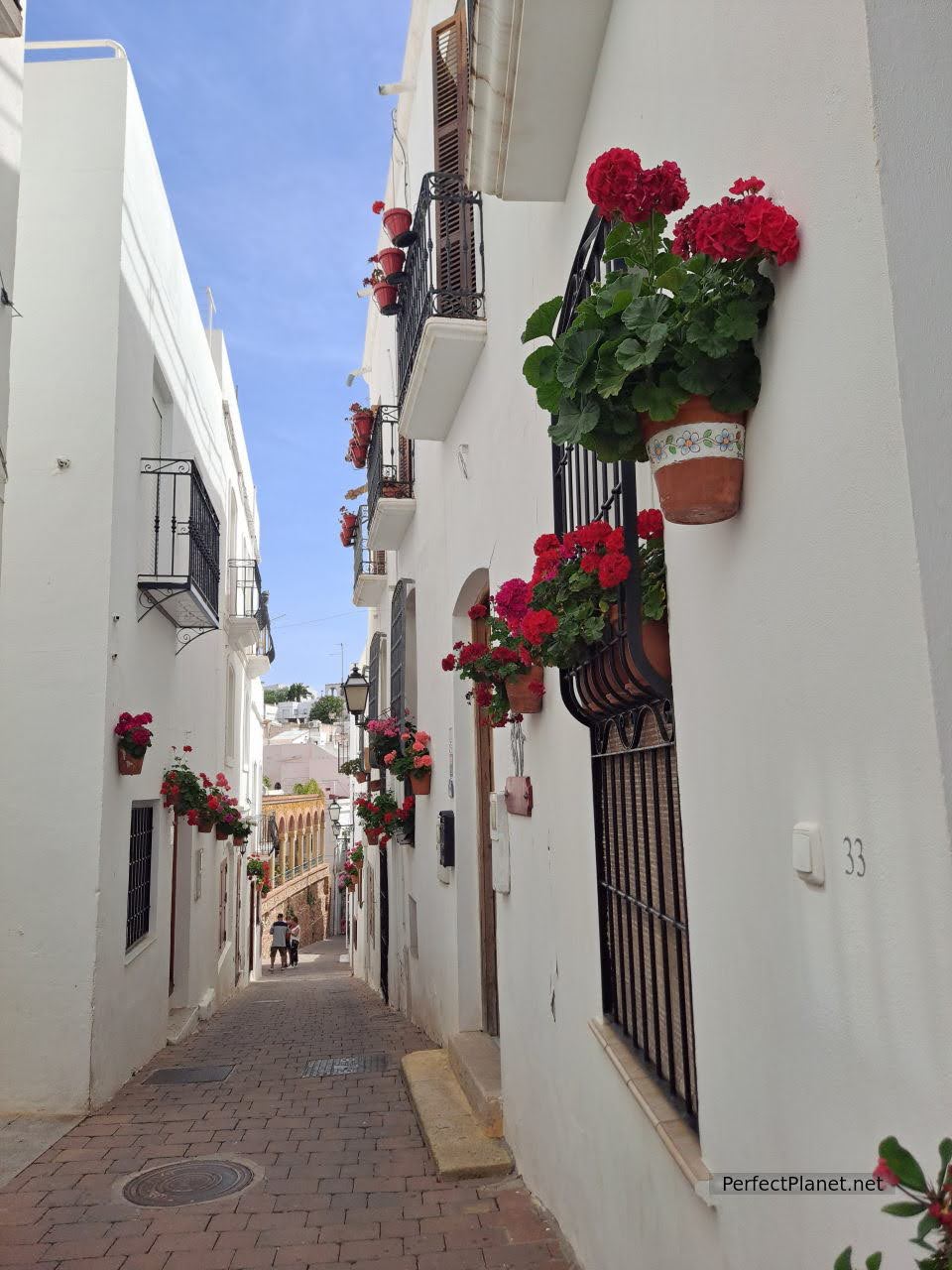
Enmedio street
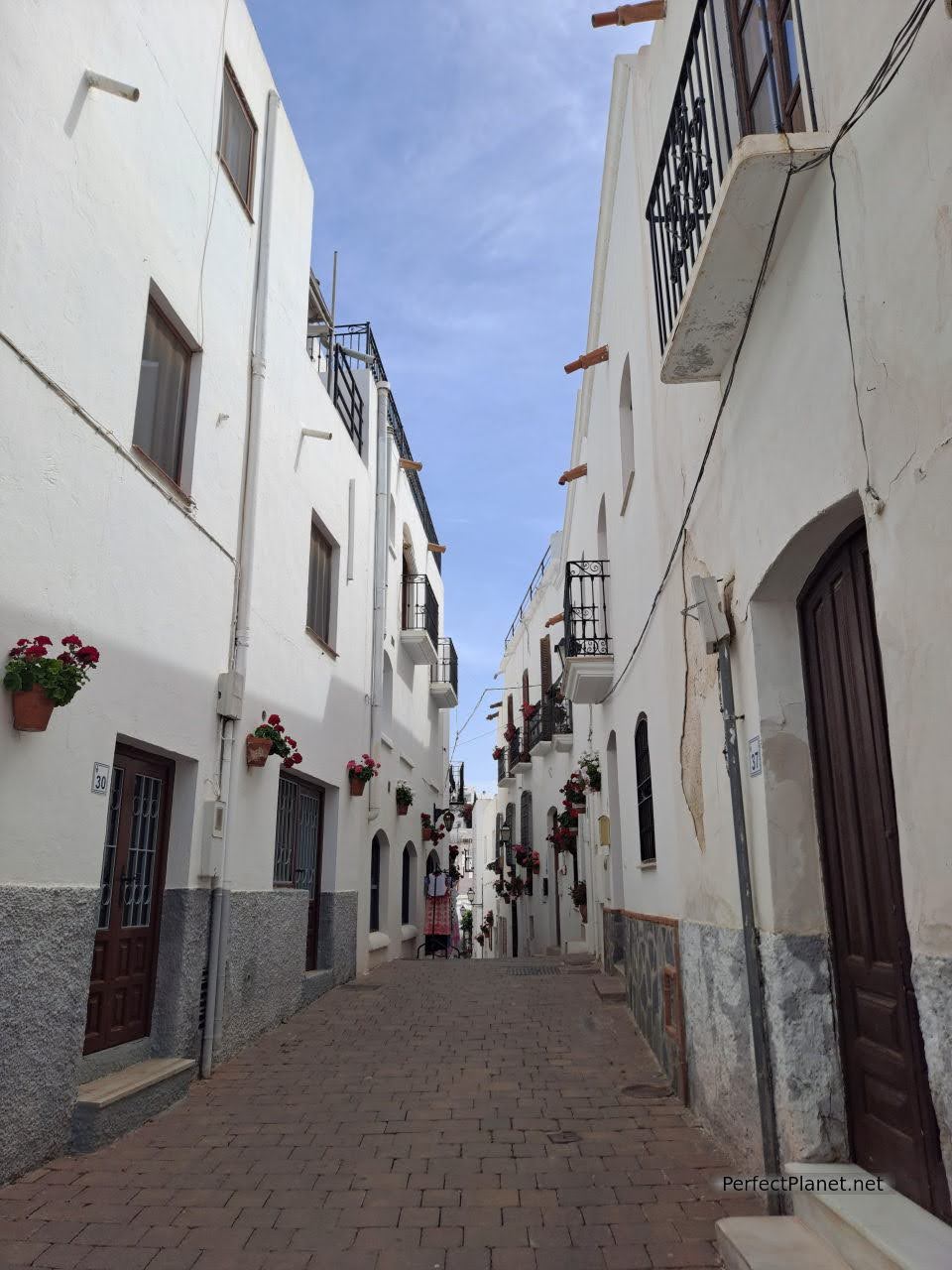
Enmedio street
3. Plaza del Parterre. At the foot of the Church of Santa Maria, this beautifully decorated and arcaded square is the perfect place to stop and refresh yourself. It is believed to have been an ancient Arab necropolis.
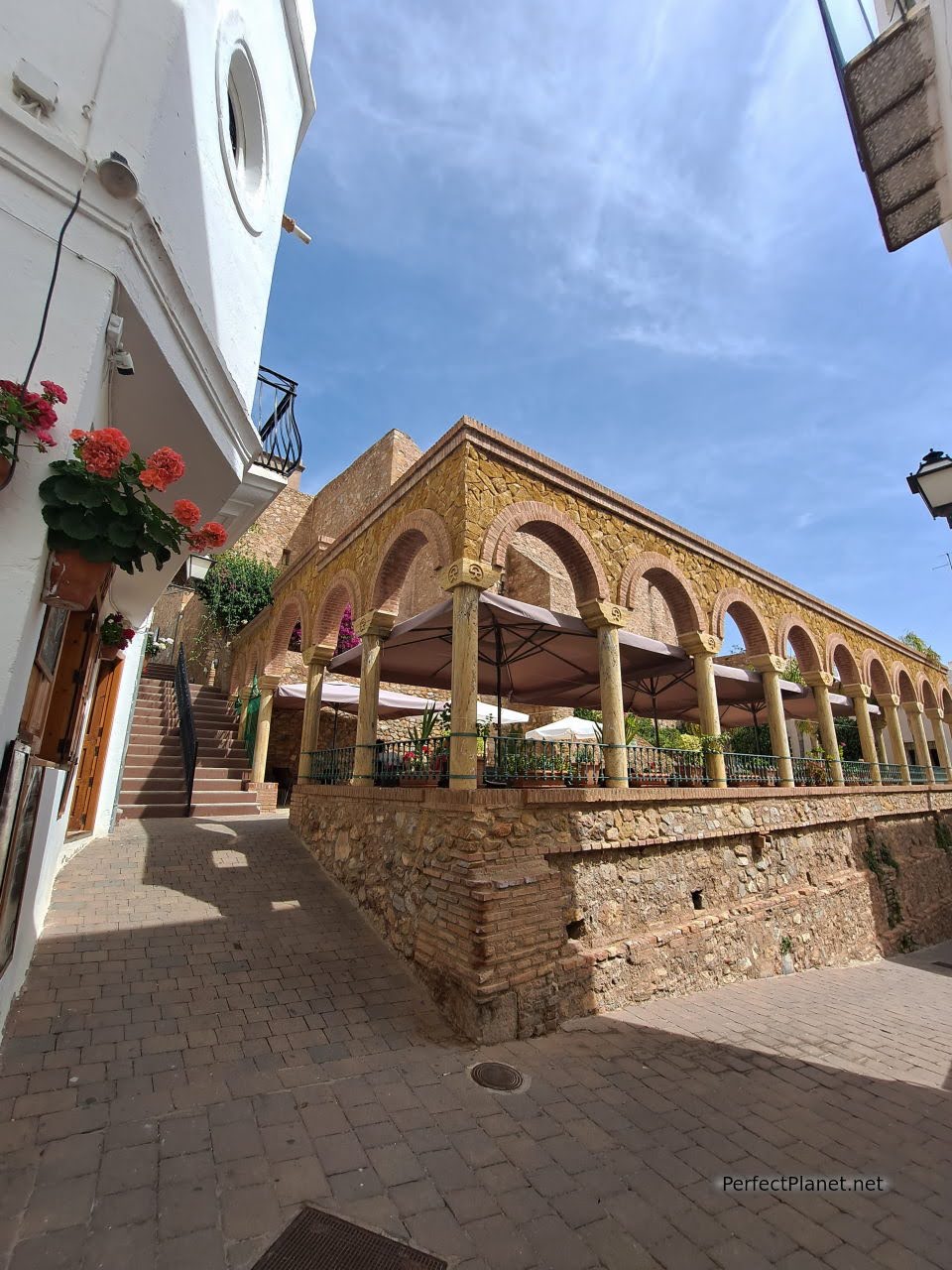
Parterre square
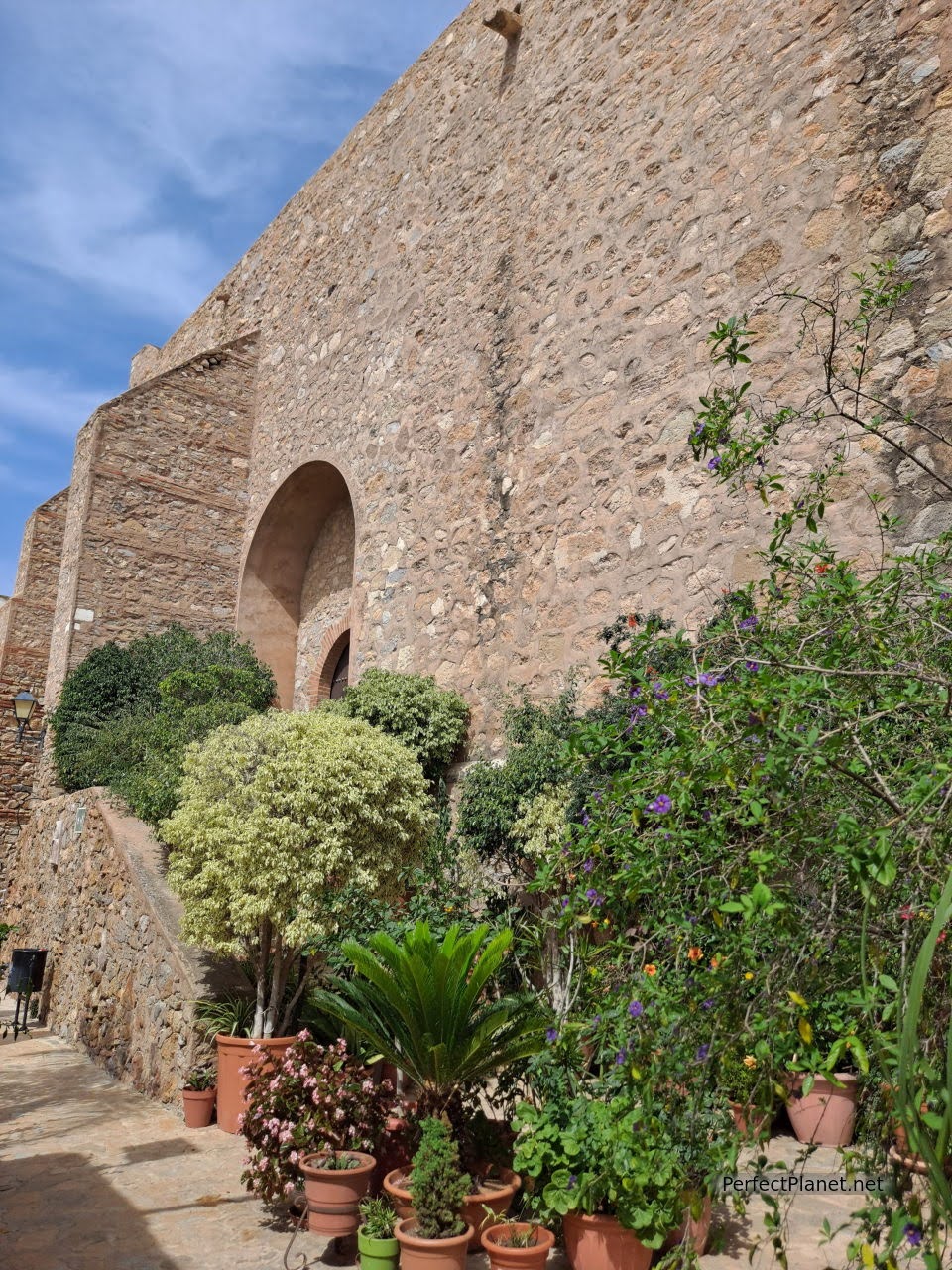
Parterre square
4. Santa María Church, The 16th century building is located on the site of an old Arab mosque. In the square on the main façade there is a sculpture known as the Mojaquera, which represents the women of the village who used to bring water from the fountain.
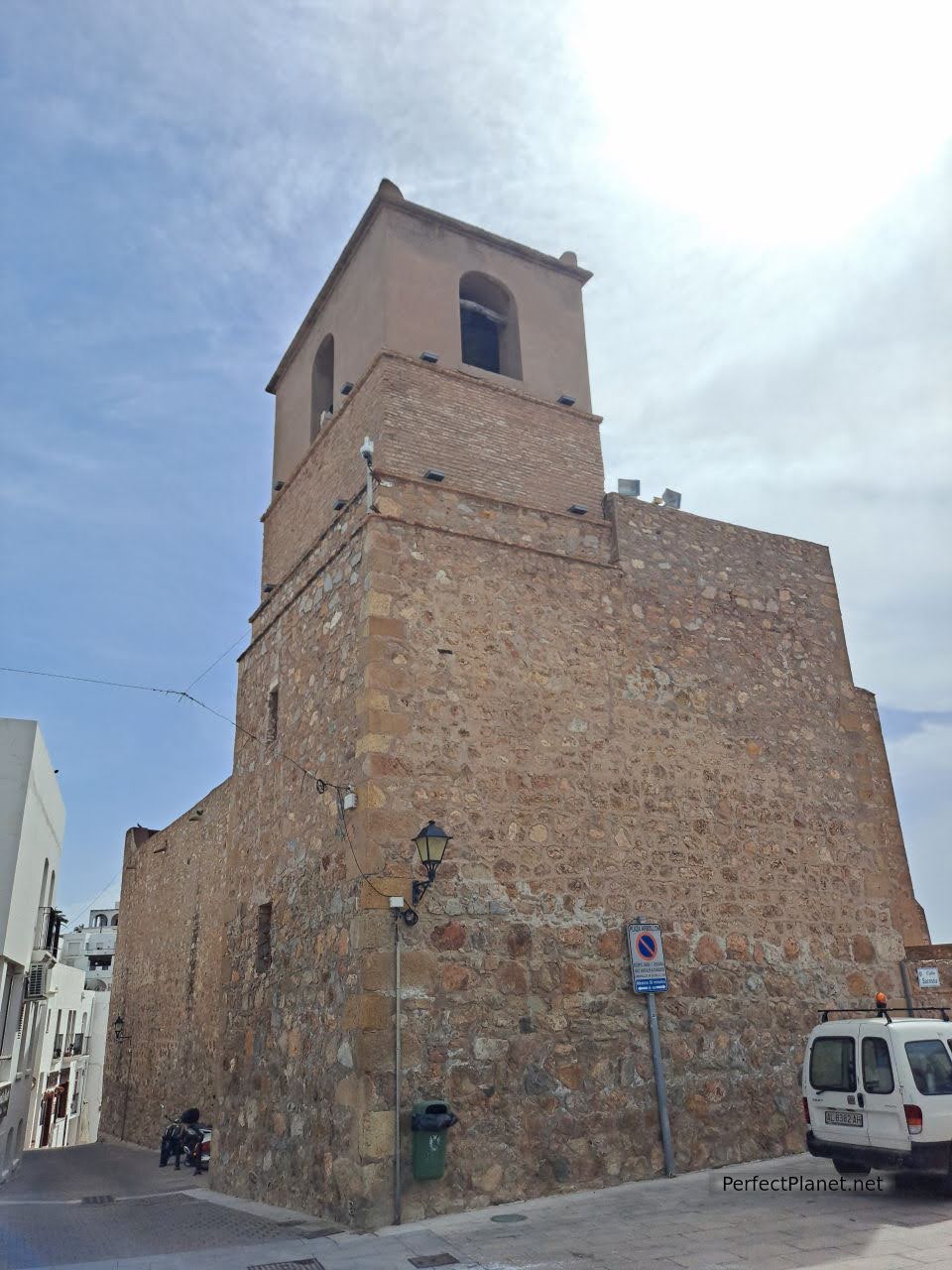
Santa María church
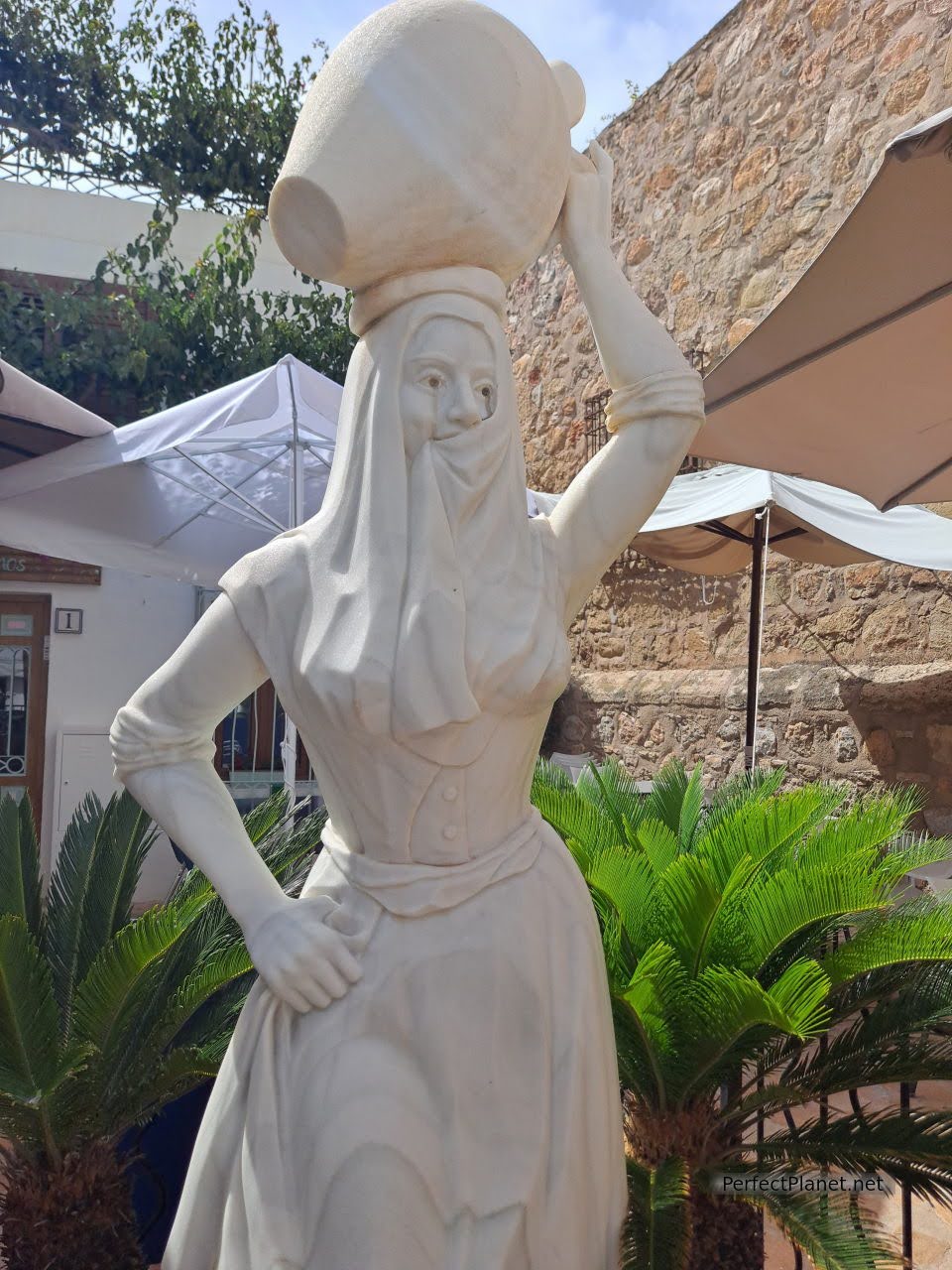
La Mojaquera
5. Hay varios miradores. The one in the Castle or the one in the Plaza Nueva offer impressive views of the area.
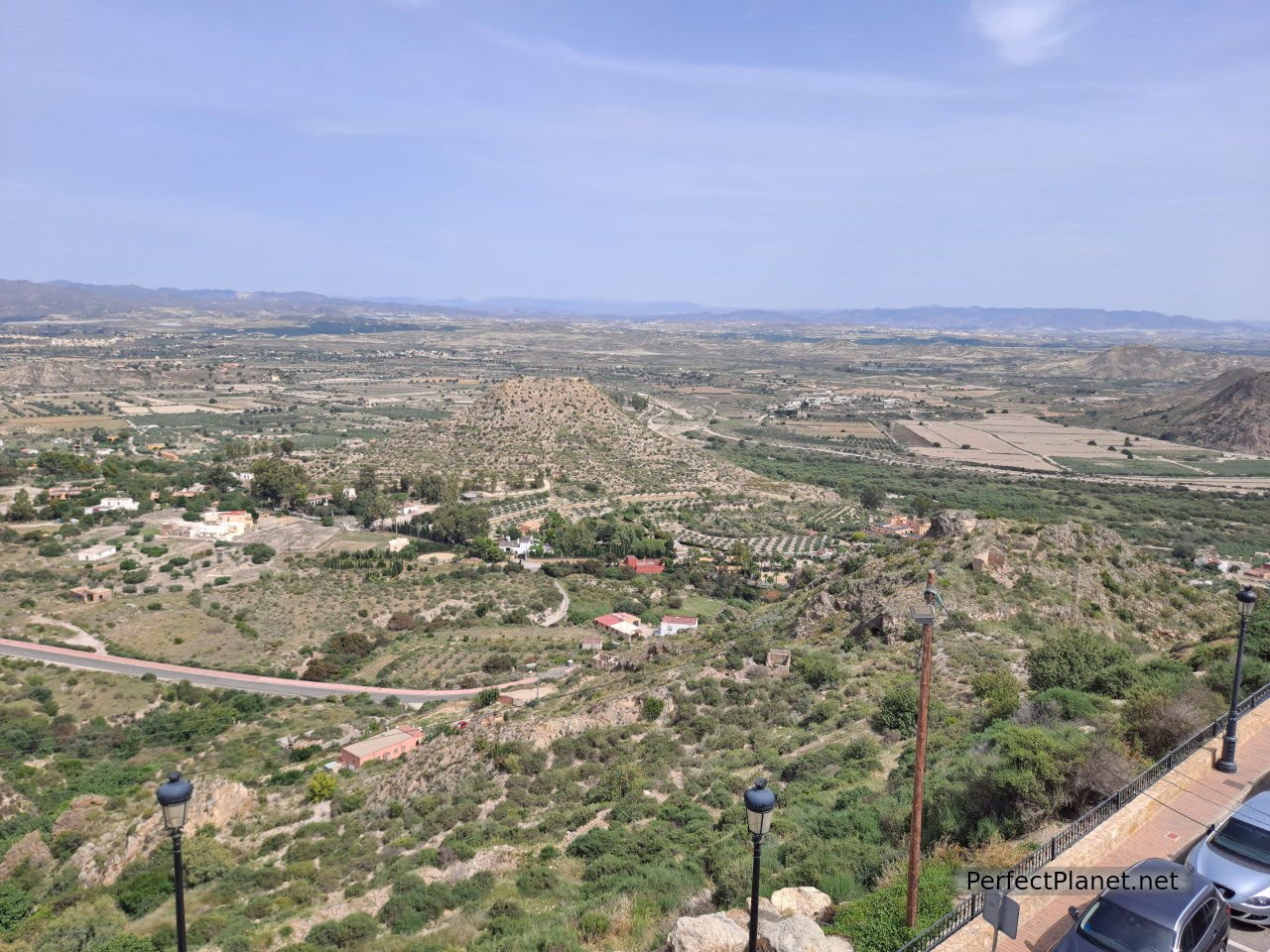
Views from viewpoint Plaza Nueva
Behind the Plaza Nueva, surrounded by bars and restaurants, there is a small shopping centre with typical local products and souvenirs.
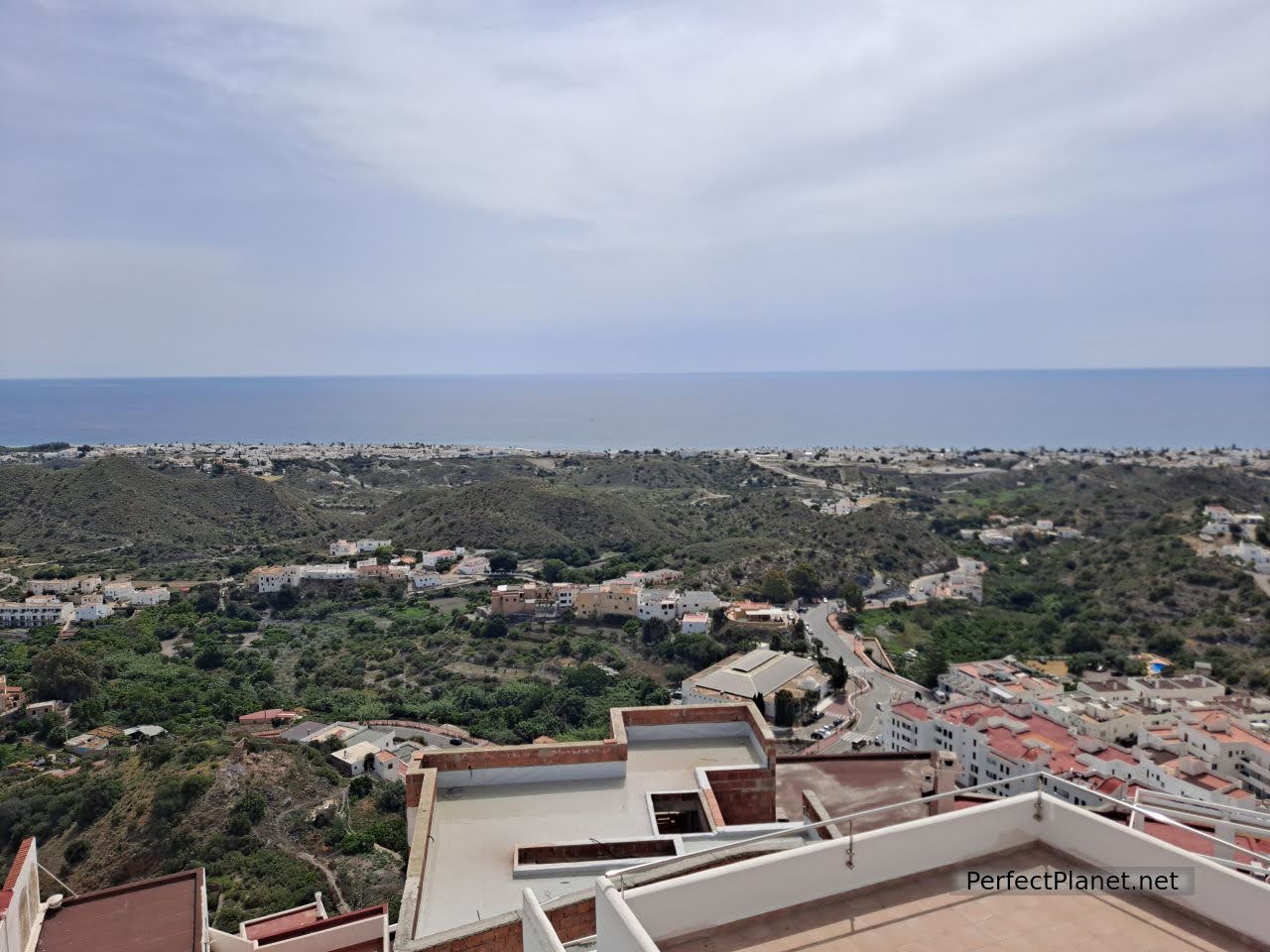
Views from viewpoint Castle
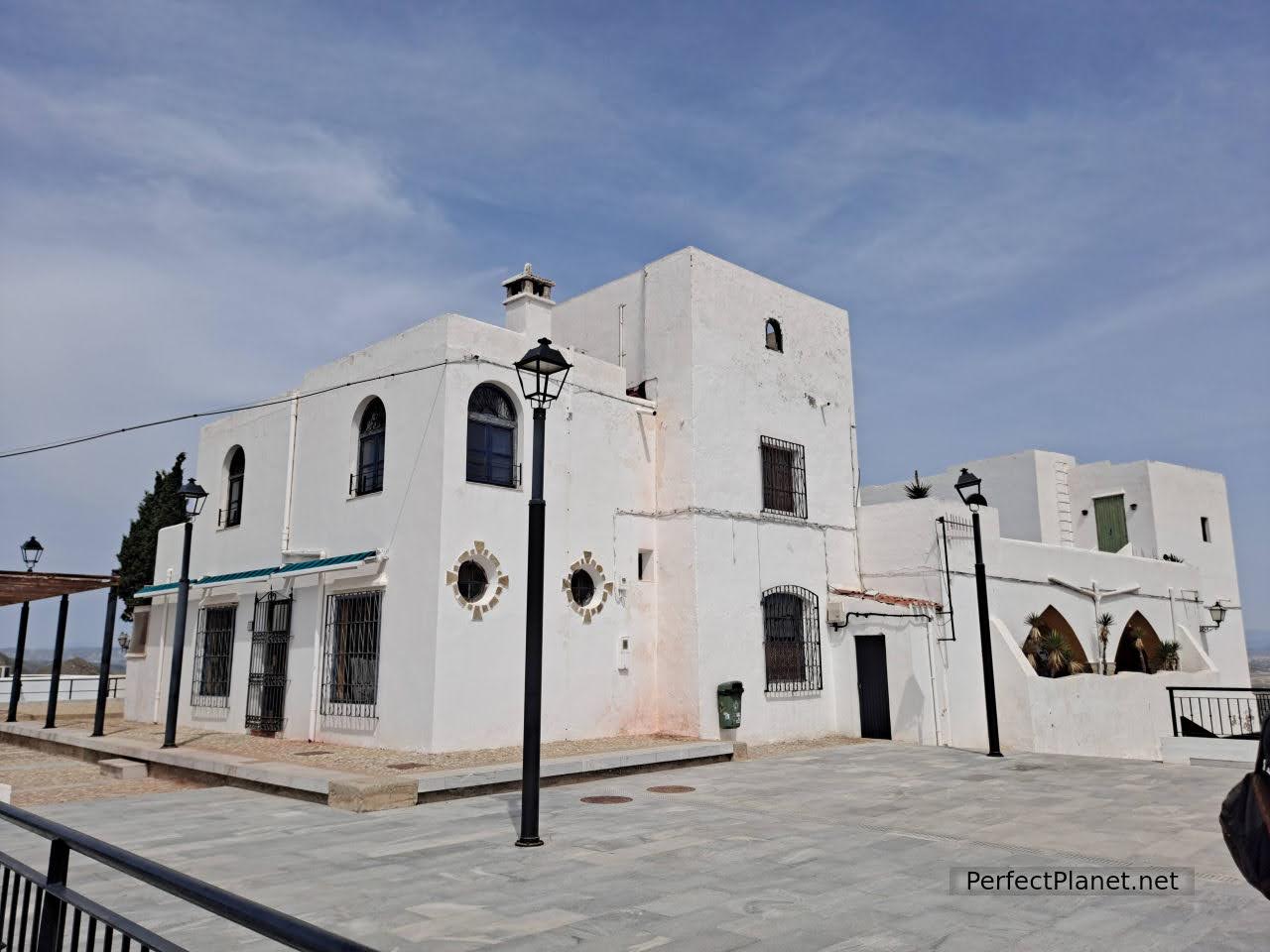
Castle
6. Council square. A beautiful square with trees under which to rest and cool off from the intense heat.
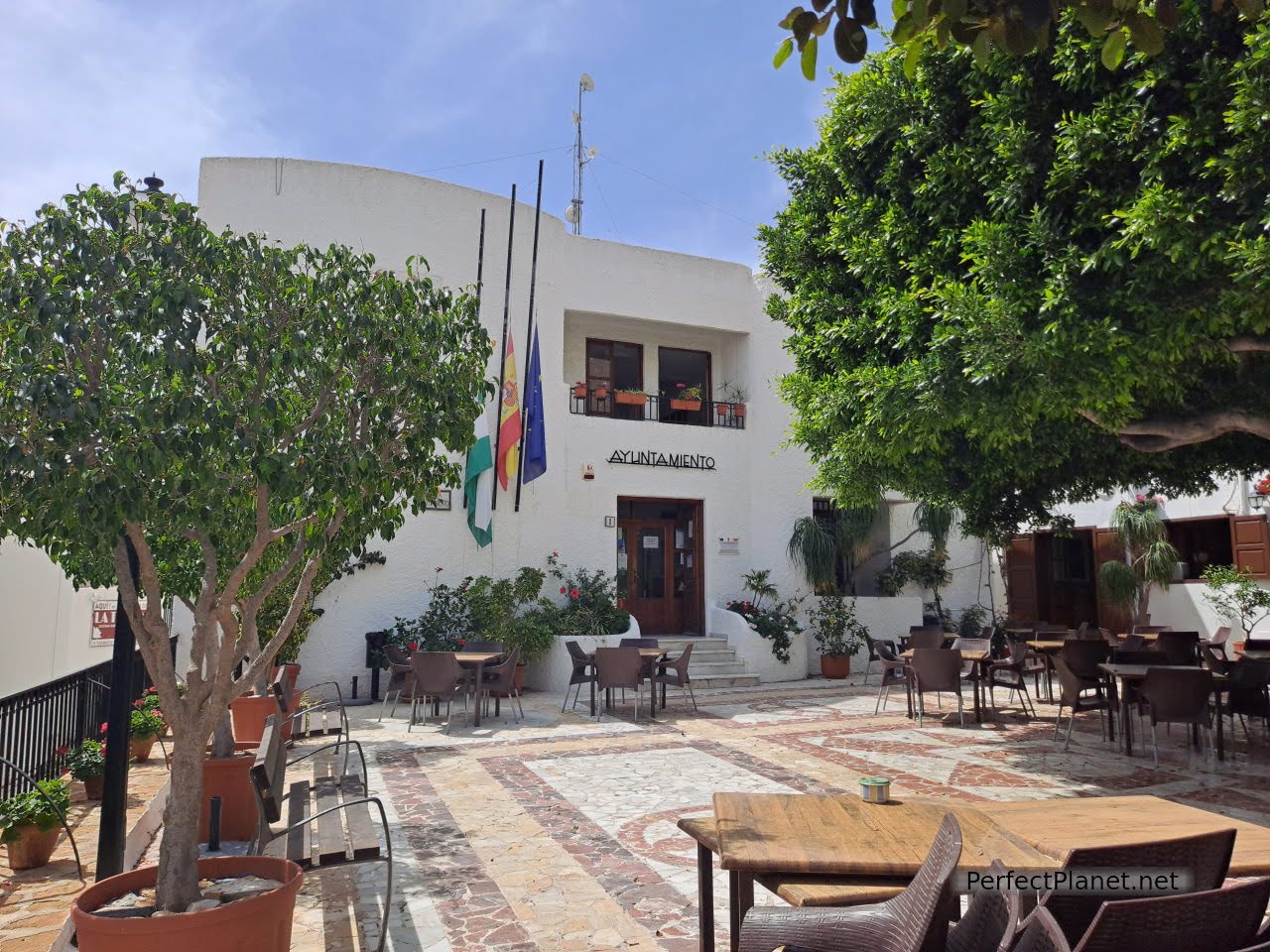
Council square
7. Puerta de la Ciudad, an old access to the city wall formed by a semicircular arch is one of the most beautiful corners of the city. Beautiful.
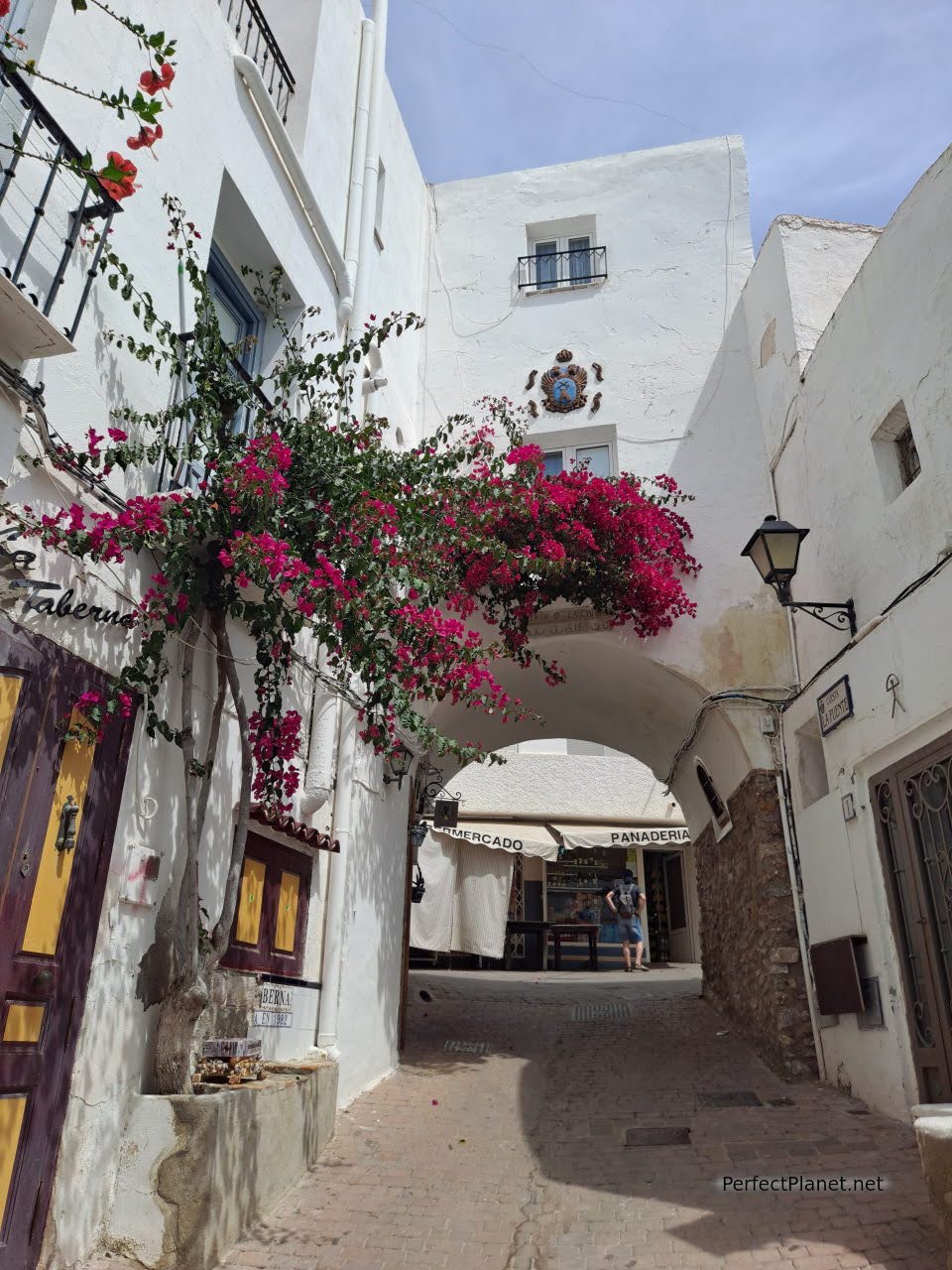
Door of the Town
8. Calle del Arrabal. This is another of the most emblematic streets, which can be reached through the Puerta de la Ciudad.
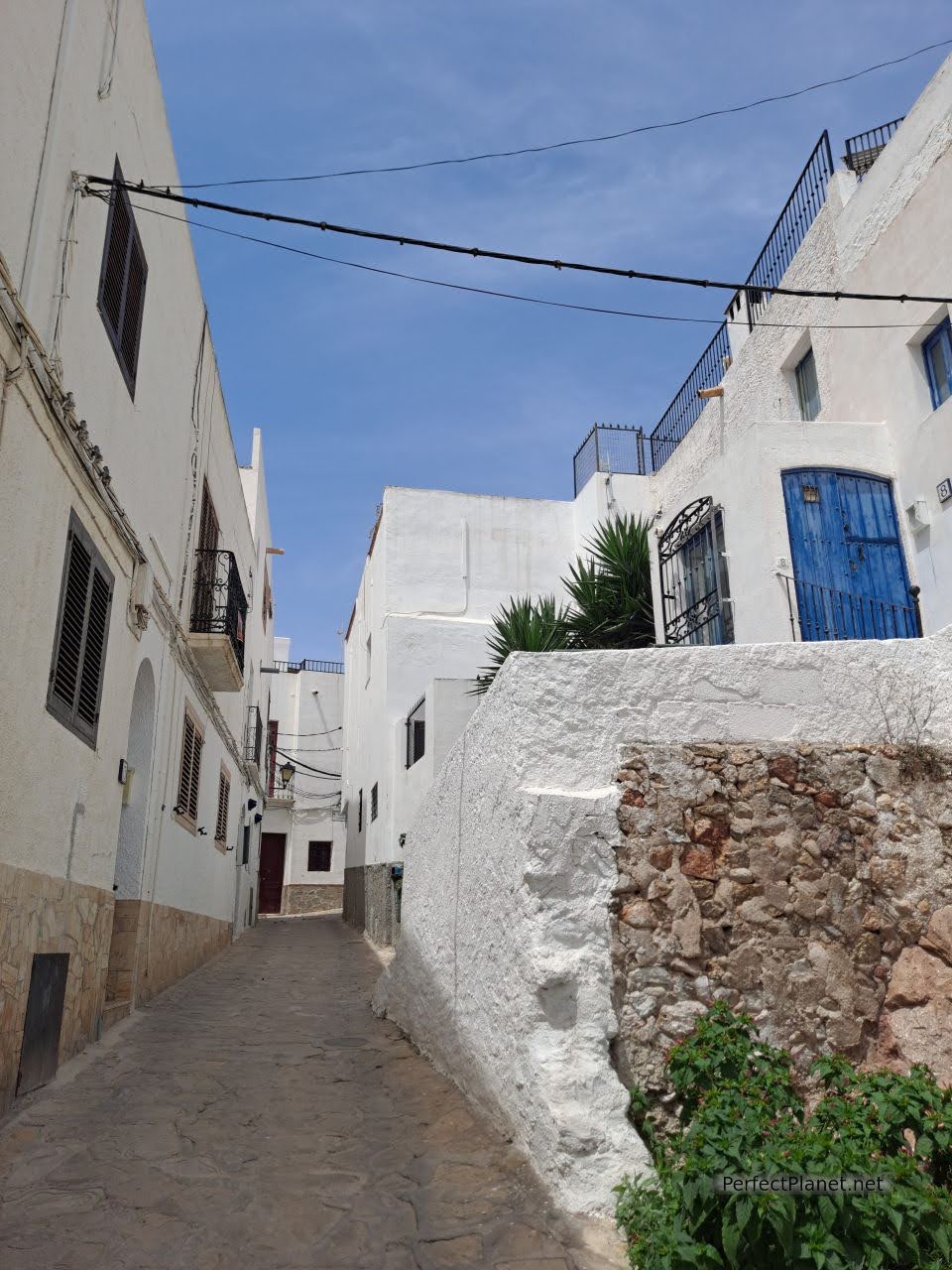
Arrabal street
Tip. If you have time, visit the neighbouring town of La Garrucha where you can try the genuine Garrucha prawn, highly prized and sought after in the area.
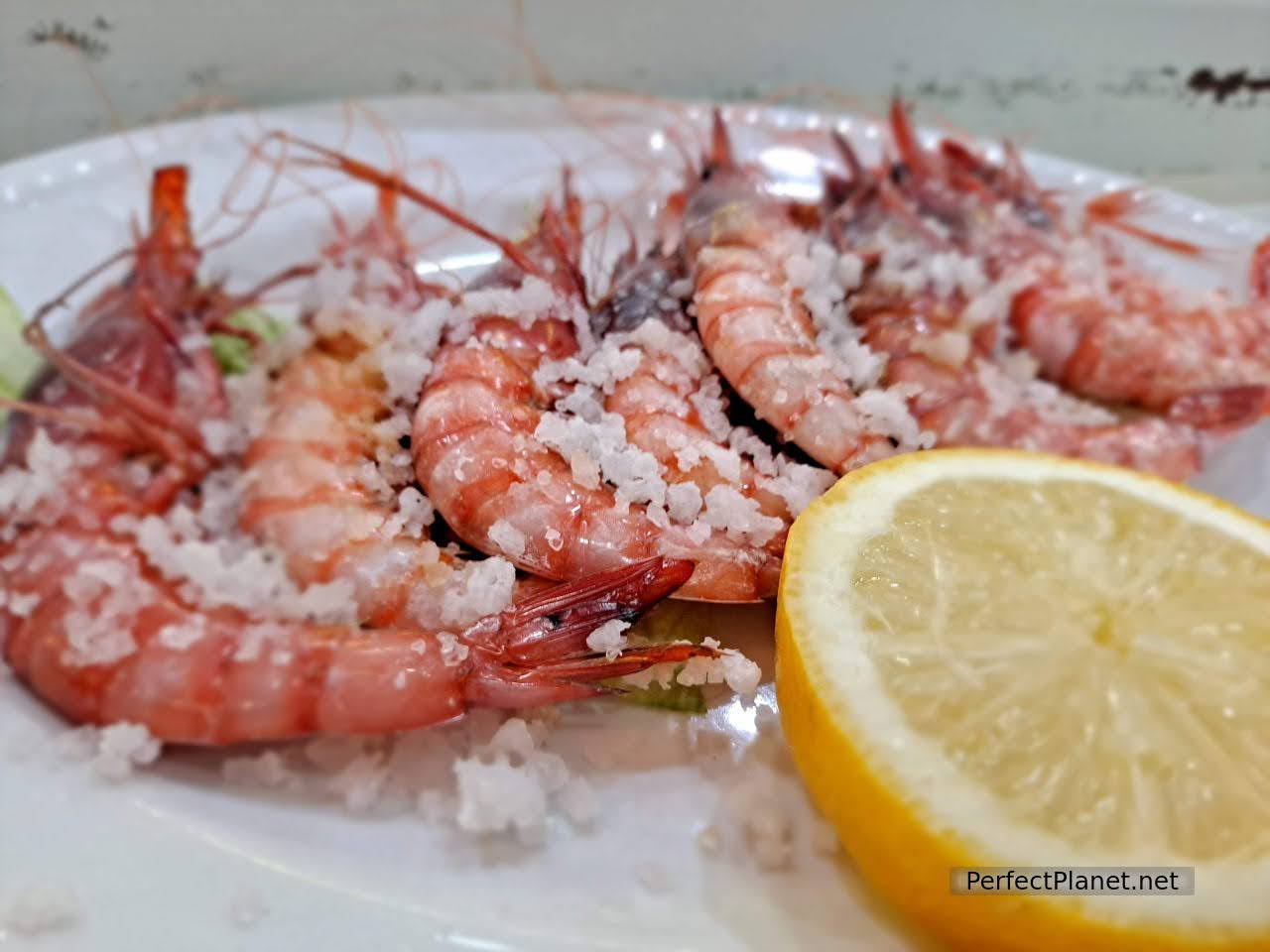
Garrucha prawn
The best place to try it is the Restaurant El Rincón del Puerto, they make it delicious, you won't regret it. We recommend you try it at the bar because they say that the price at the table goes through the roof.
Price: portion of 200 grams 26€. Brutal.
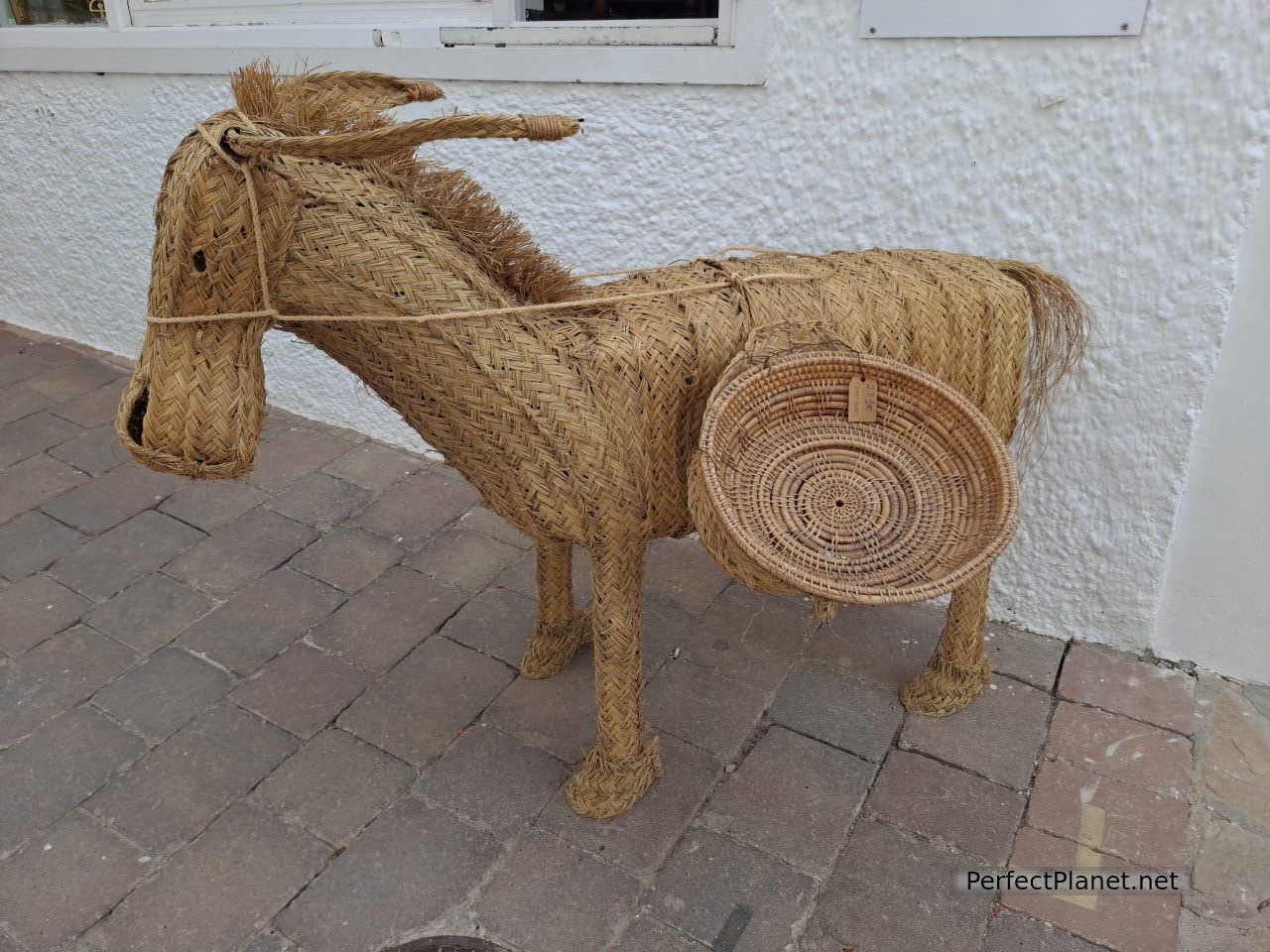
Mojácar
How to get there. Mojácar village has several free public car parks in the upper part of the village. However from Mojácar beach you can get there by public bus if you prefer (line 10 and line 2).
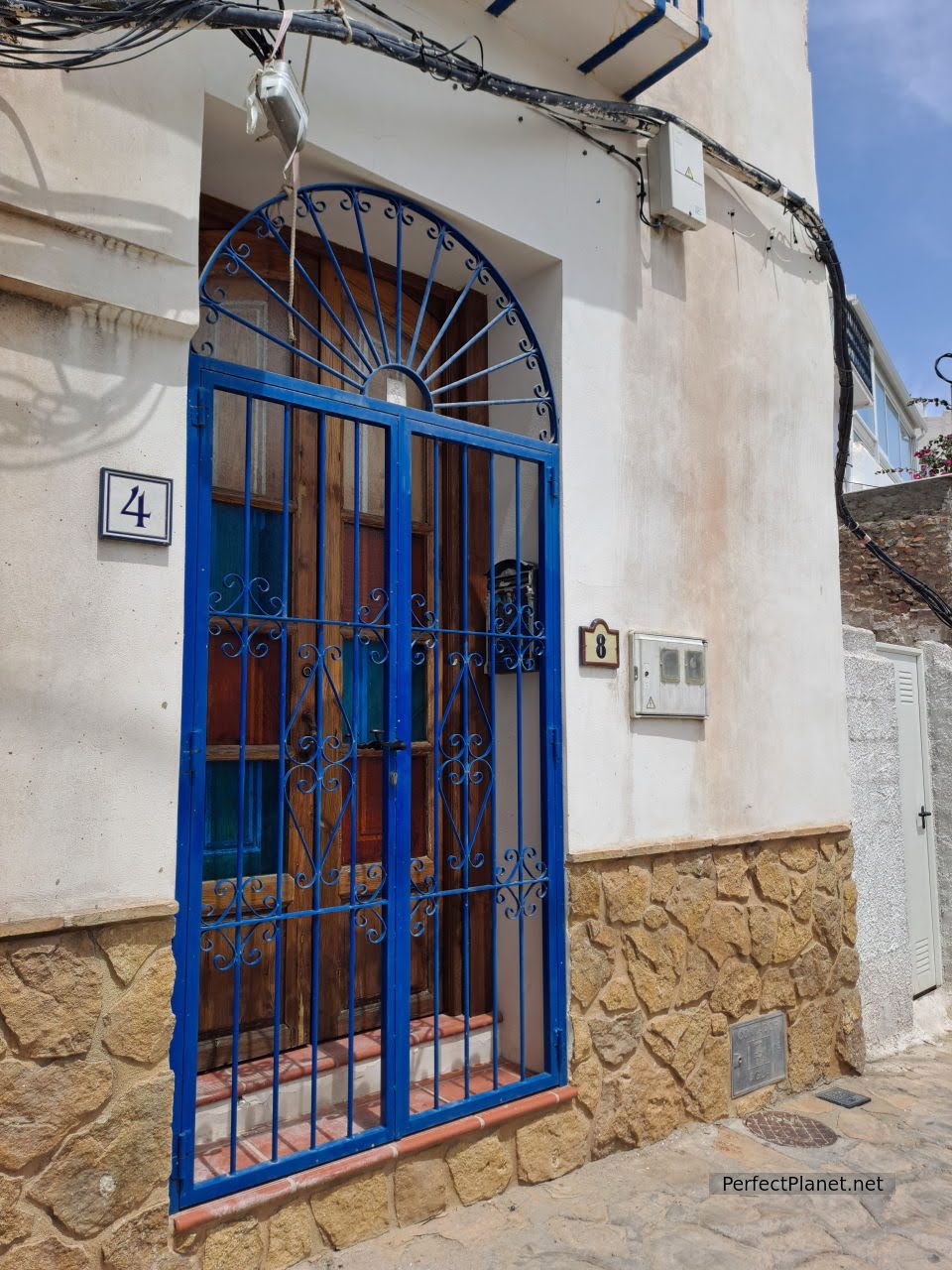
Mojácar
Accommodation. We stayed in Mojacar playa at the Spirit of Mojacar flats through Booking. The flat is part of a complex with private pool. Located just one kilometre from the beach, it has a terrace, a bedroom, sofa bed, kitchen and bathroom, wifi, towels and garage. The cleanliness is perfect. Price: 53€/night.
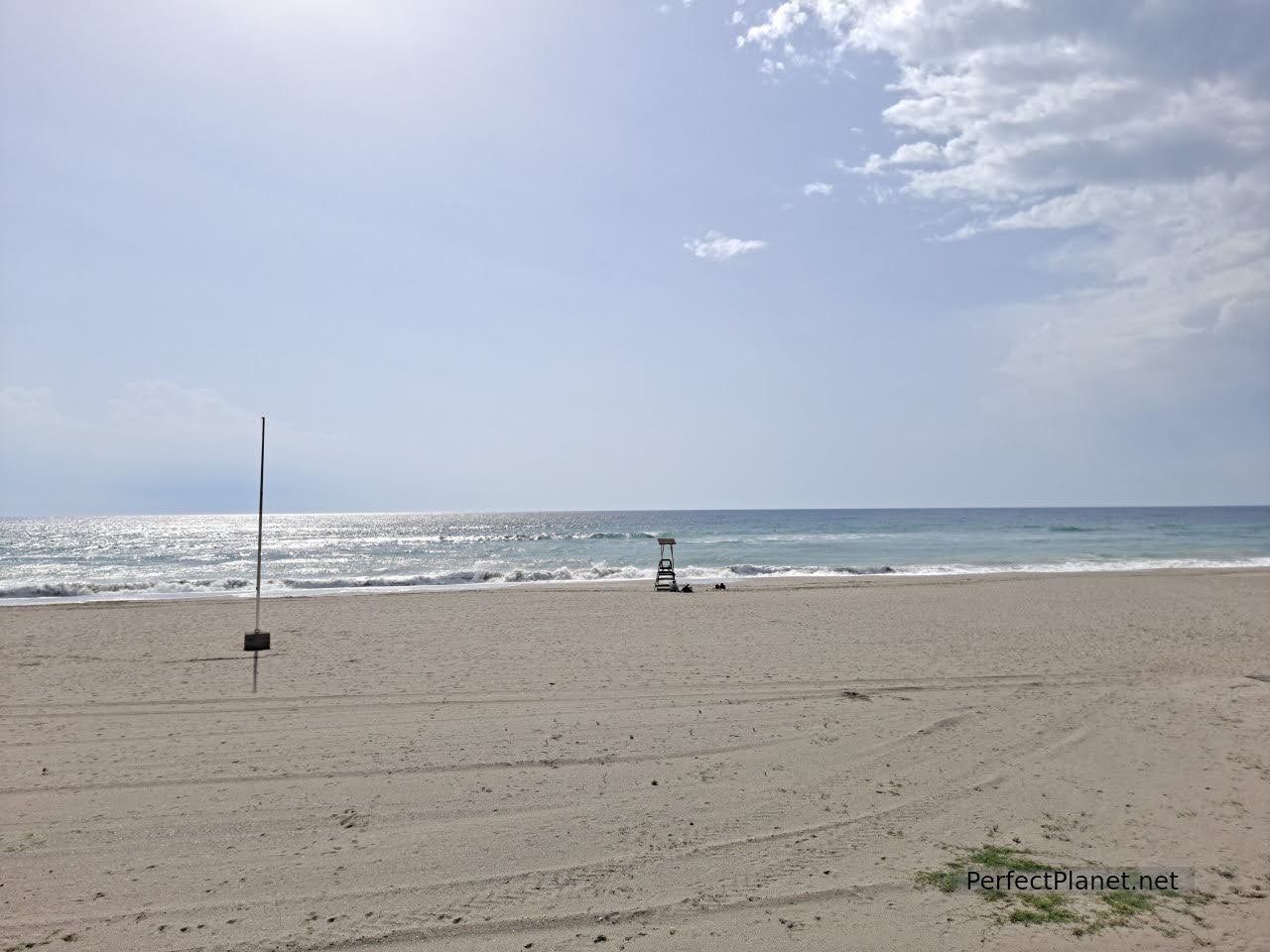
Mojácar beach
The beach of Mojácar is divided into several stretches with different names, the closest to the flat is Cueva del Lobo beach, others nearby are La Parata or Las Ventanicas. Restaurants, beach clubs, discotheques, shops, supermarkets, laundry... you have all the services.
For lunch and evening entertainment we recommend Bar el Cid with live music on weekends. To eat a paellita Chiringuito Aku Aku. Fusion food at Arlequino restaurant. And in the nearby town of Vera Maraú Beach Club, a must for celebrities and celebrities.
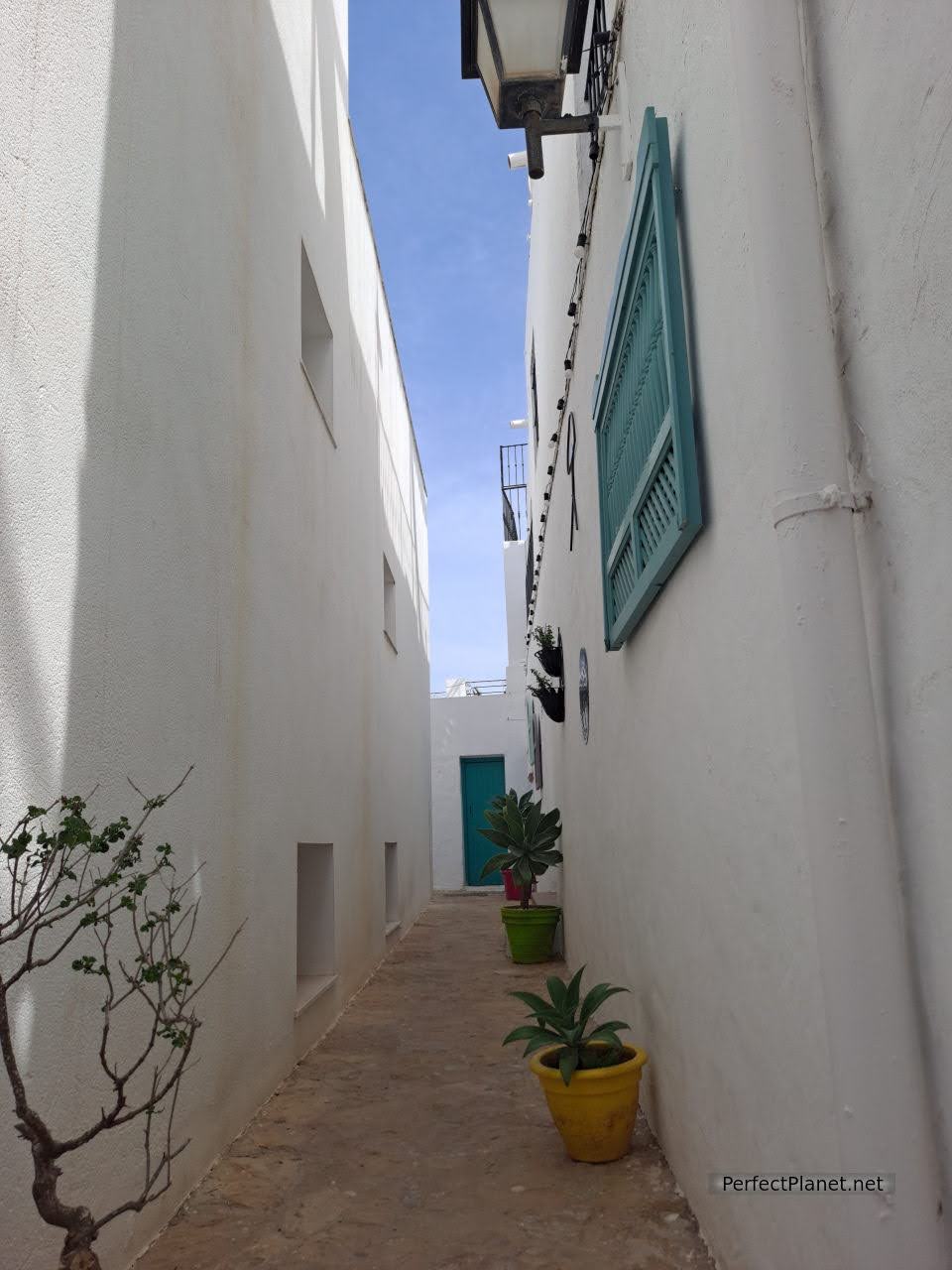
Mojácar
In Mojácar town the pizzeria Pulcinella has a terrace with views.
2. Carboneras, viewpoint and beach of Muertos and Mesa de Roldán
Heading south from Mojácar beach along the coastal road (AL-5107) you will find several beaches such as Macenas or El Lance, less built up than their neighbours in Mojácar. The Torre or Castillo de Macenas, a military structure in the shape of a horseshoe for defence against piratical invasions, stands out. The views of the wild and practically deserted beach are very beautiful. It has good access and several car parks.
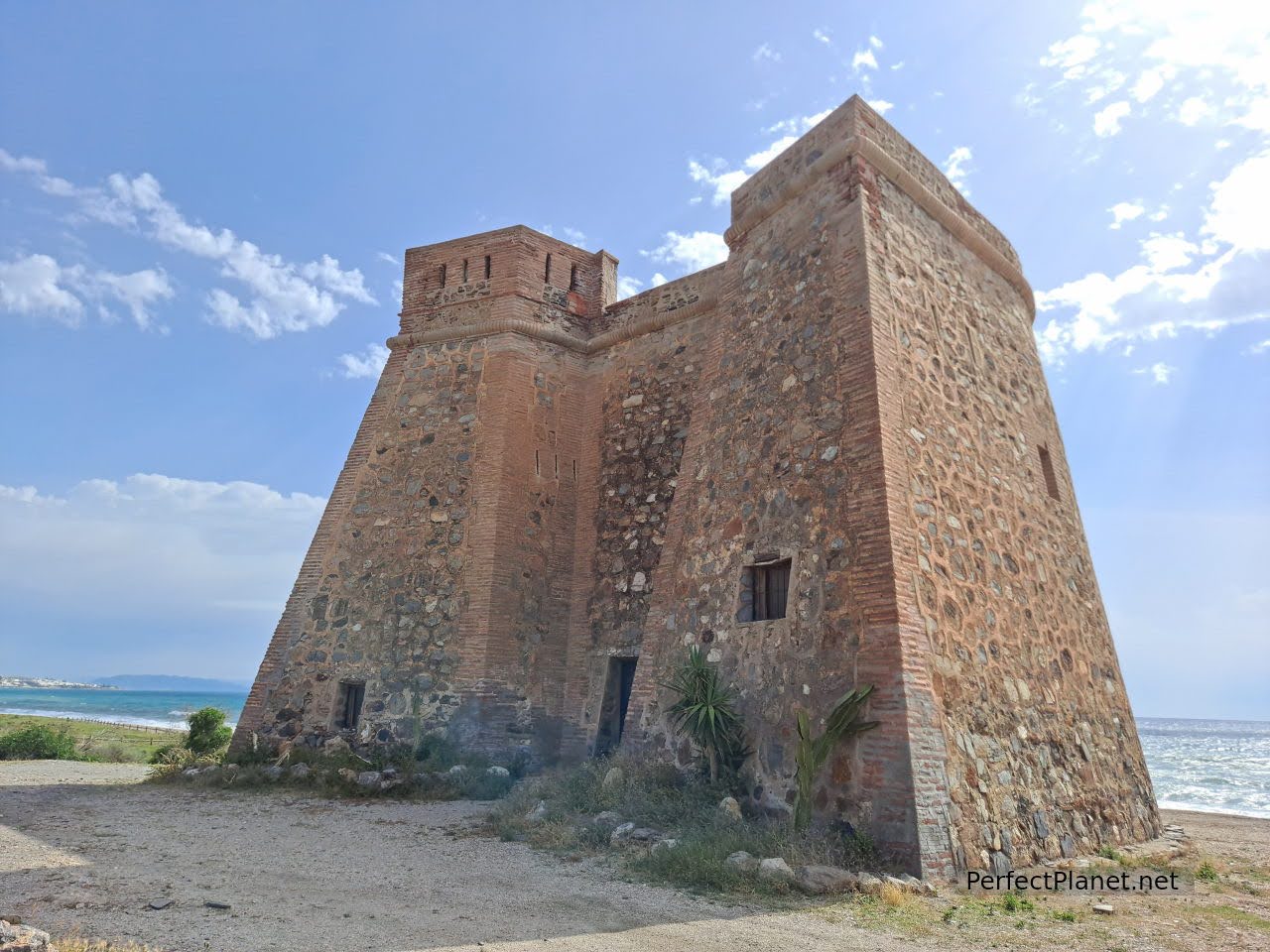
Macenas Tower
Continuing along this road in the direction of Carboneras we find on the left hand side the viewpoint of La Granatilla which offers spectacular views of the rugged coastline.
A kilometre further on is the viewpoint of El Lance and El Algarrobico with stunning views of the coast and the monstrous construction pending demolition near the beach of El Algarrobico.
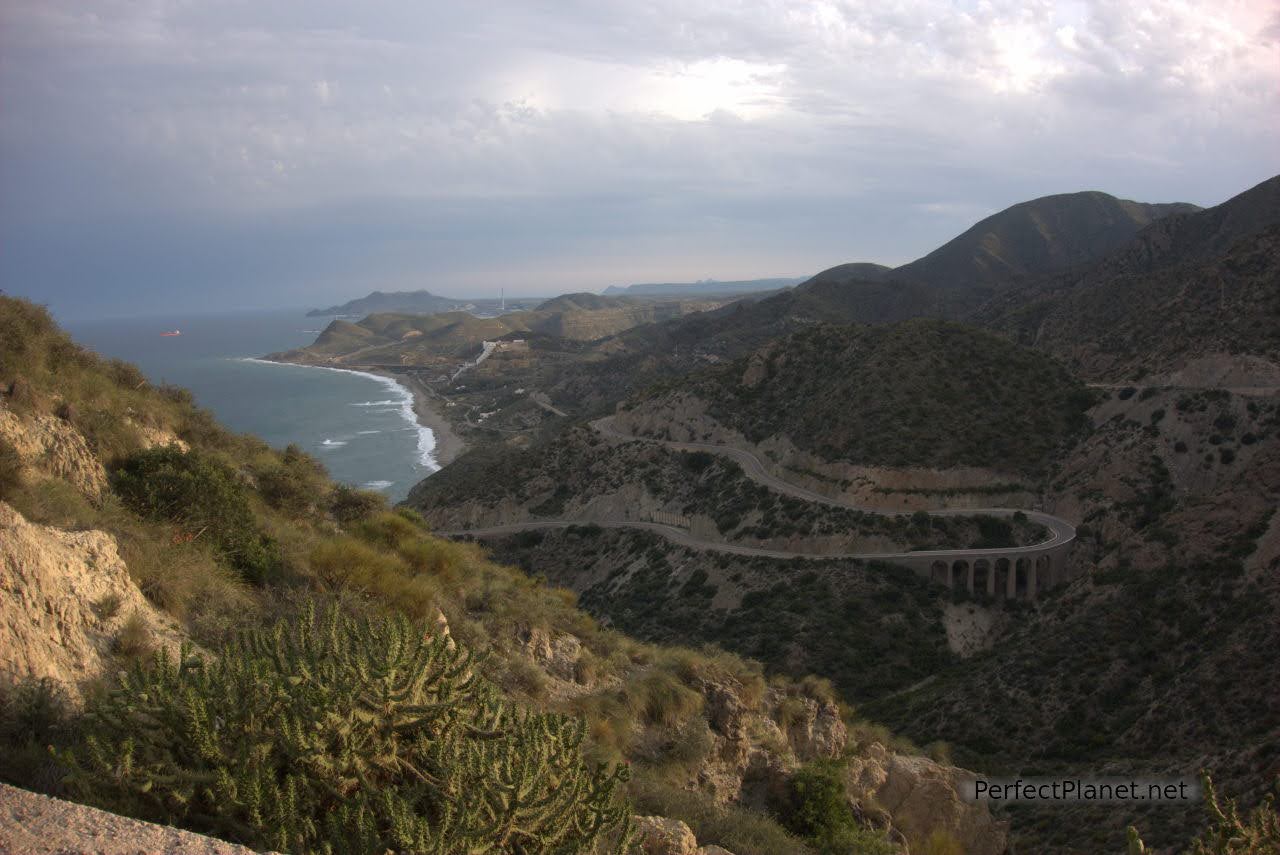
Viewpoint of La Granatilla
This project, which housed more than two hundred rooms, has generated a lot of controversy for not respecting the coastal law and the environmental impact it has had on the area. One of the biggest urban development scandals still awaiting demolition.
A few kilometres away is the town of Carboneras.
Carboneras is a small coastal town whose urban centre is excluded from the Park's protection due to its industrial activity. A cement factory, a thermal power station and the largest desalination plant in Europe.
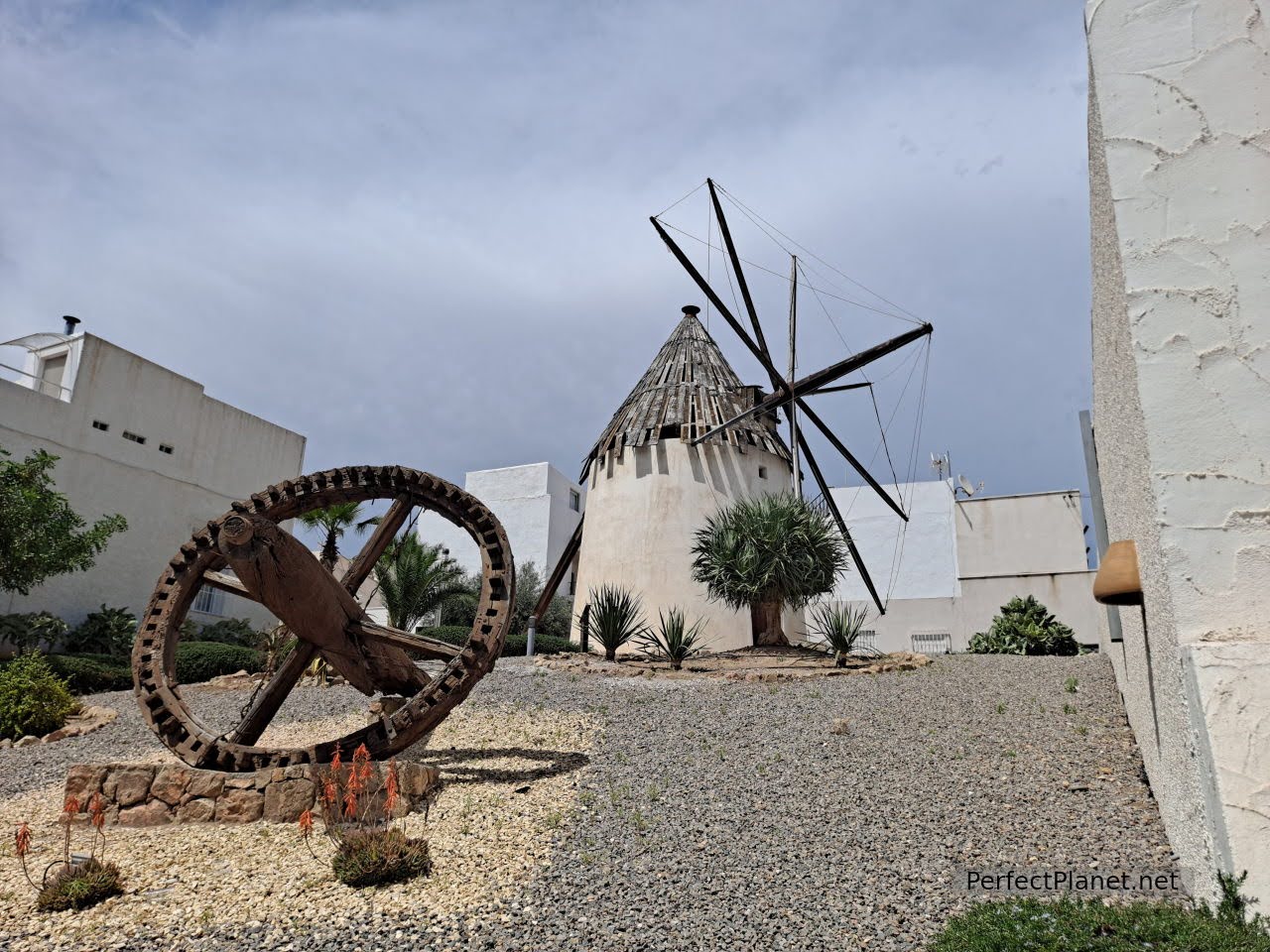
Windmill
This fishing village of whitewashed houses is home to one of the most important sea markets in Almeria. Highlights include the Castle of San Andrés, the Andalusian Park, the Windmill and its interpretation centre.
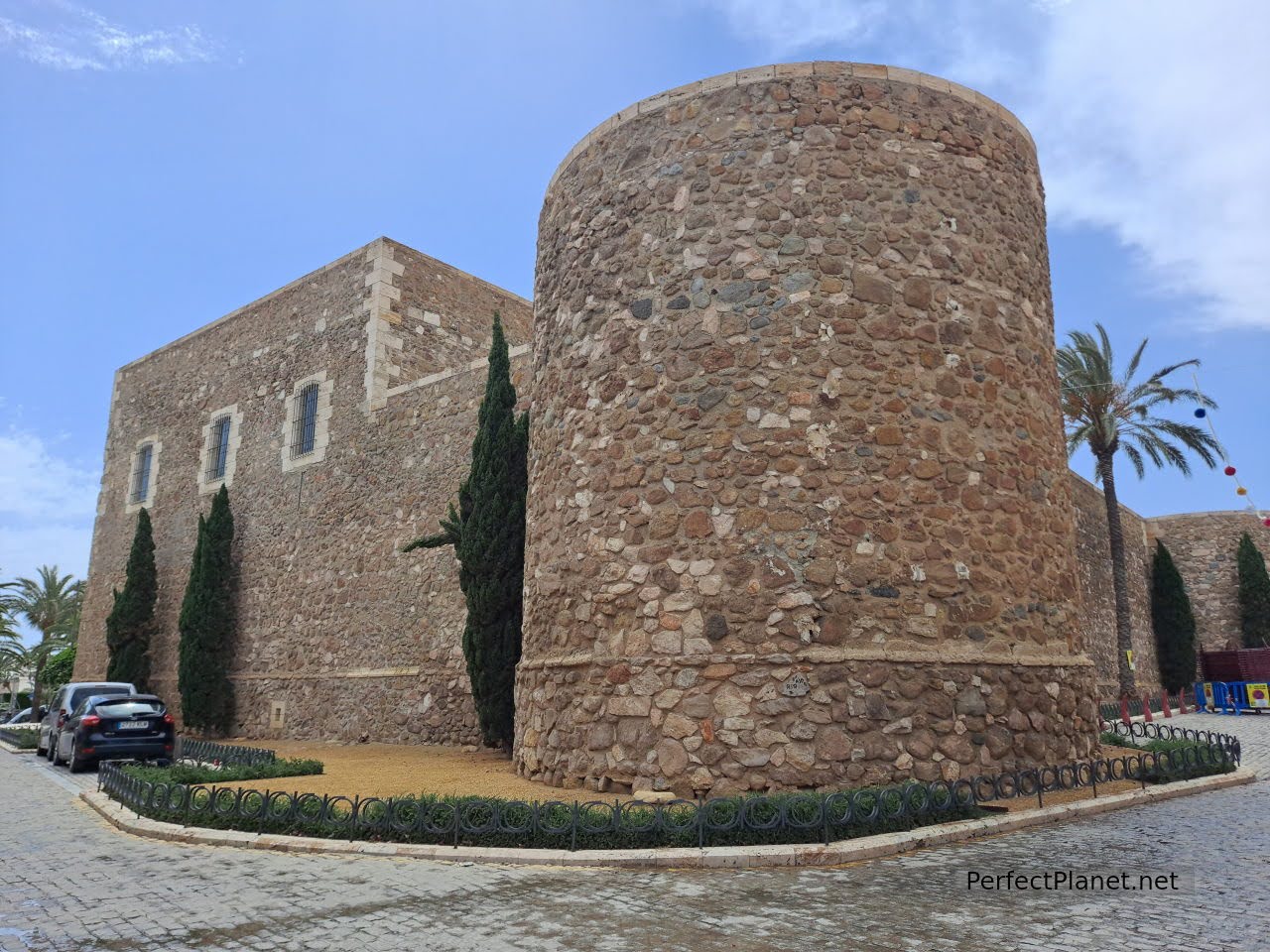
San Andrés Castle
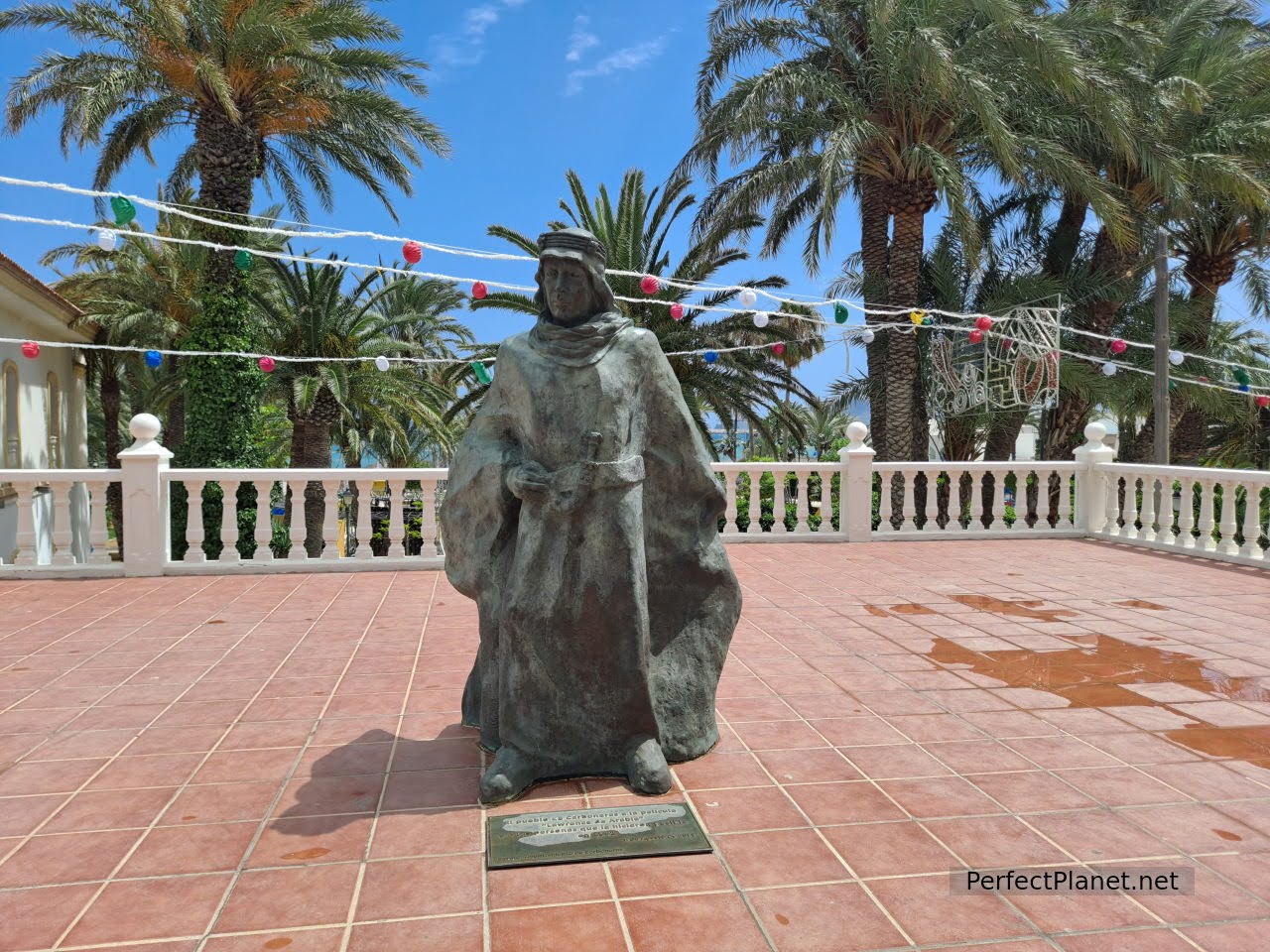
Lwarence de Arabia statue
In Carboneras you have all the services, ATMs, supermarkets, shops, restaurants. Both for lunch and tapas we recommend the Restaurant Chiringuito J.Mariano. It is advisable to book because it is always full but it has a spectacular grilled octopus.
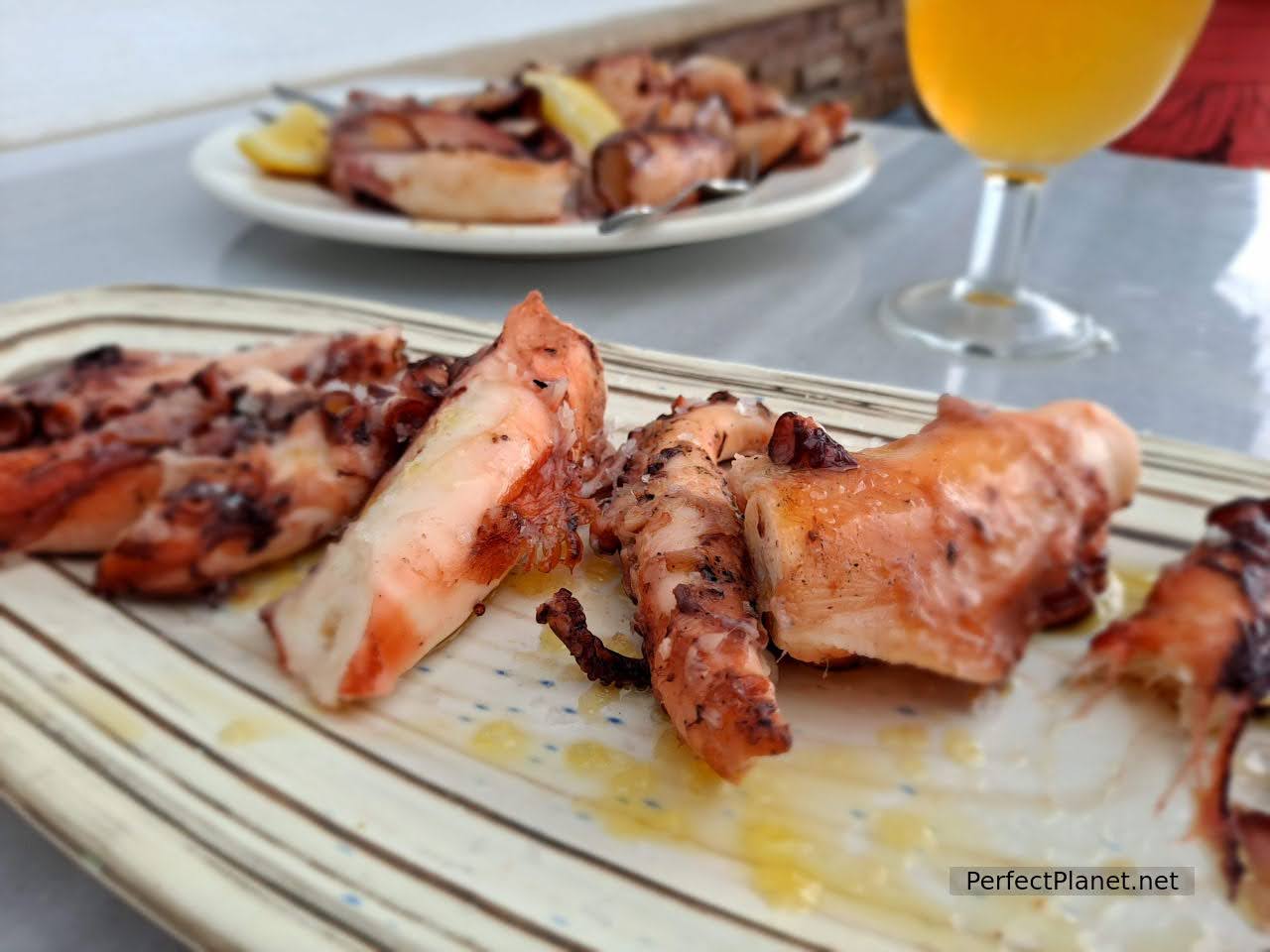
Grilled octopus
Continuing towards Agua Amarga, the first obligatory stop is the Playa de los Muertos (Beach of the Dead). Its name comes from the fact that the strong currents in the area used to bring the bodies of shipwrecks to the coast.
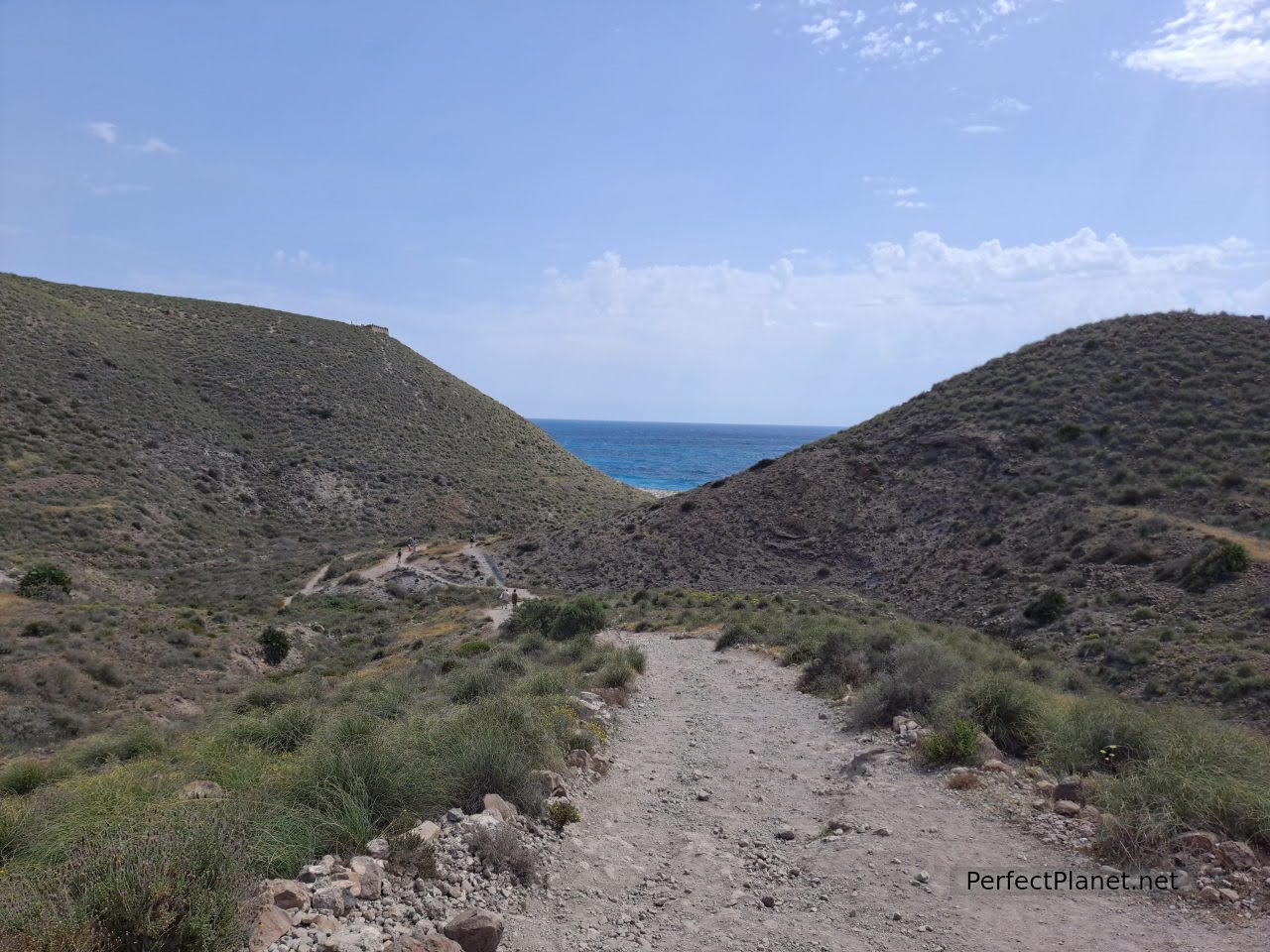
Way down to beach of Dead
It has two fairly large car parks. From the smaller one, next to the tourist information office, there is a small path leading to the Mirador de los Muertos with spectacular views.
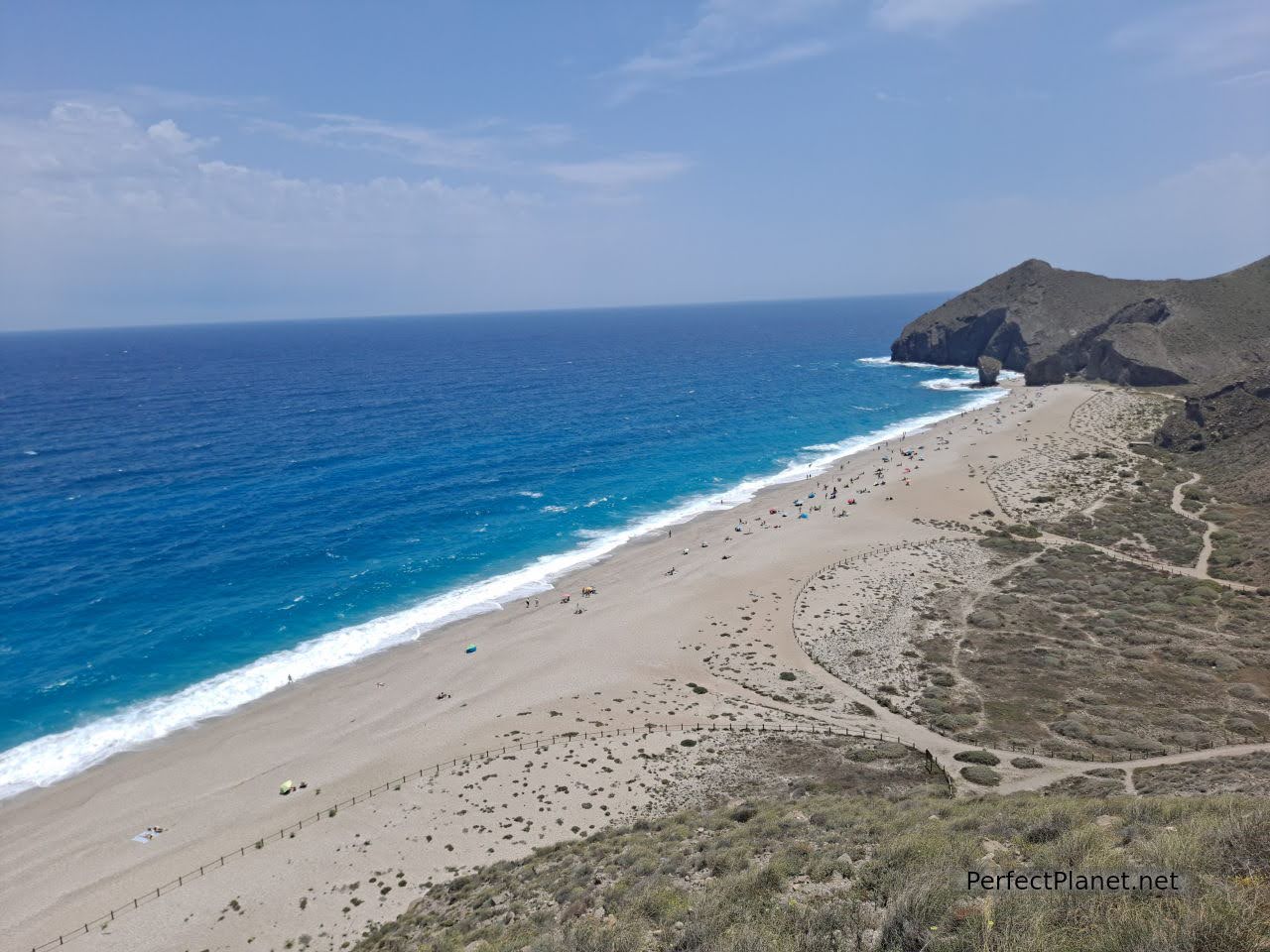
Playa de los Muertos from de viewpoint
From the car park to the beach it is a fifteen minute walk with some slope, less than a kilometre, so it is necessary to wear suitable footwear. It is not accessible for people with reduced mobility.
Crystal-clear waters, almost a kilometre of fine pebble beach (advice: wear booties), although it is not very advisable for swimming. The ripple formed by the waves when they break on the shore is very strong, so be very careful, we tell you this from experience.
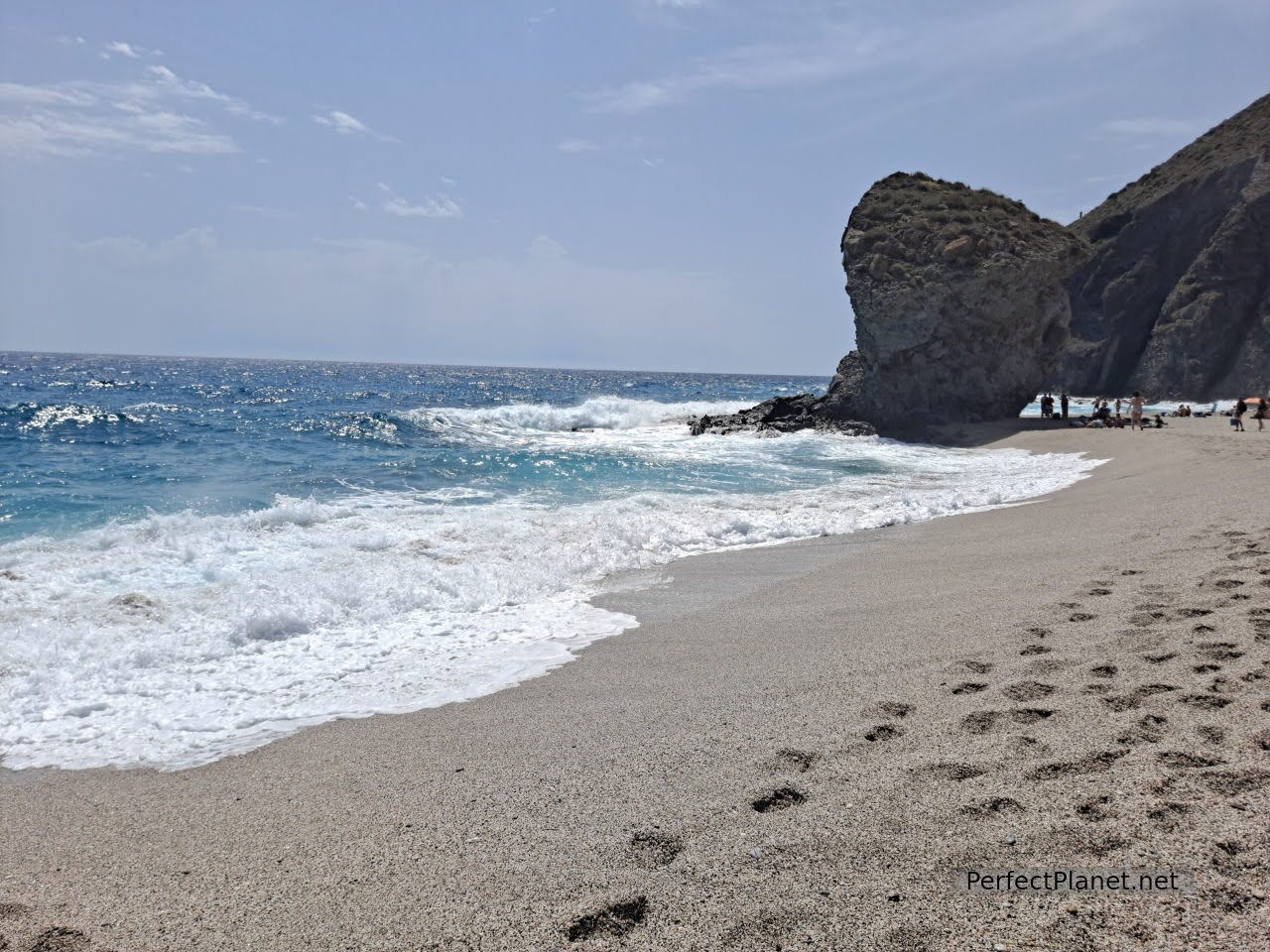
Playa de los Muertos
Beautiful at any time of the day, like many other beaches in the Park it does not have a beach bar, so bring sun cream, water and food if you are going to enjoy it for several hours.
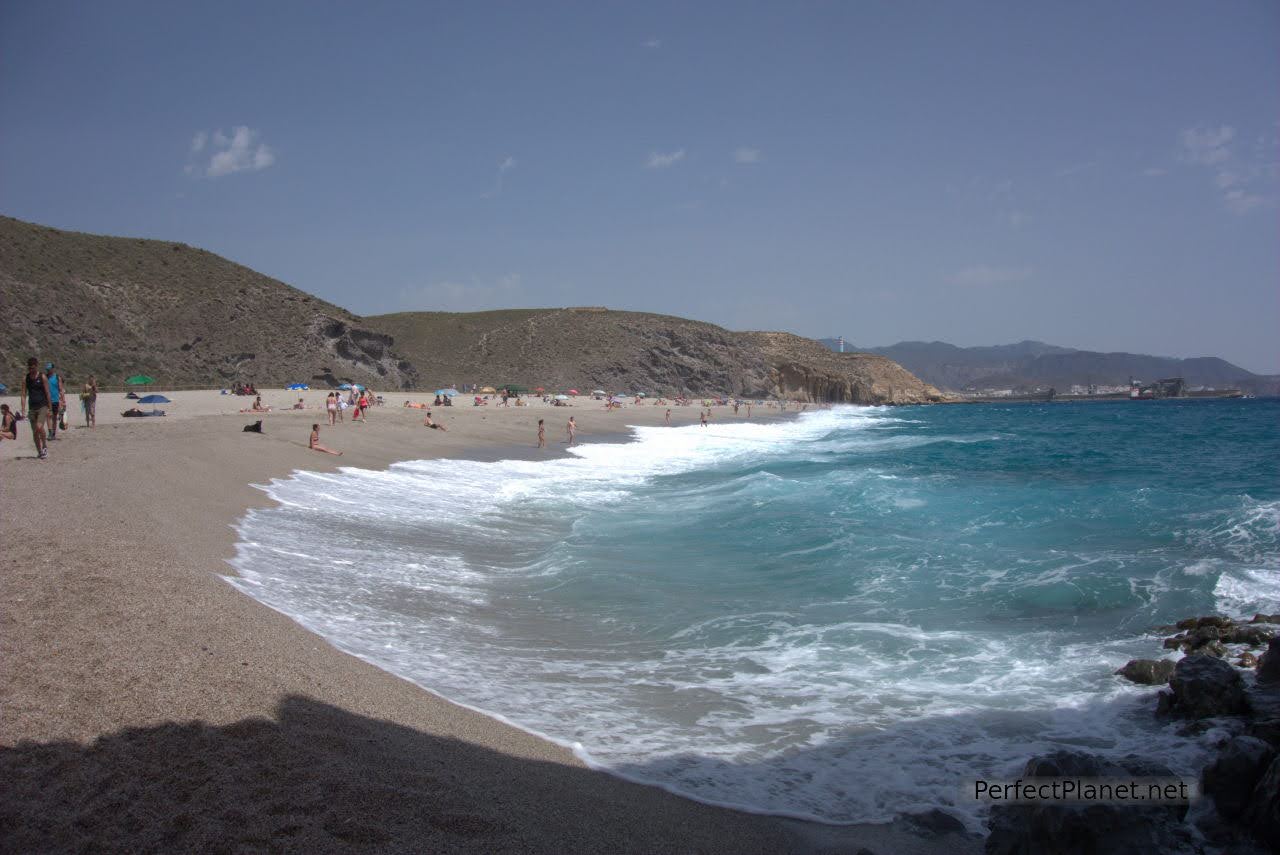
Playa de los Muertos
The access to the Mesa de Roldán (you can go up on foot (2.2 kilometres) or by car), a volcanic plateau more than two hundred metres above sea level, is at the tourist information office.
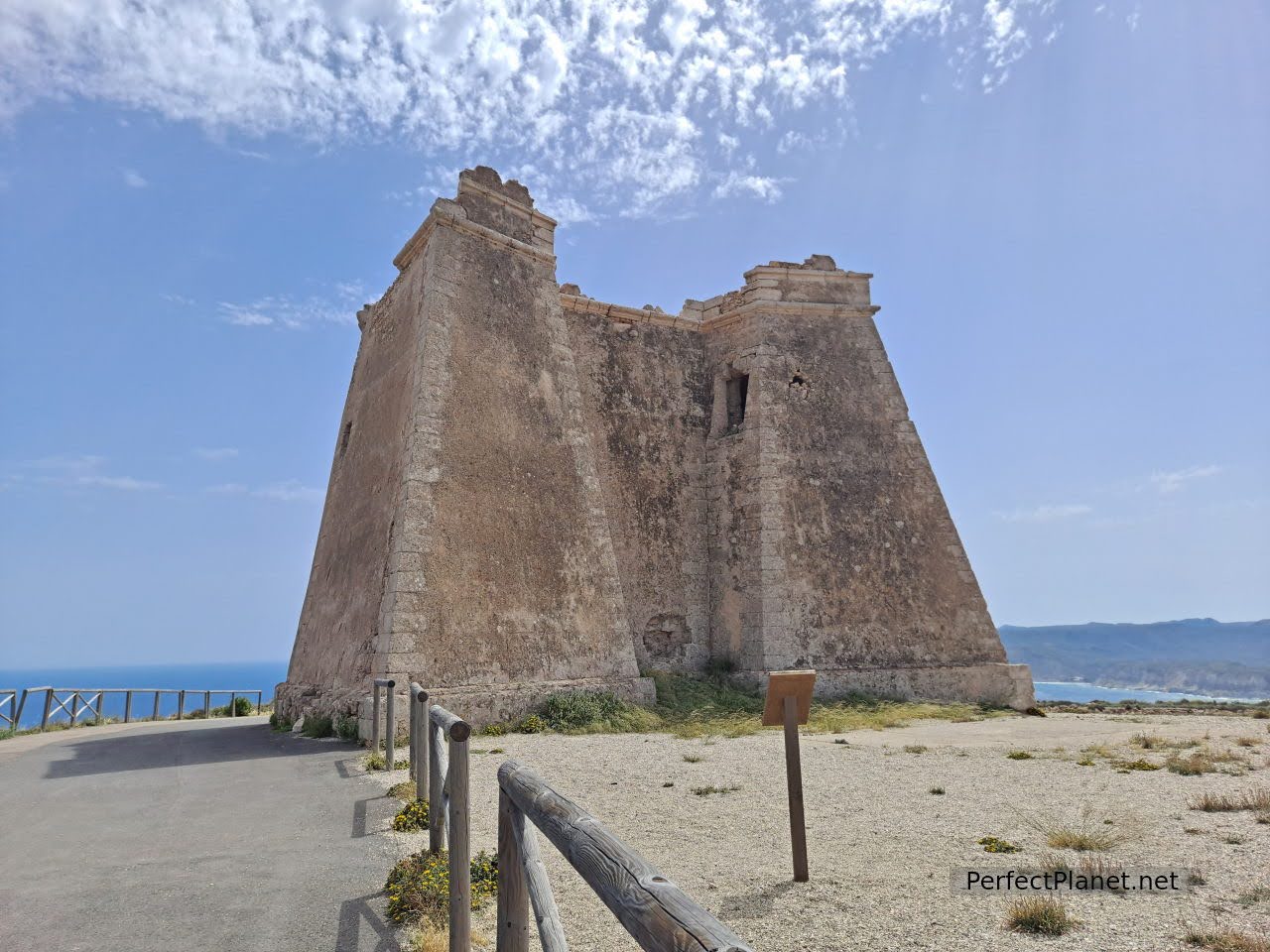
Mesa de Roldán
This is the highest inhabited Tower and Lighthouse on the Iberian Peninsula. To visit it, please contact Mario Sanz. (elmariosanzcruz@hotmail.com)
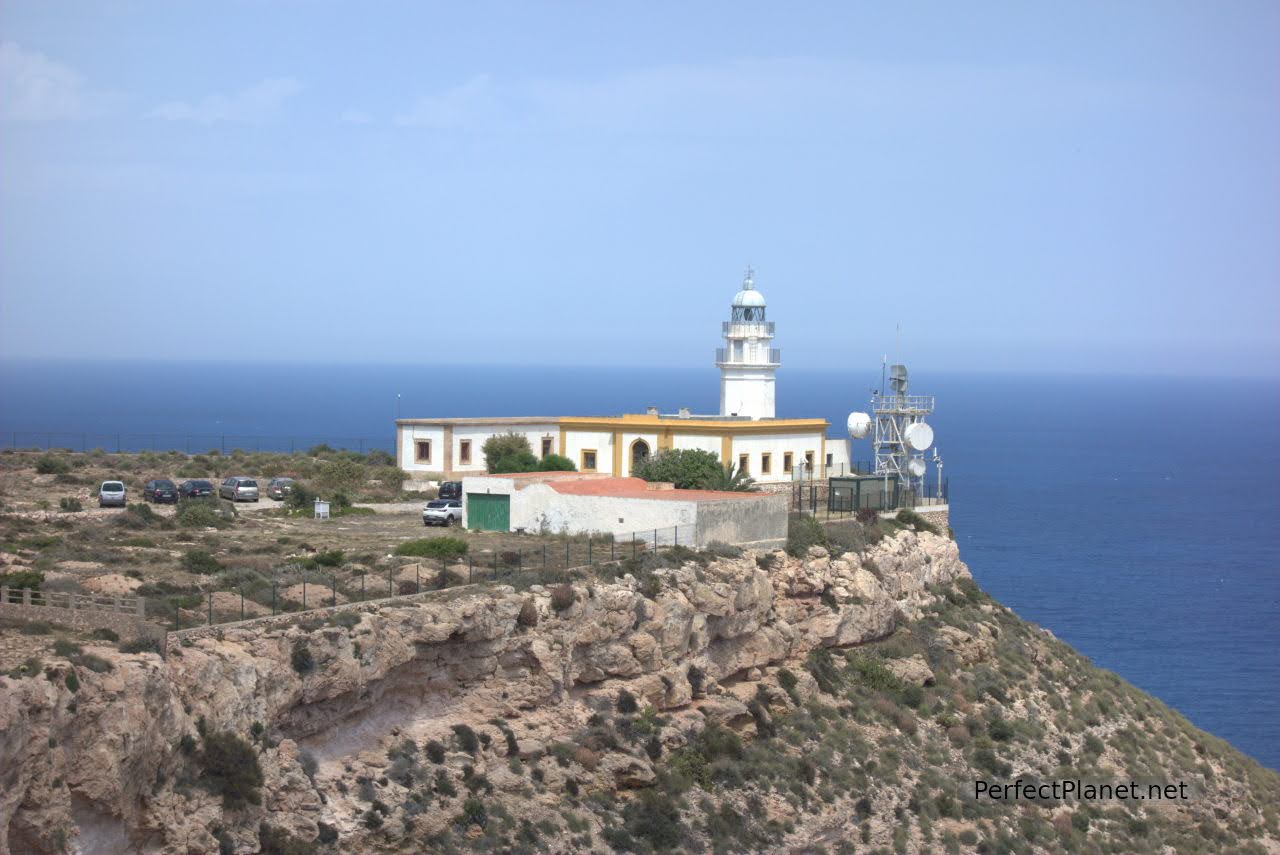
Lighthouse Mesa de Roldán
The 17th century Tower, built on top of an earlier one from the 15th century, formed, together with others, a coastal surveillance system. The views are magnificent.
Some scenes of the mythical series Game of Thrones were filmed here.
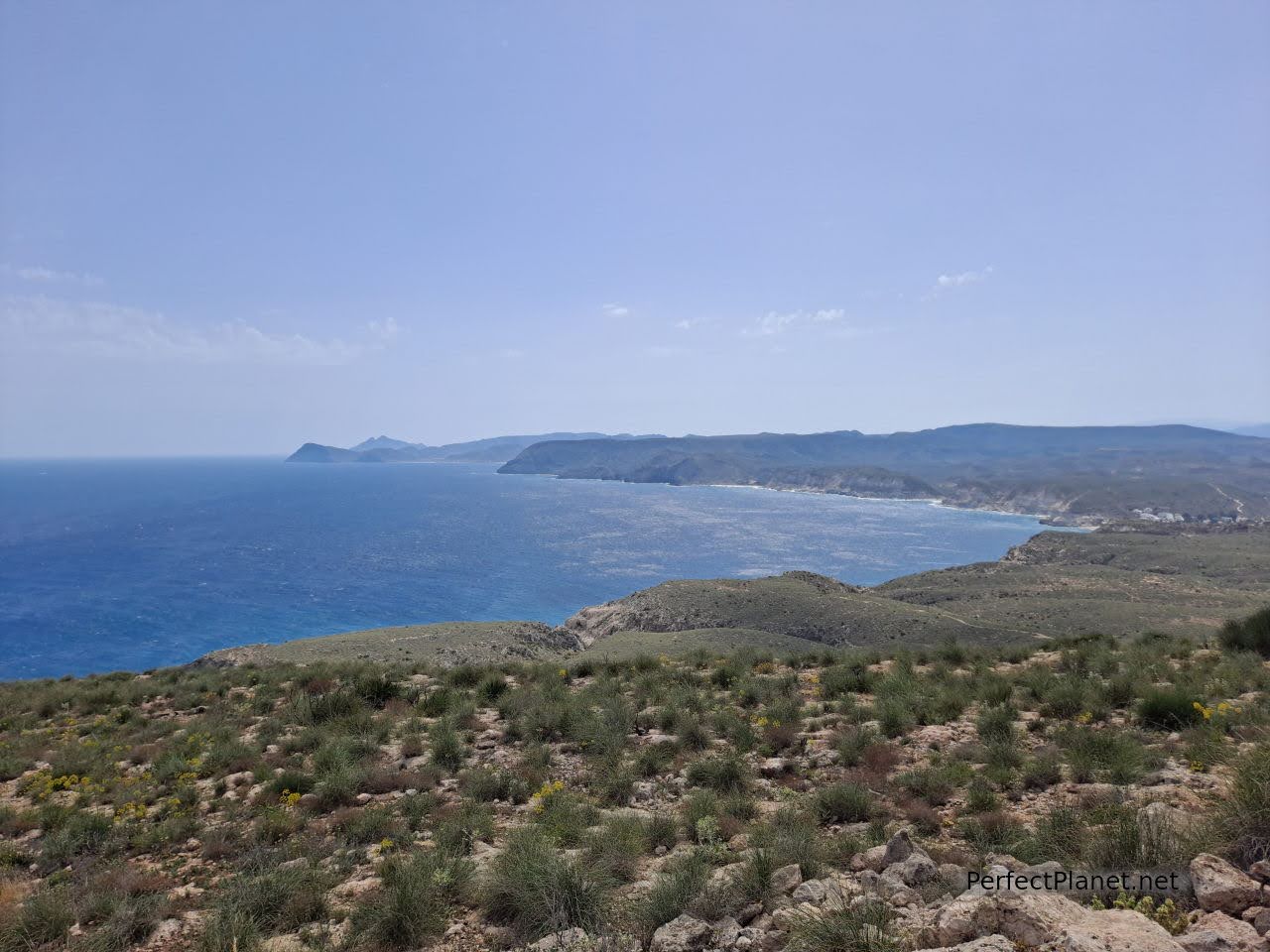
Views from Mesa de Roldán
It is worth noting that the site is a fossil reef formed underwater millions of years ago.
3. Agua Amarga, beahc of Cala de Enmedio and beach of Cala del Plomo.
Agua Amarga, this pretty coastal town of white houses and narrow streets whose name comes from the Arabic Al-hawan (location of water) is another must-see in the Park. Its fine sandy beach is flanked by cliffs, is easily accessible and has a large car park.
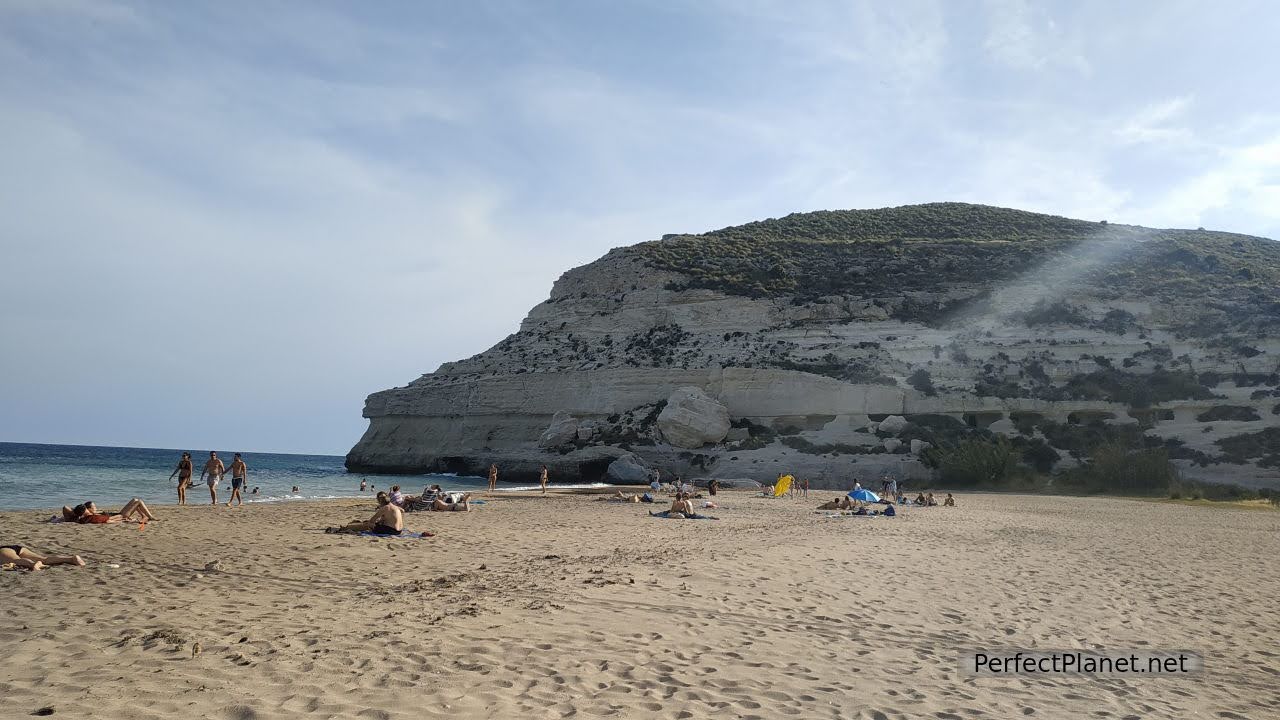
Agua Amarga beach
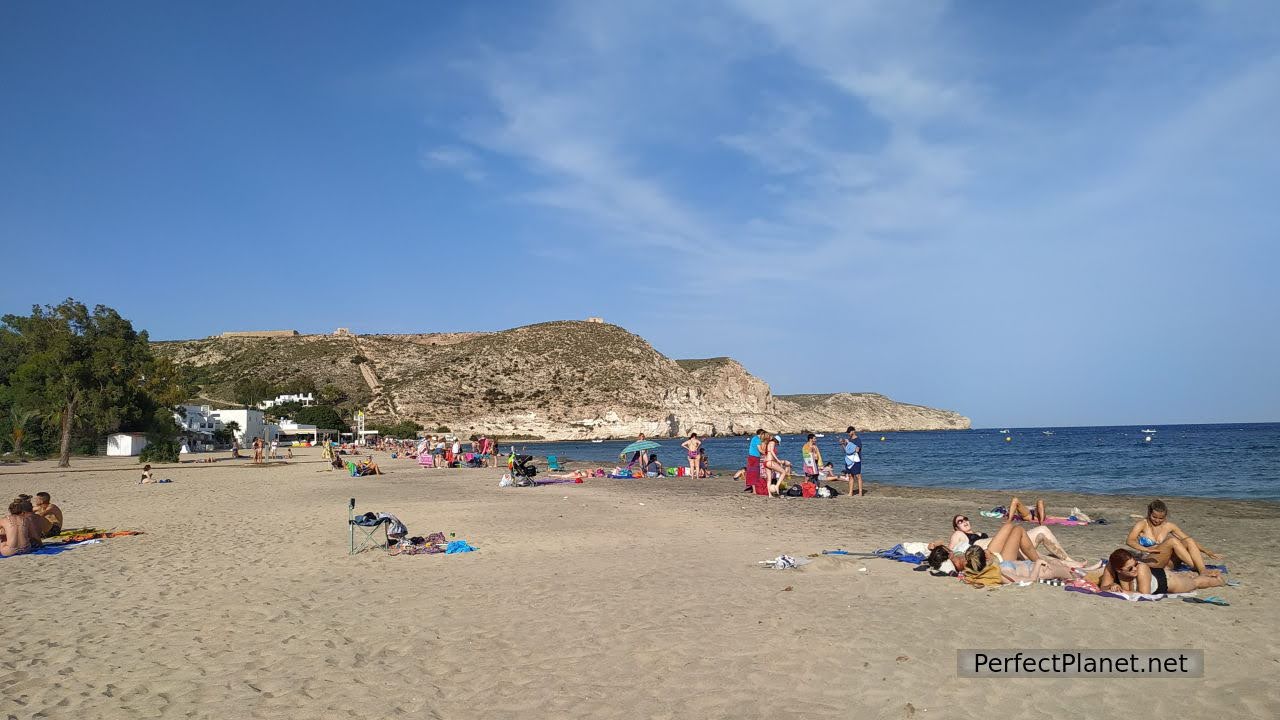
Agua Amarga beach
At one end of the beach are the remains of an old ore loading bay. On the cliff you can get an idea of how the process of transporting the ore to the wharf was carried out, as well as enjoying spectacular views.
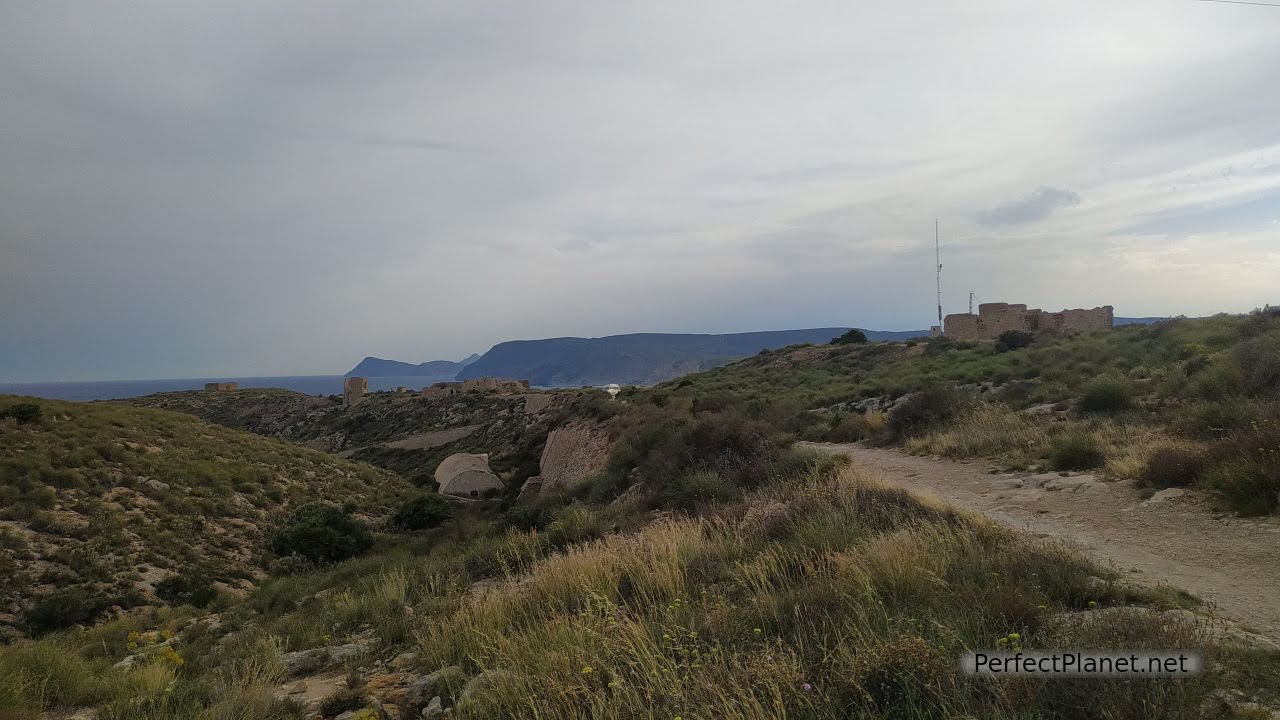
Ore loading bay
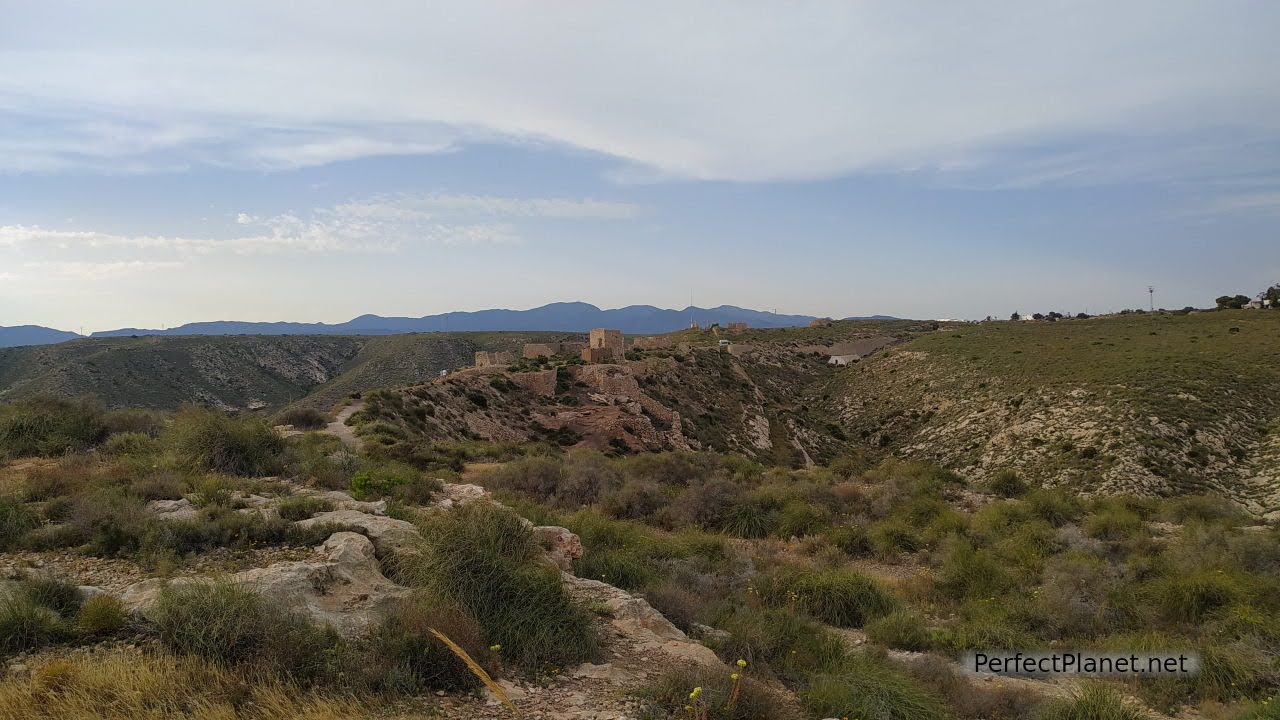
Ore loading bay
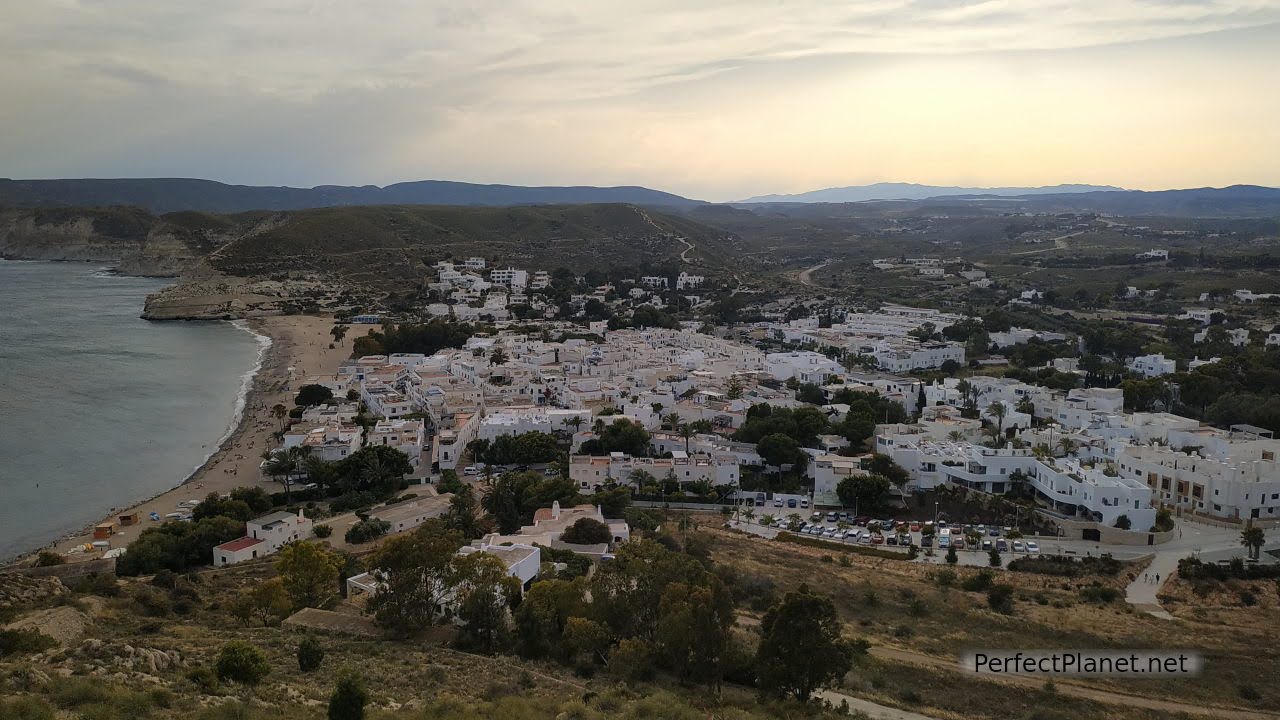
Agua Amarga from ore loading bay
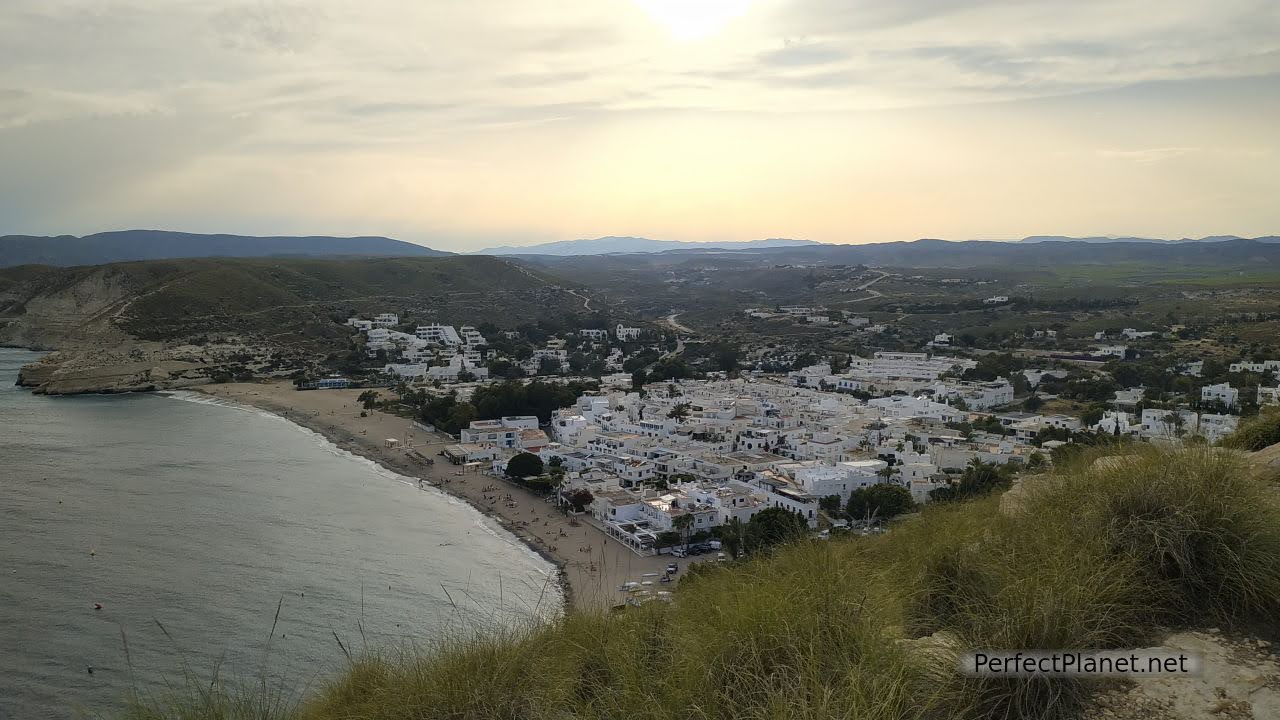
Agua Amarga from ore loading bay
From the car park at the Agua Amarga beach, the path begins, which will take us over a two hundred metre difference in height in just three kilometres to the Cala de Enmedio beach. The hidden gem of the Natural Park.
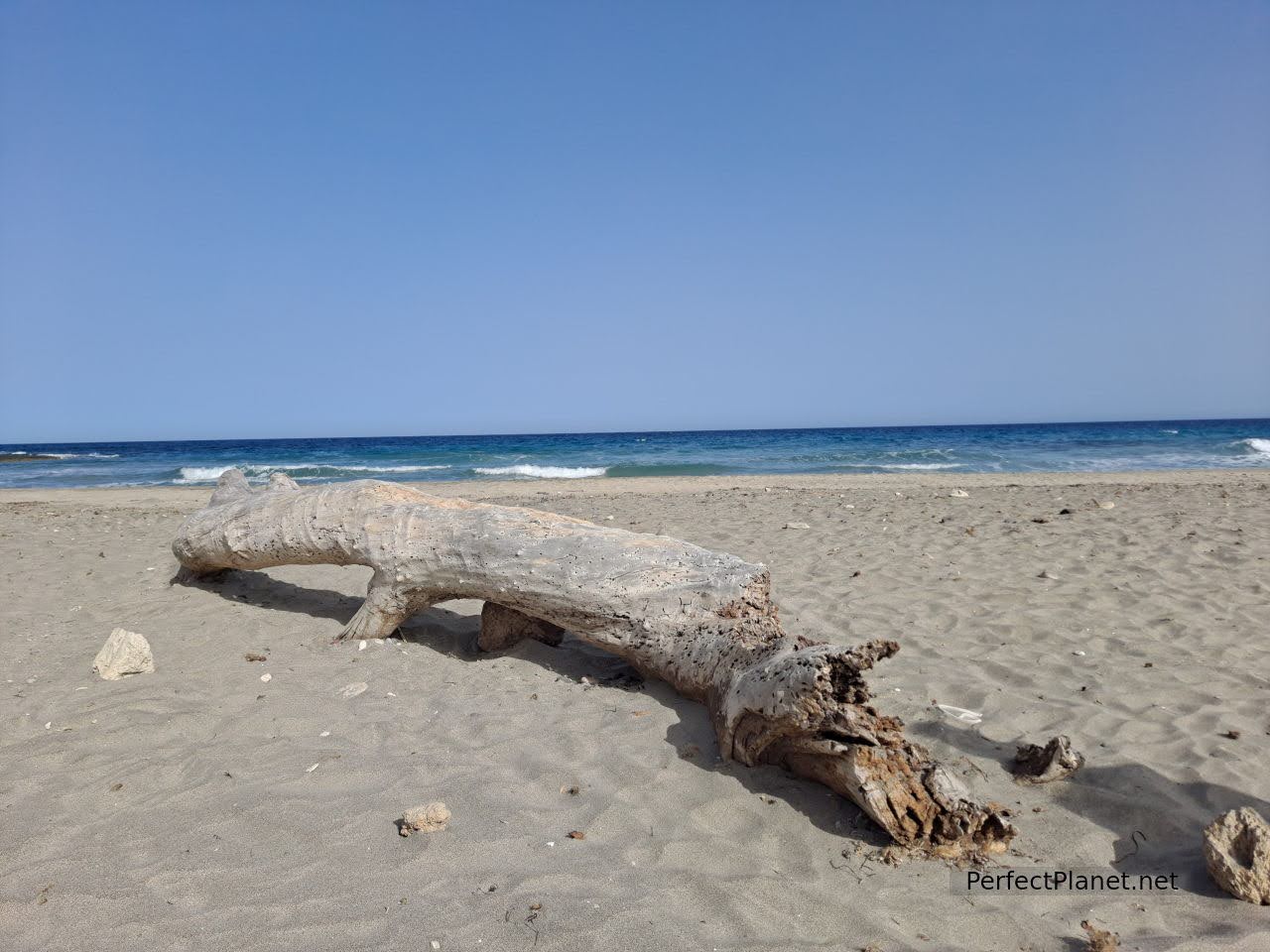
Cala de Enmedio beach
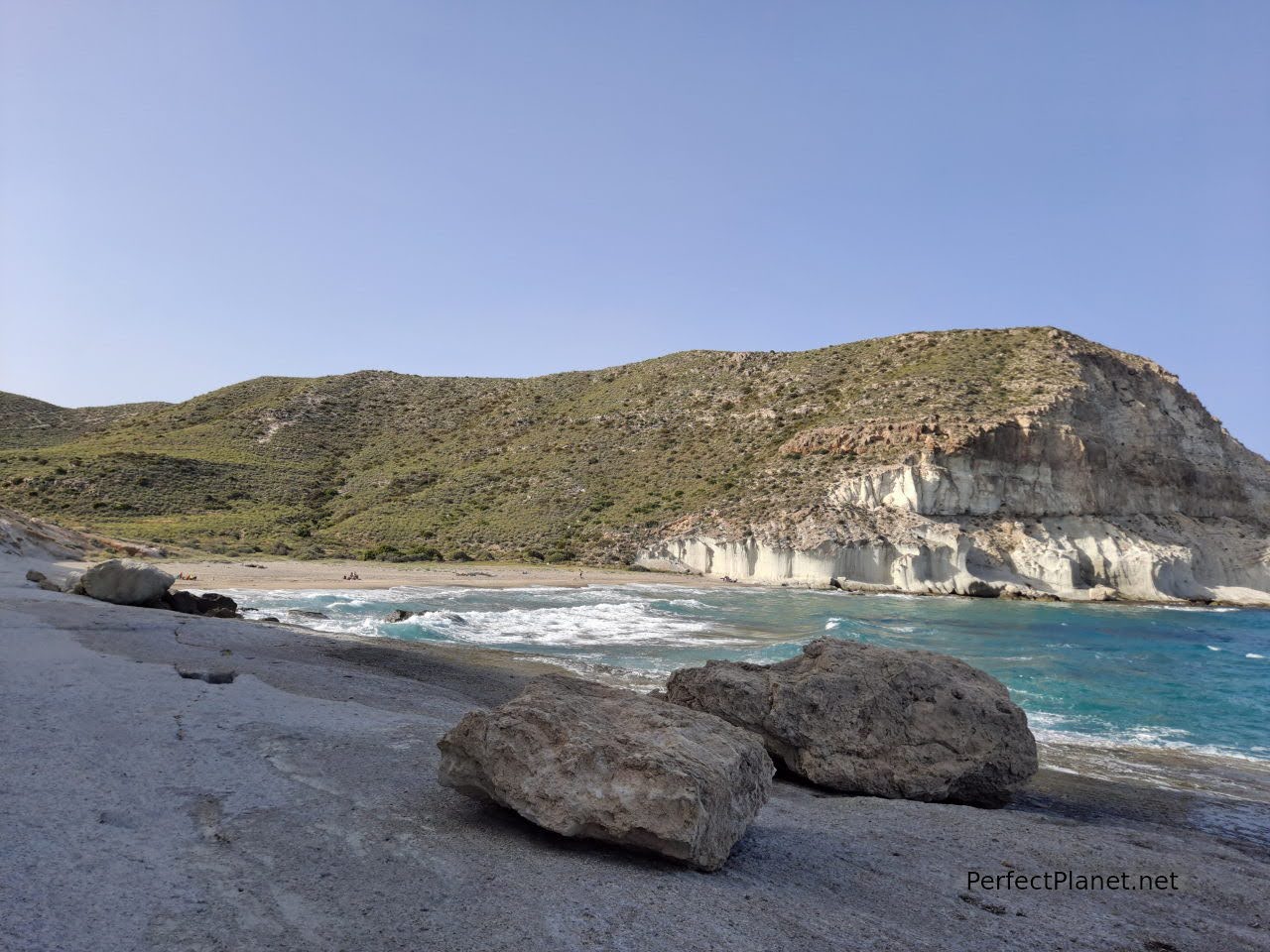
Cala de Enmedio beach
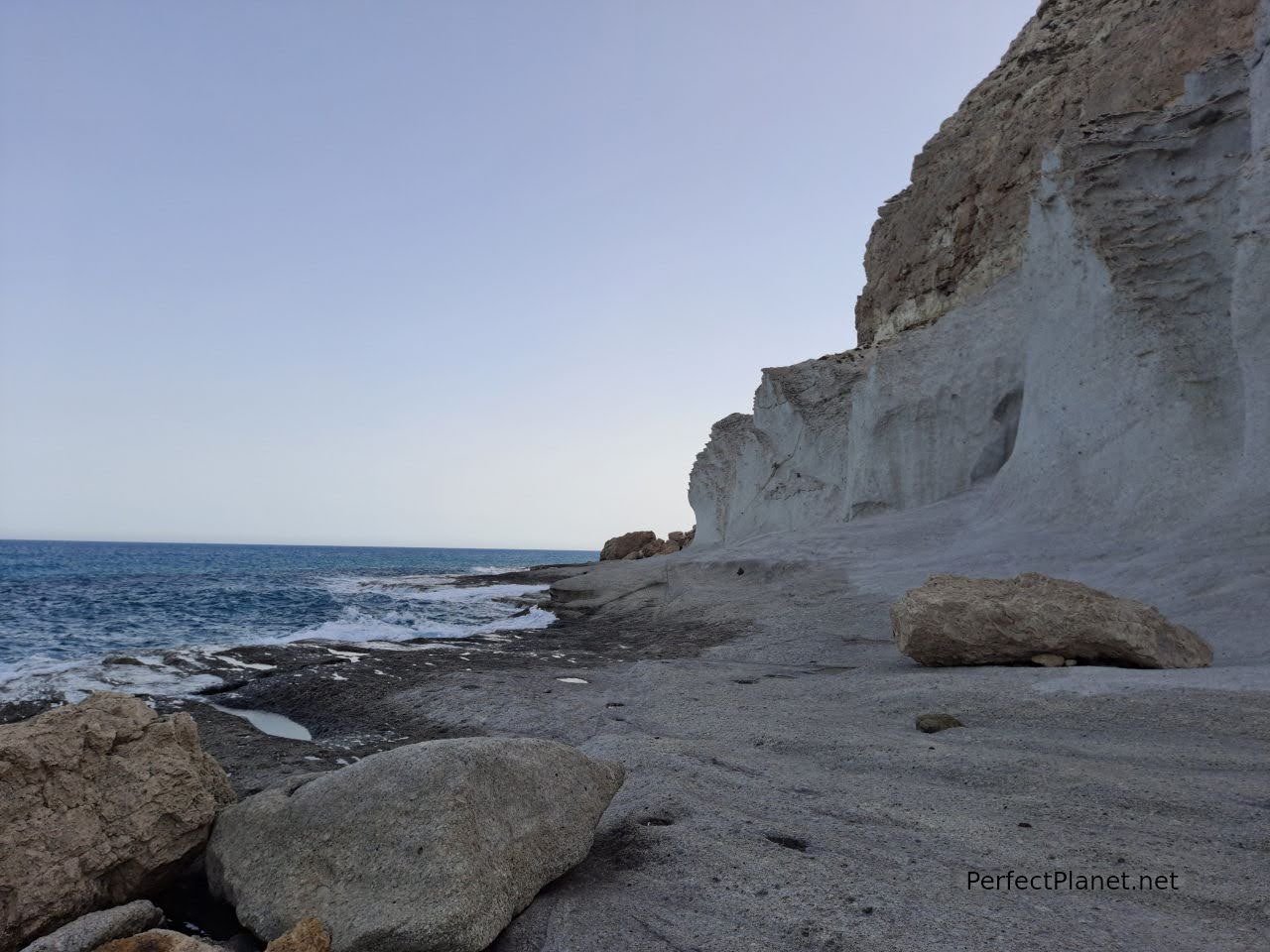
Cala de Enmedio beach
Comfortable shoes, water and light weight are needed to enjoy the path, the views and the beach.
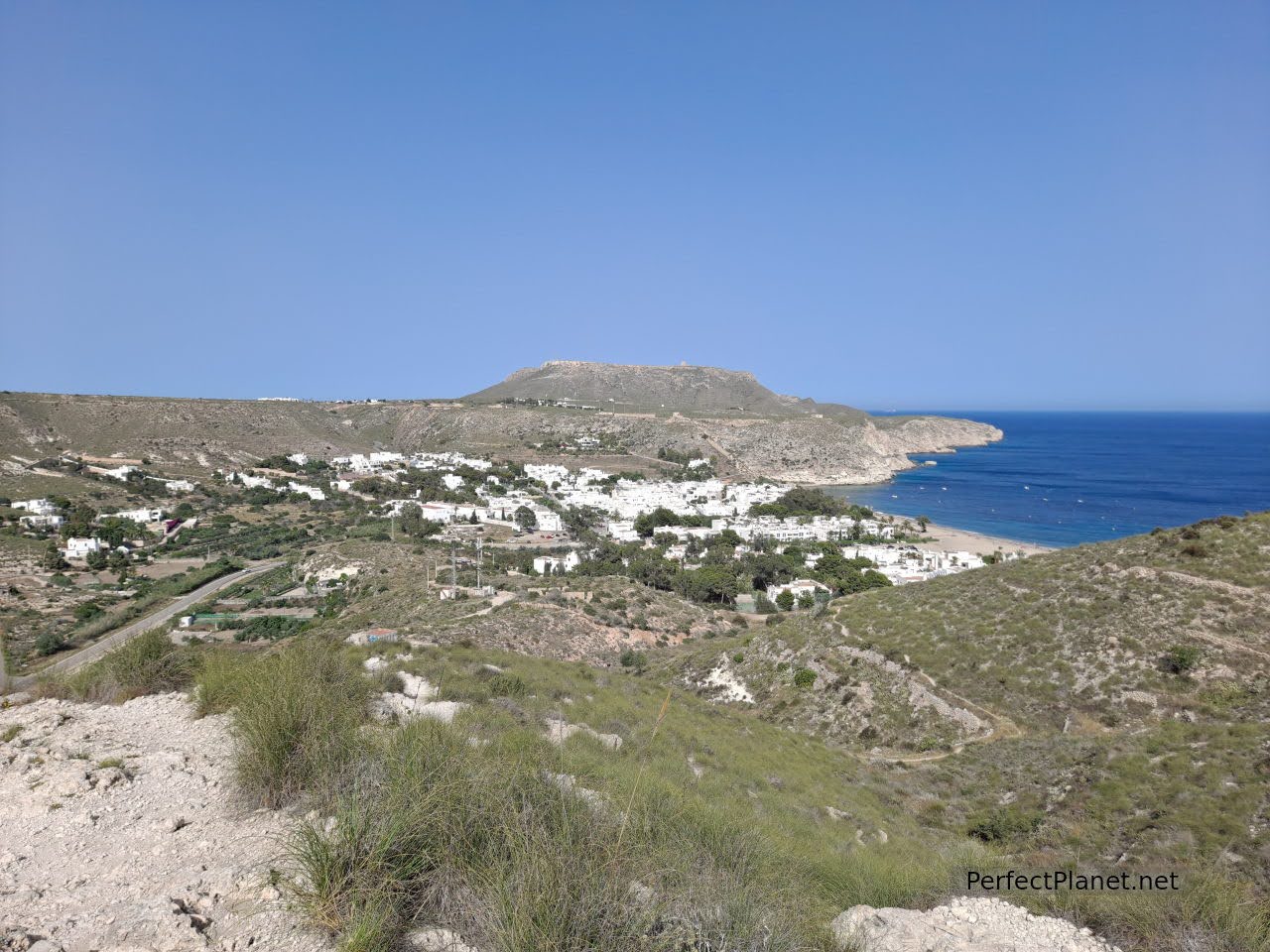
Way from Agua Amarga
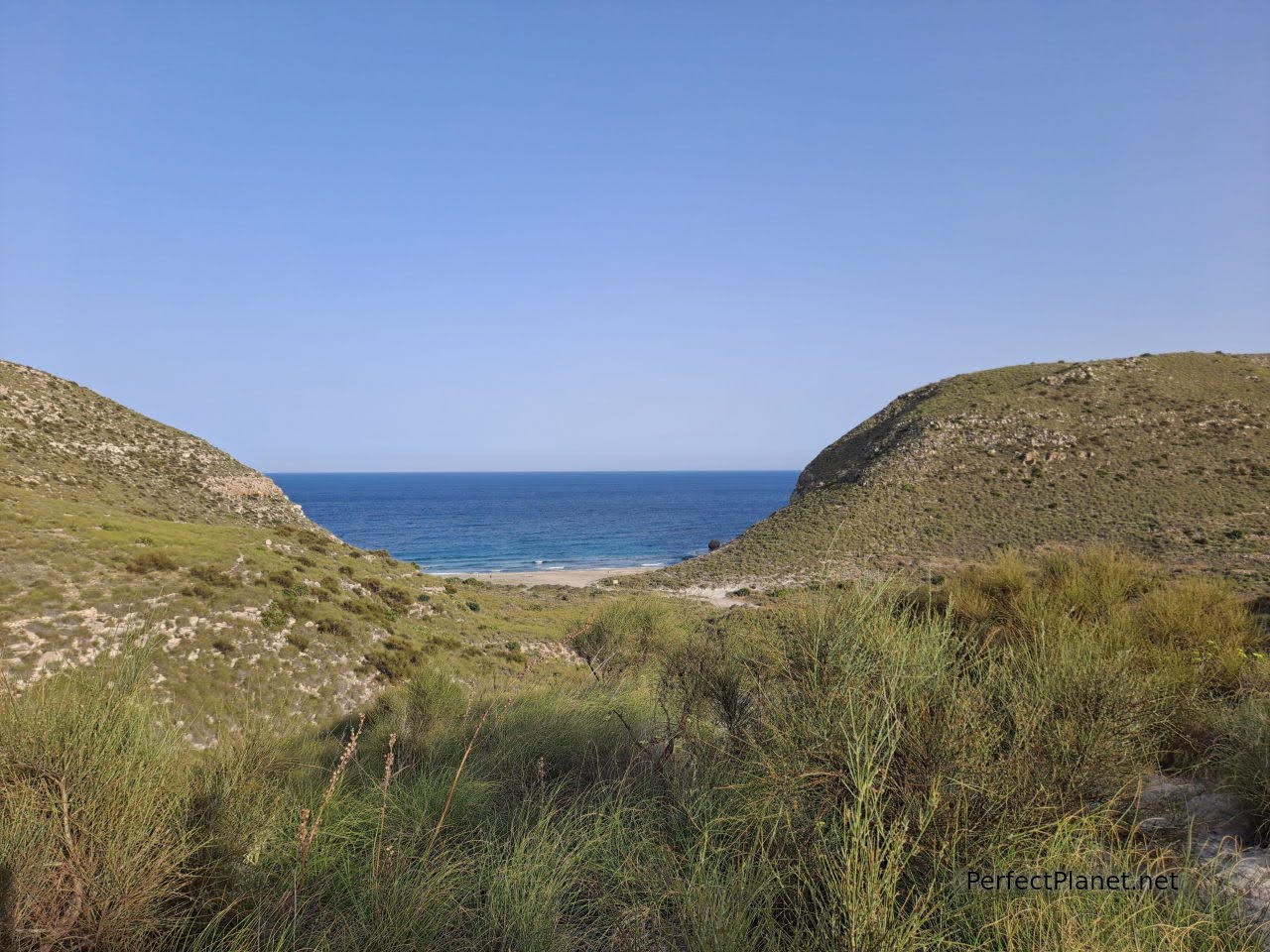
Way from Agua Amarga
This natural paradise of fine golden sand is flanked on both sides by fossilised dunes that have been shaped by air and water erosion. Clean and shallow waters to enjoy a quiet swim. From here we can walk over the fossilised dunes to Cala del Plomo, enjoying the natural pools that form as we pass. Barely a kilometre separates them. Although it is better not to go loaded as there are some steps where you have to throw your hands in.
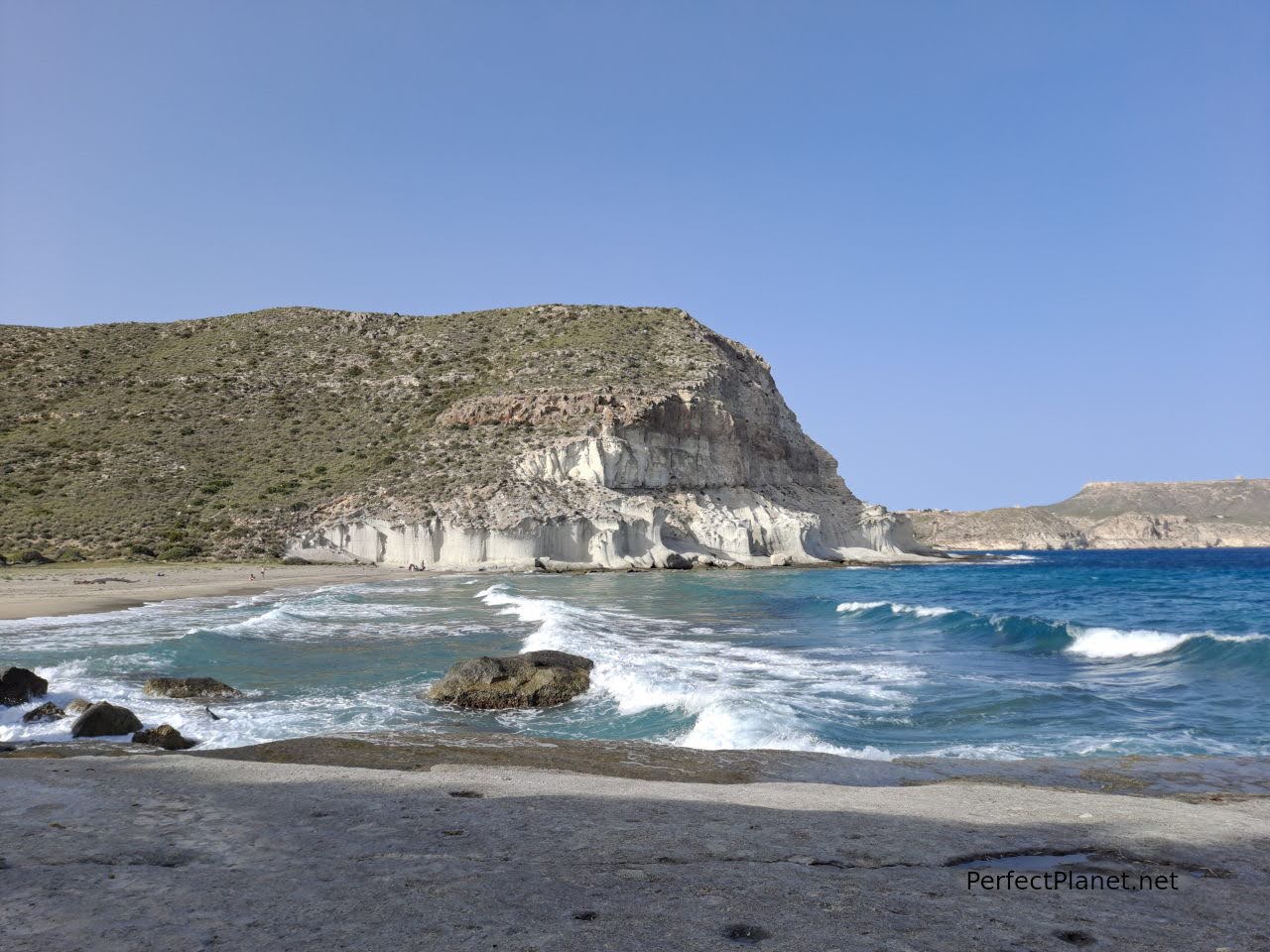
Cala de Enmedio beach
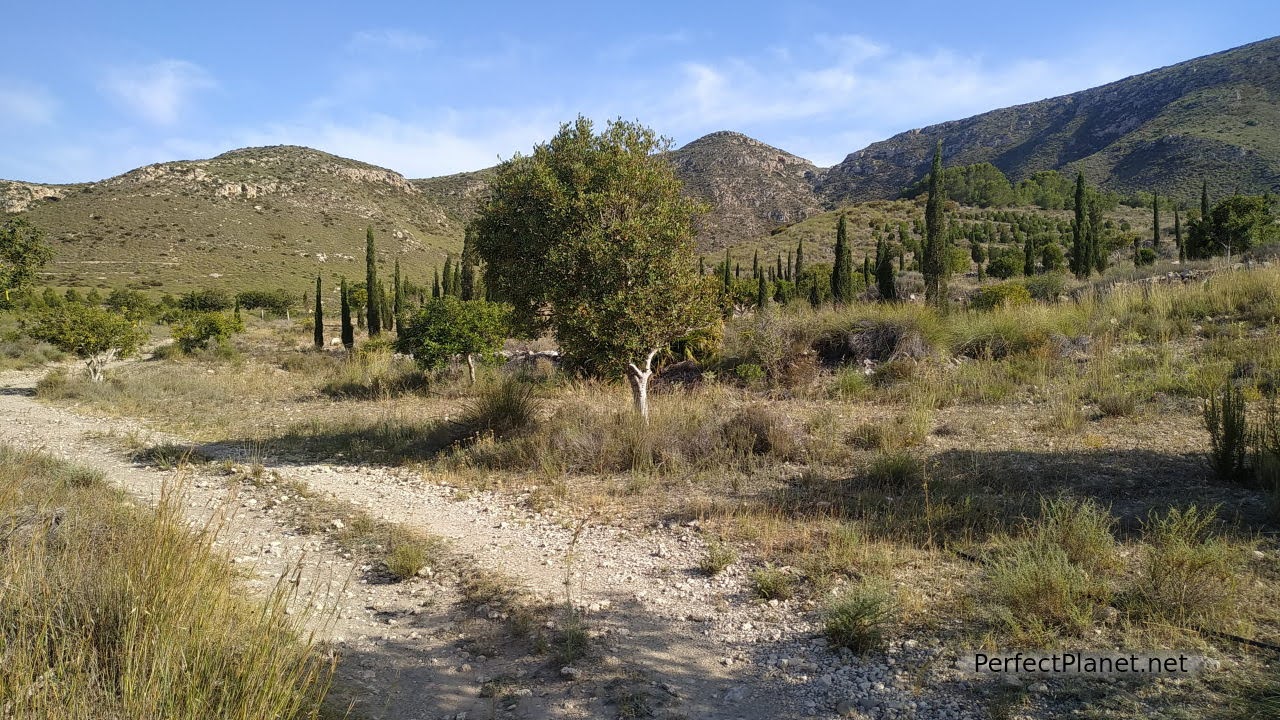
Landscape to Cala del Plomo by the path
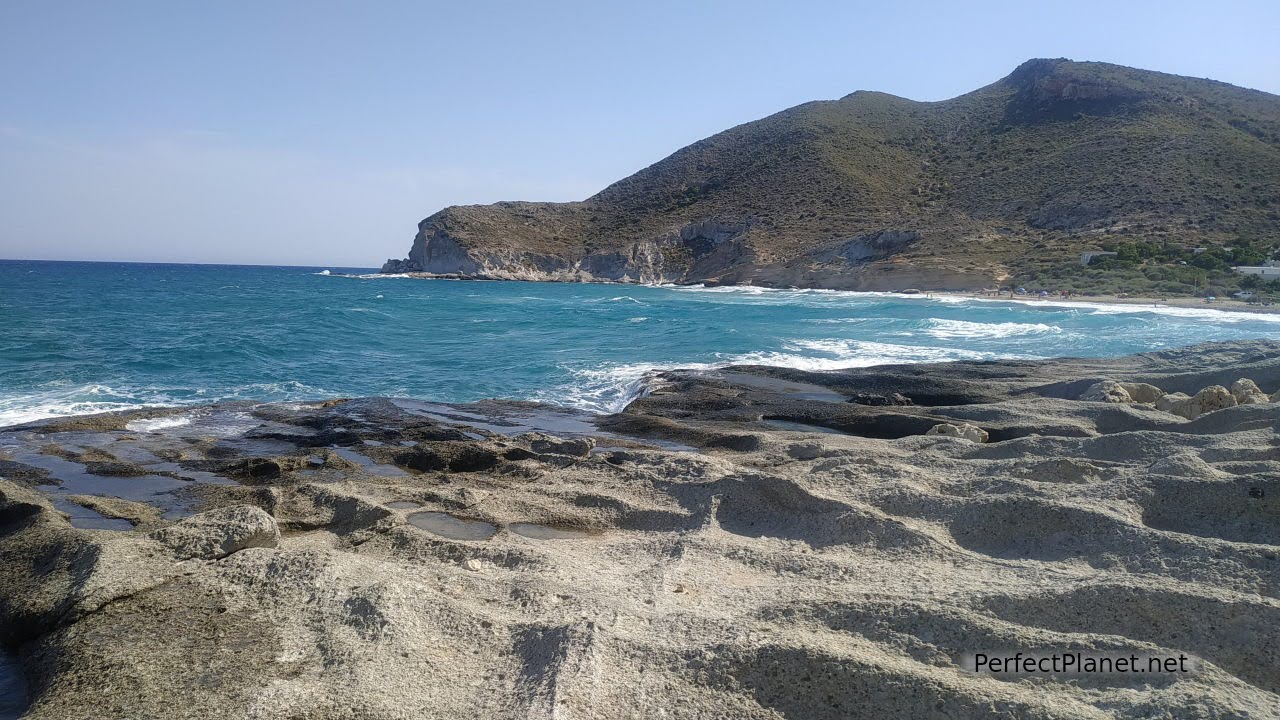
Natural pools
Another way to get to Cala del Plomo beach is by car along a dirt track of about six kilometres. The beauty of the road is singular, full of cactus, cypresses and plants typical of desert areas.
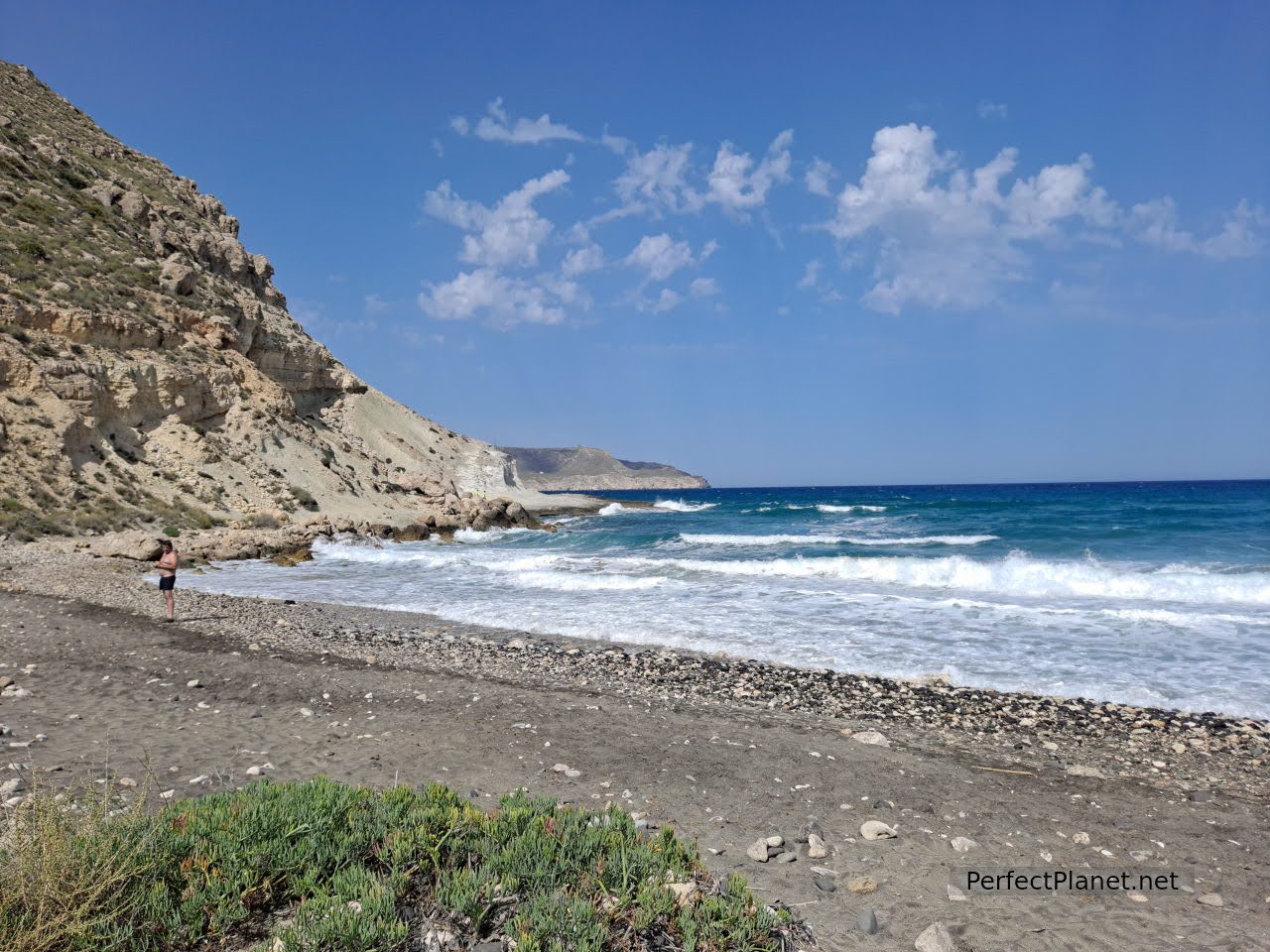
Cala del Plomo beach
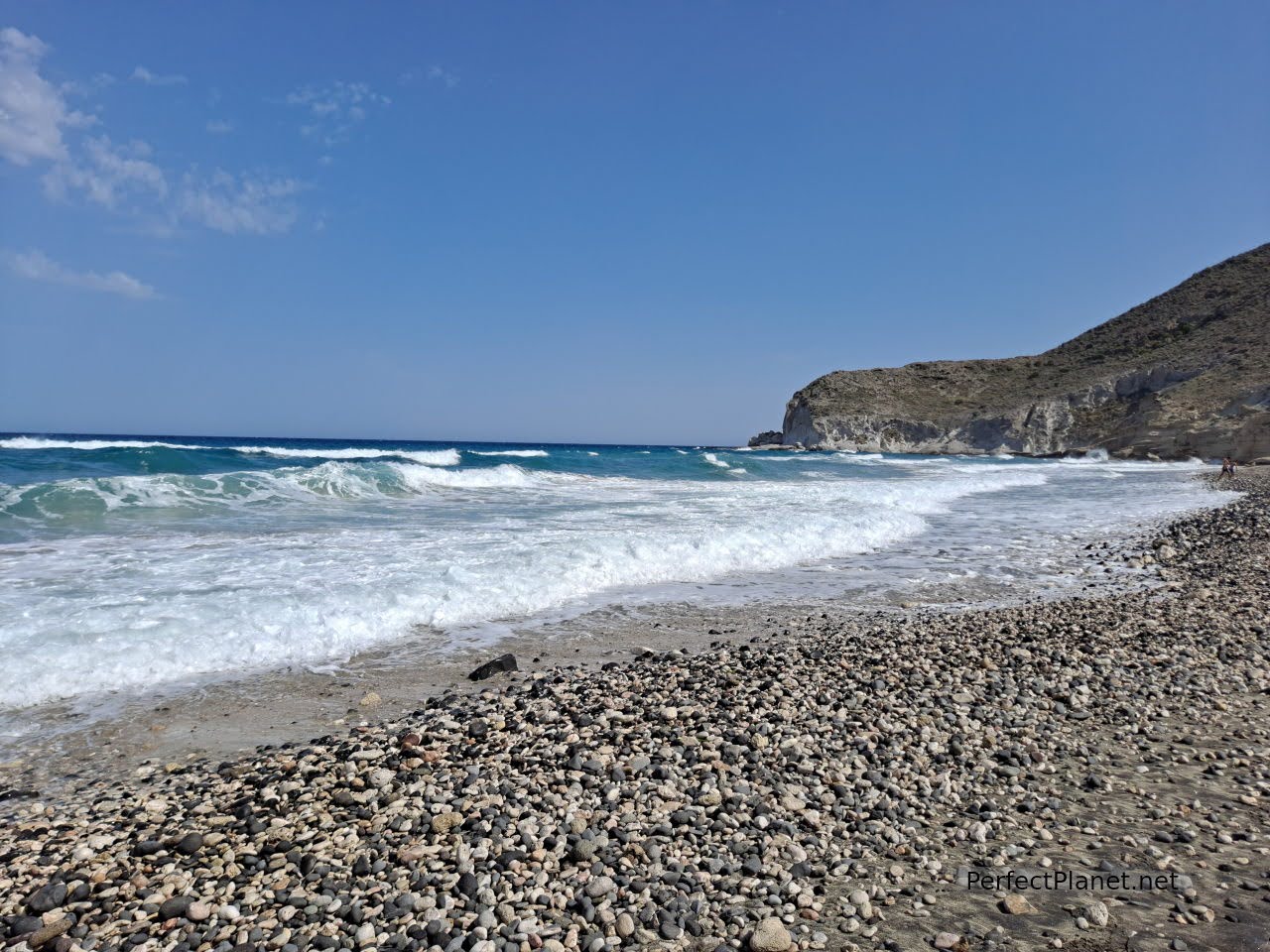
Cala del Plomo beach
Cala del Plomo beach is another little paradise, although it is accessible by car. It is made of sand and pebbles, so you'll be glad to have booties.
If the weather is good, you can take a hiking route that links Cala de Enmedio, Cala del Plomo and Cala de San Pedro, to enjoy this spectacular landscape.
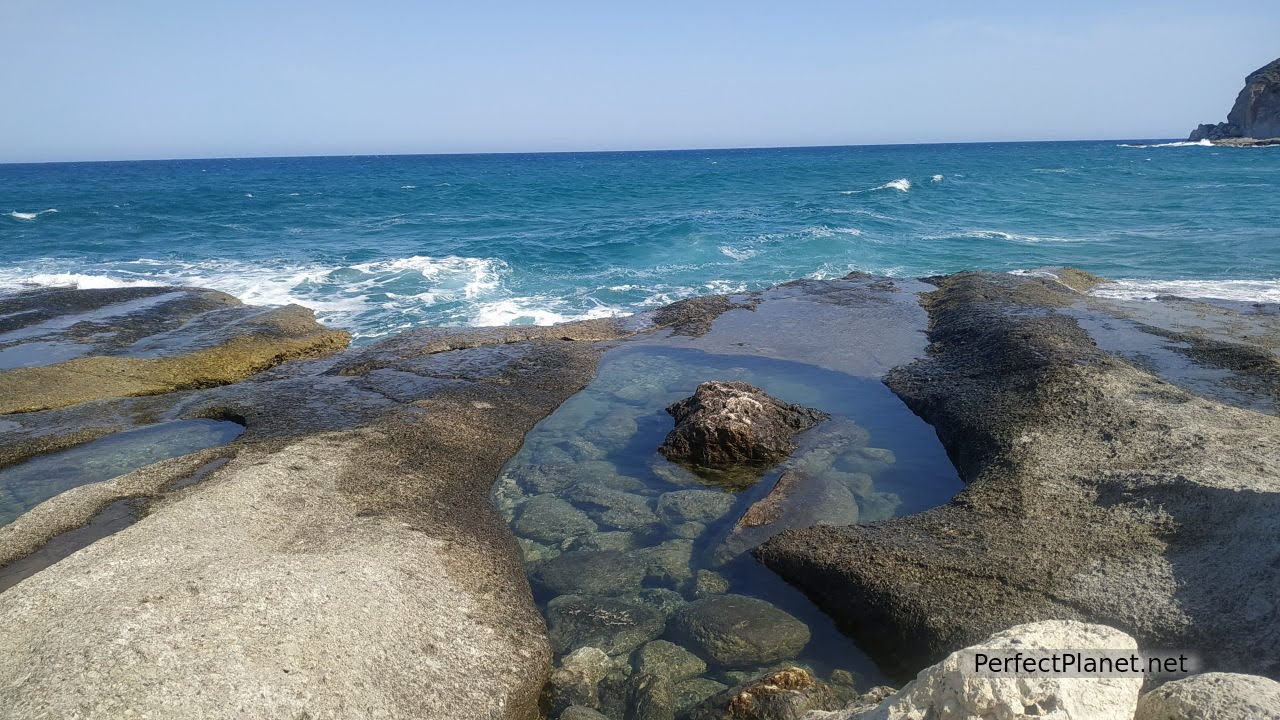
Natural pools
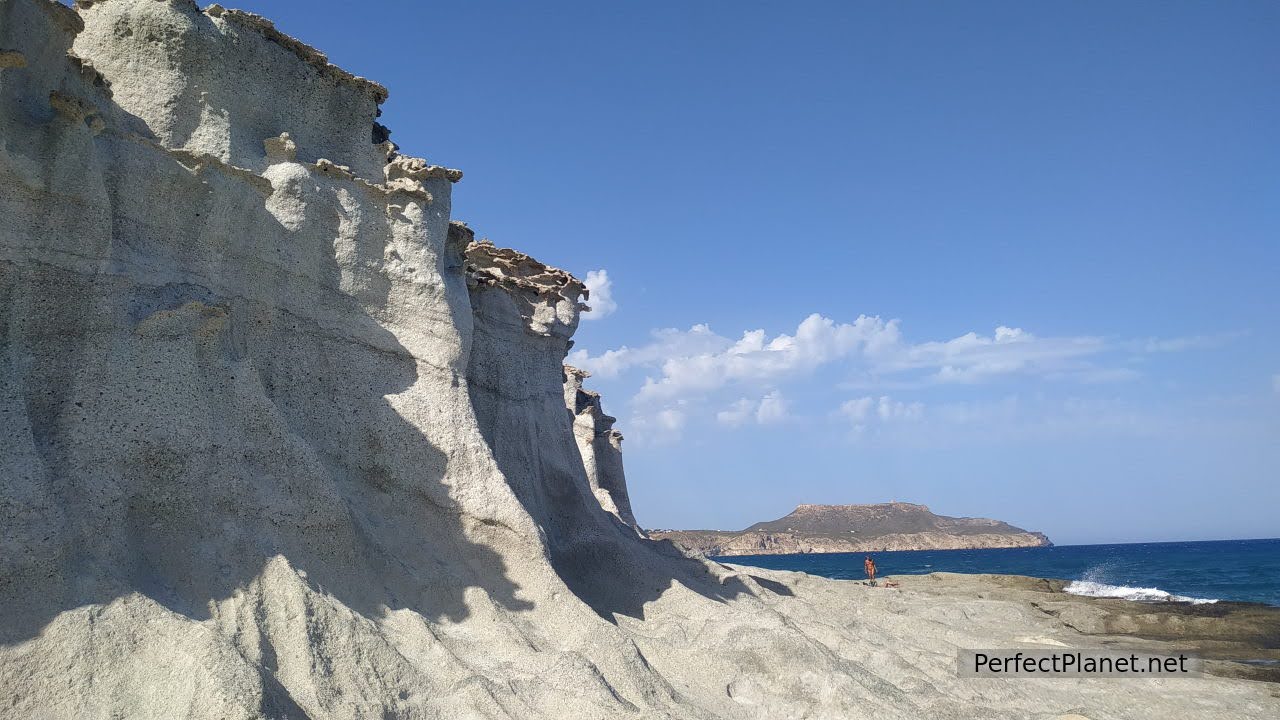
Way to Cala de Enmedio from Cala del Plomo
Eating in Agua Amarga. We recommend a rice dish in the restaurant Los Taharis, you'll love it.
4.Escullos and Arco beach
Los Escullos, in this small village you can enjoy the Arco beach and the largest fossil dune in the Park. This inlet includes the space between Isleta del Moro and Punta del Esparto, with the Arco beach and the Embarcadero cove.
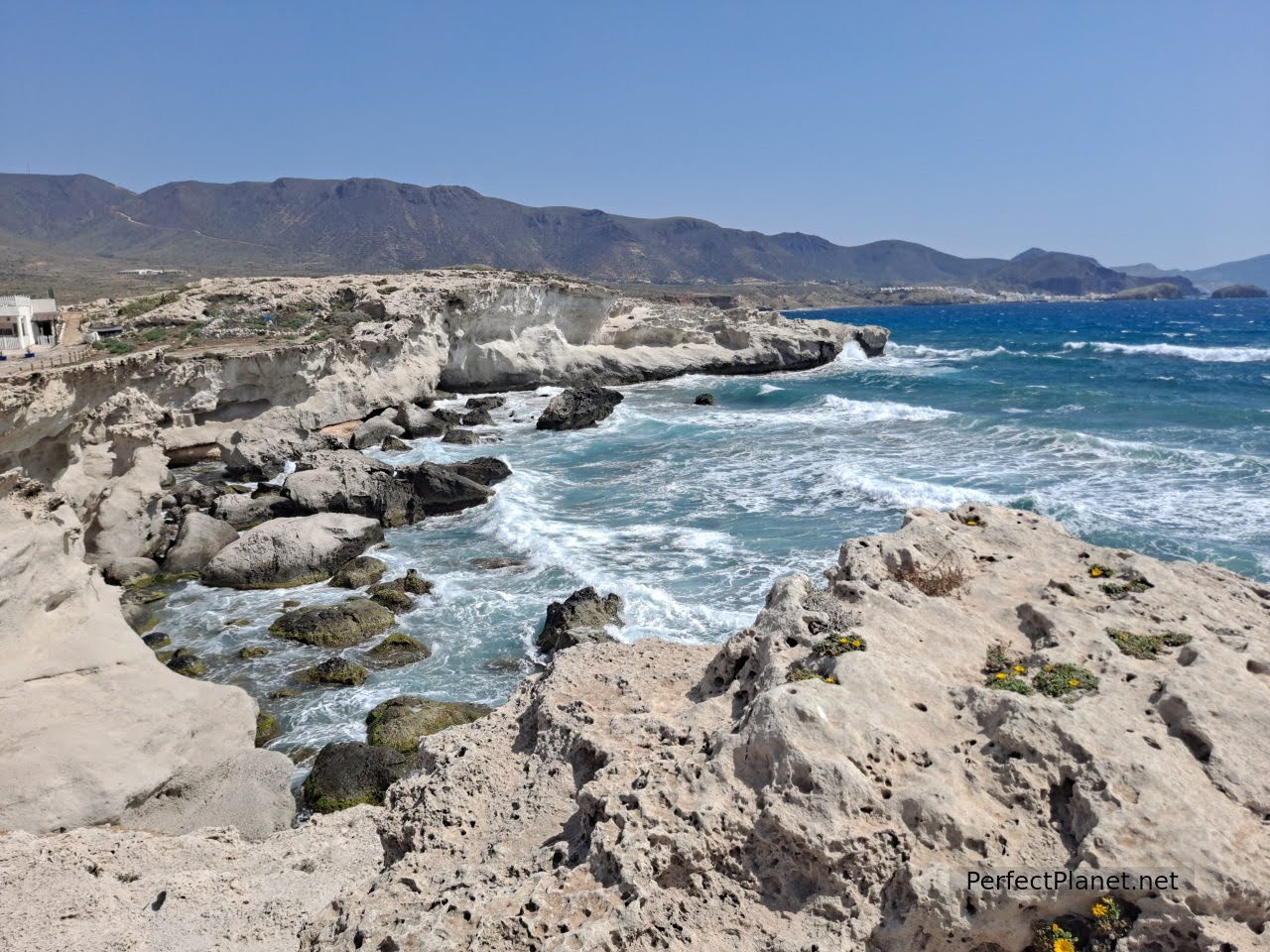
Escullos cliffs
Access: From AL 3100 take the turn-off to AL 4200 in the direction of Las Negras. If you come from AL 3106 take the turning AL 4200 before Las Negras.
Parking. It has a small car park but as it is such a small village there are usually no crowds despite the fact that there is a hotel, a discotheque and a campsite nearby.
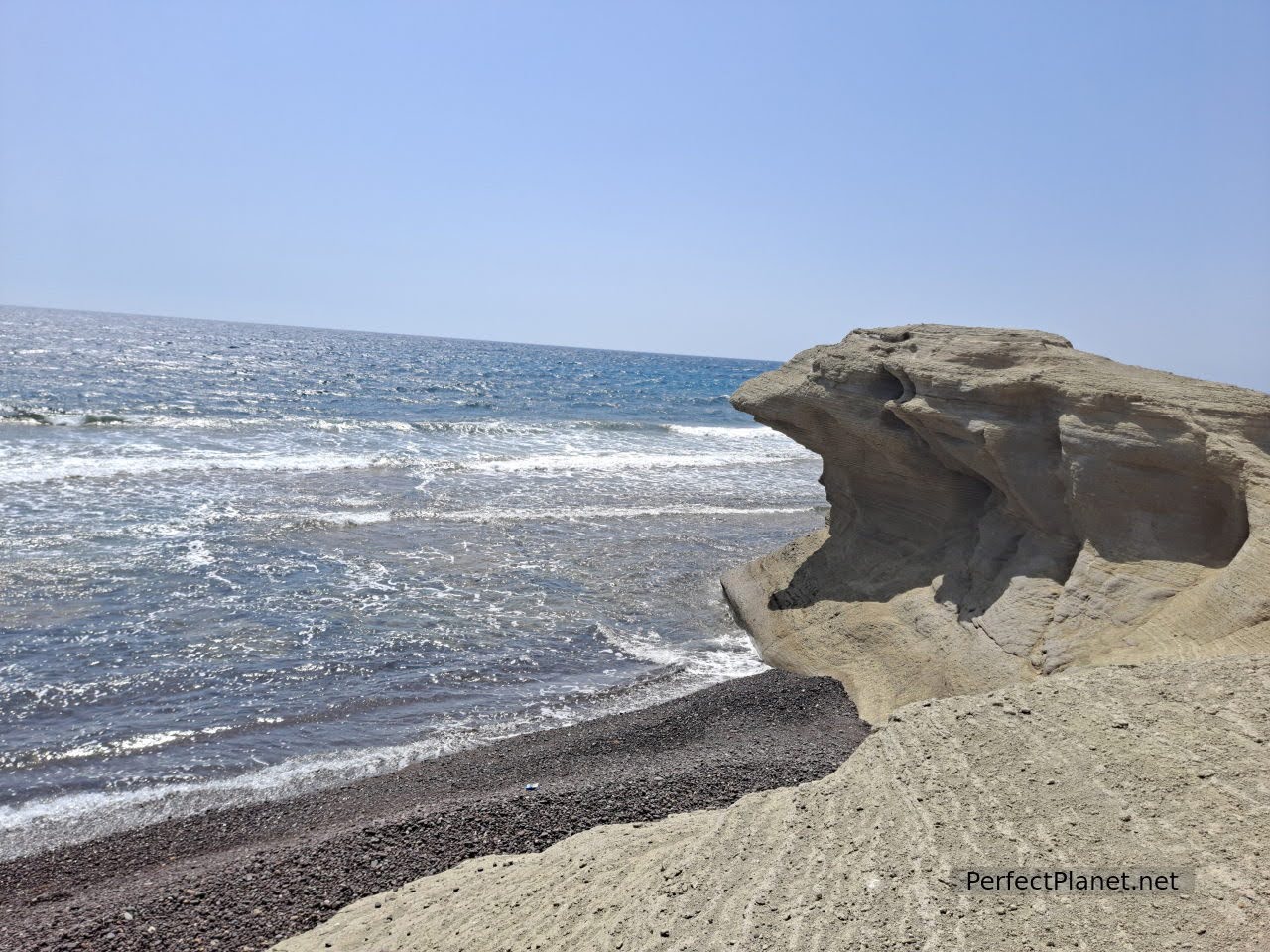
Escullos beach
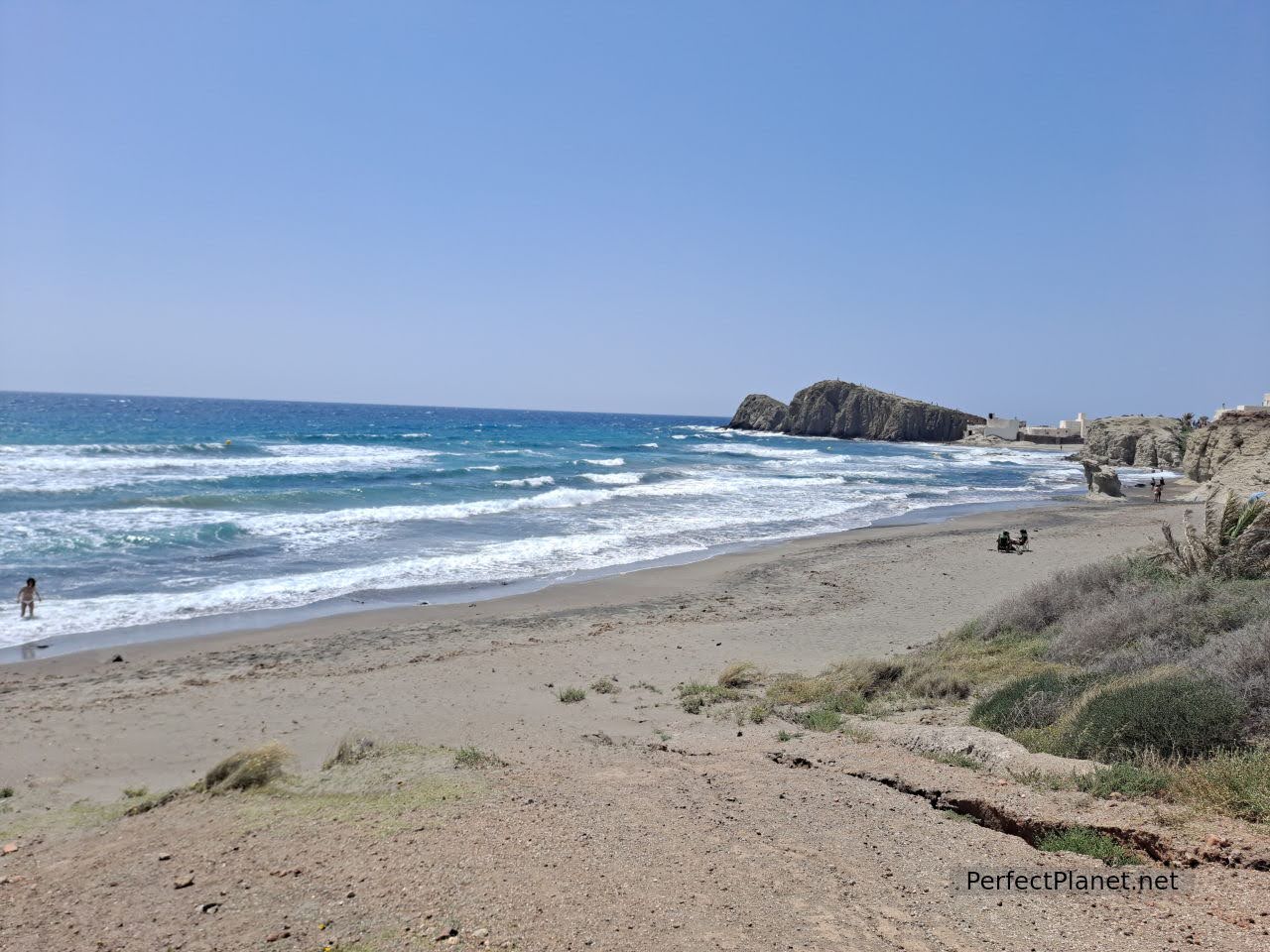
Escullos beach
The Castle of San Felipe stands on the Punta de Esparto and offers impressive views of the coast. Built on the fossilised dune, it served as a defence against pirate aggression.
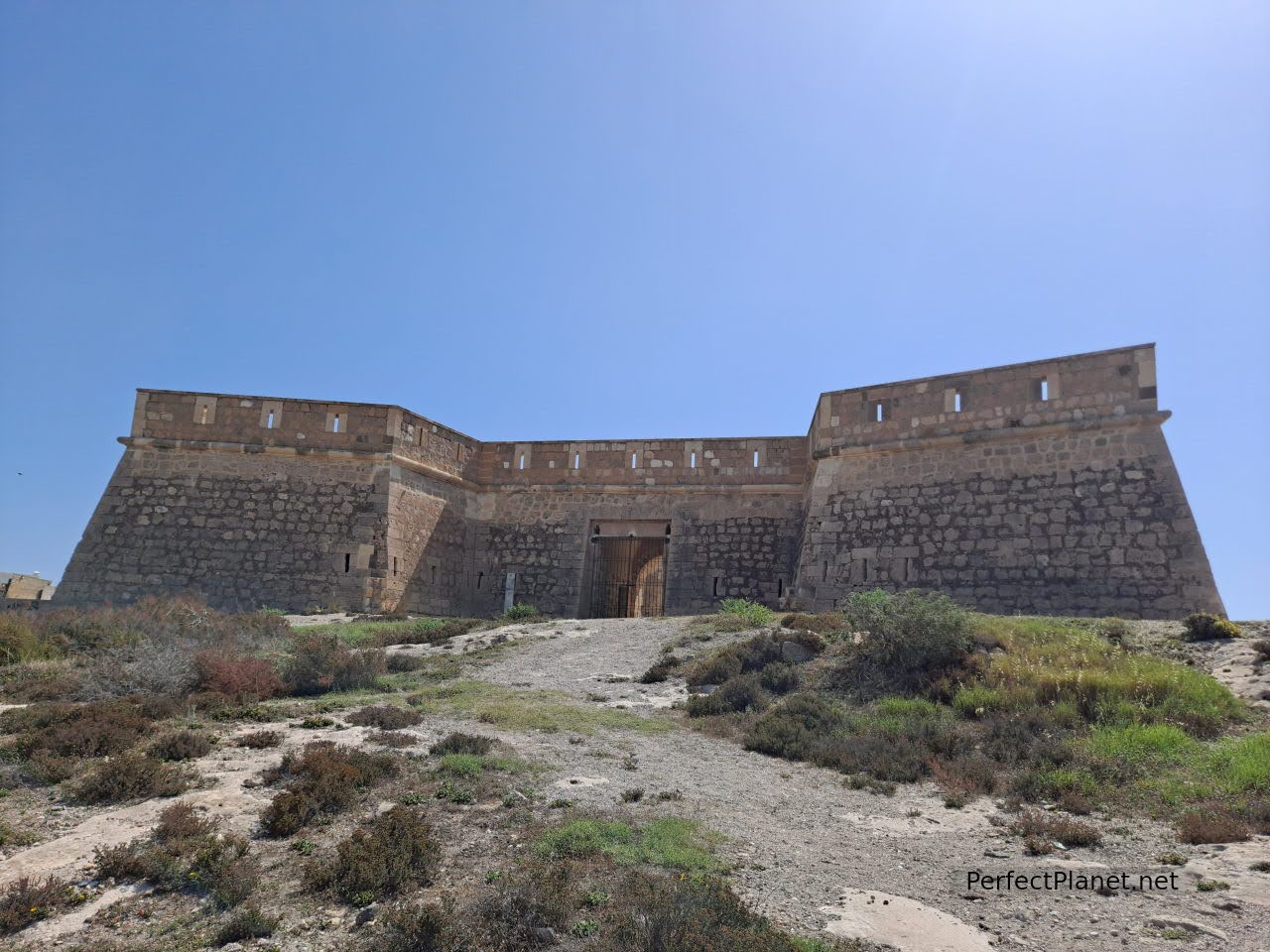
San Felipe Castle
The fossil dune is formed by oolitic sand, dating back to the Quaternary period when the Park was covered by the sea.
Oolites are small spherical particles formed by aggregation of calcium carbonate in concentric layers around a core formed by a grain of sand on the seabed of warm, shallow seas.
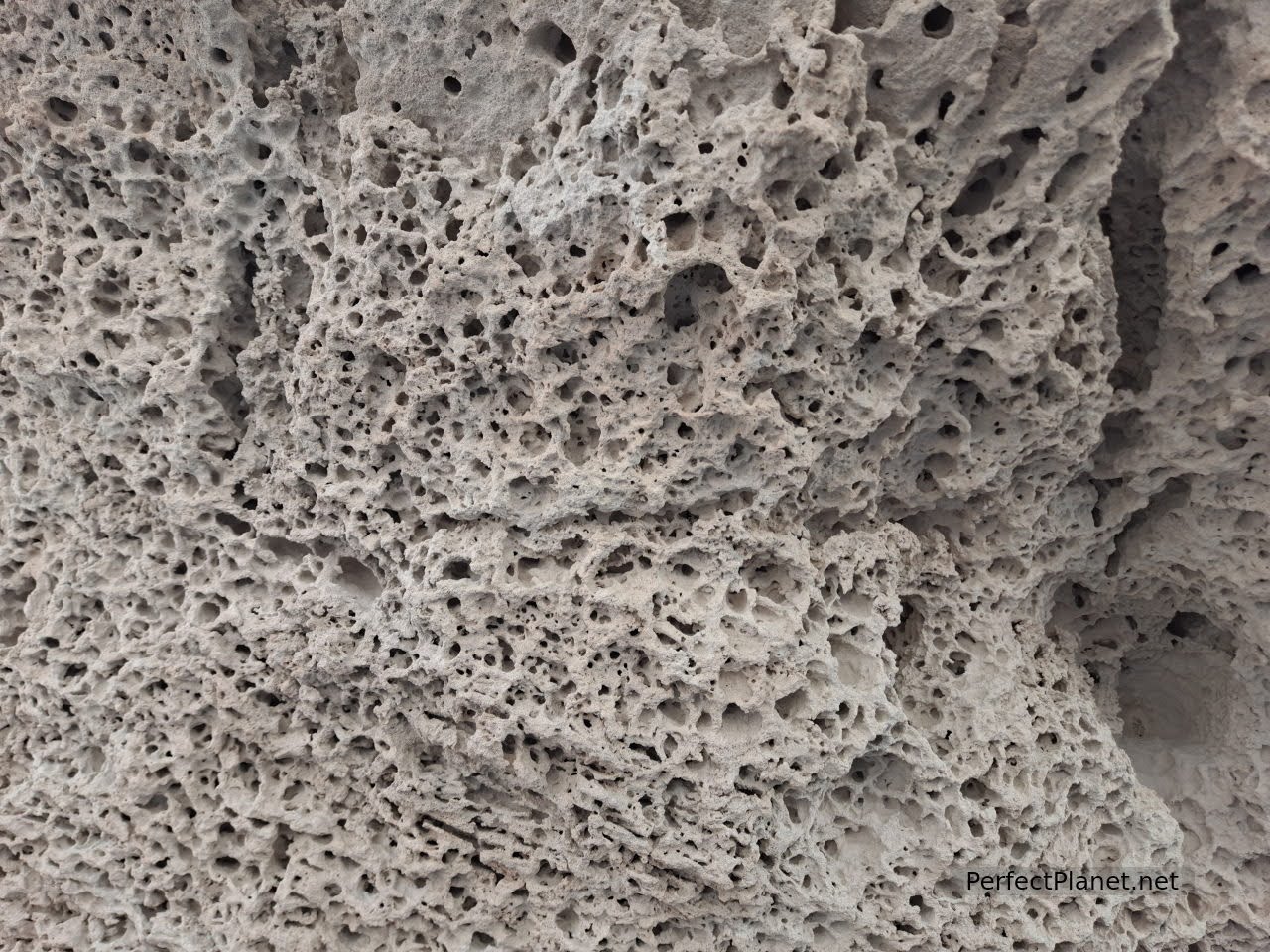
Fossil dune
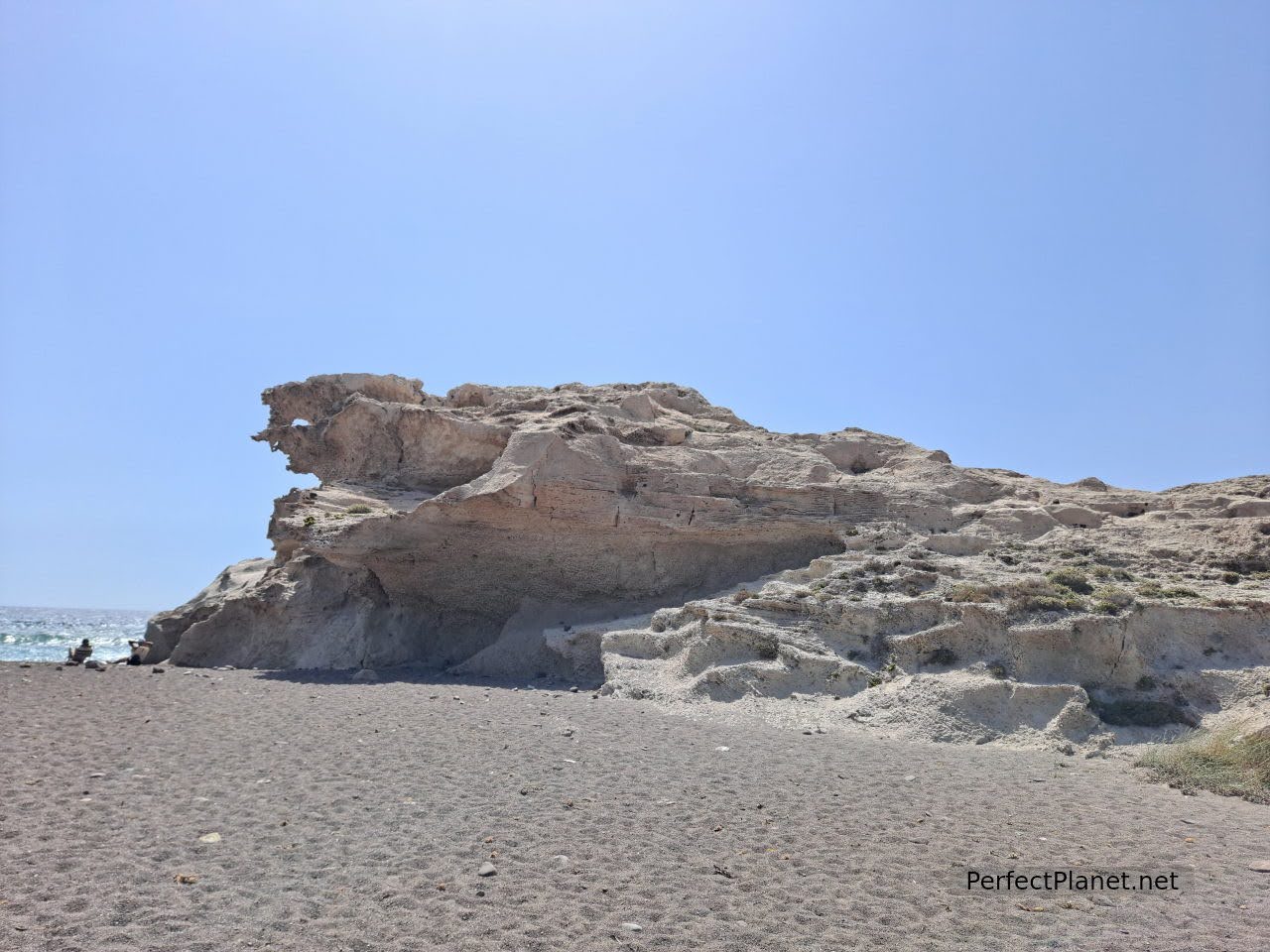
Fossil dune
It's a real beauty. Especially the views from the arch area over the cliffs of the Arco and Esparto beaches. Beautiful sandy and rocky beaches suitable for swimming, perfect for lovers of lost places, diving and snorkelling. Another must if you visit the area.
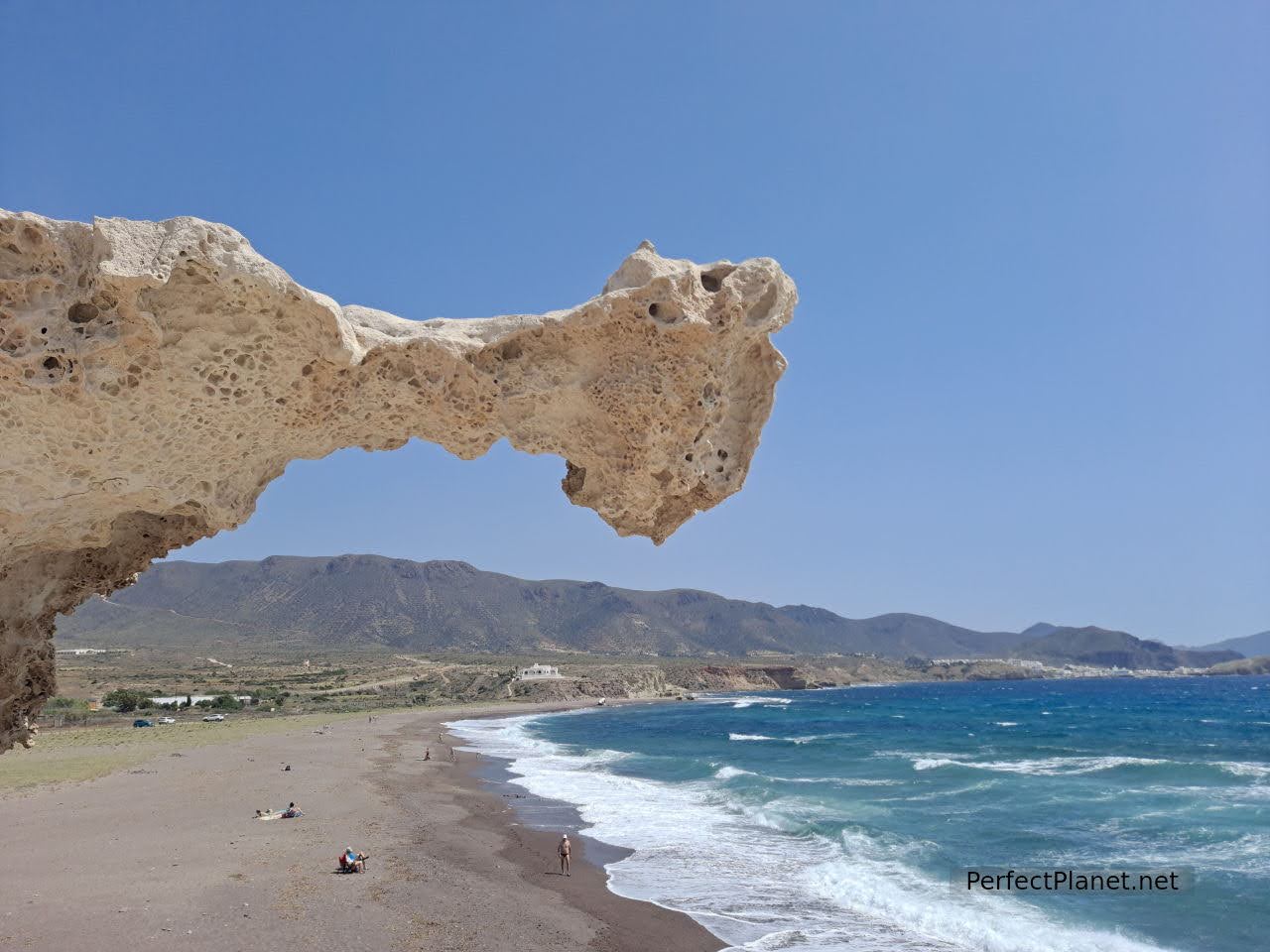
Arco beach
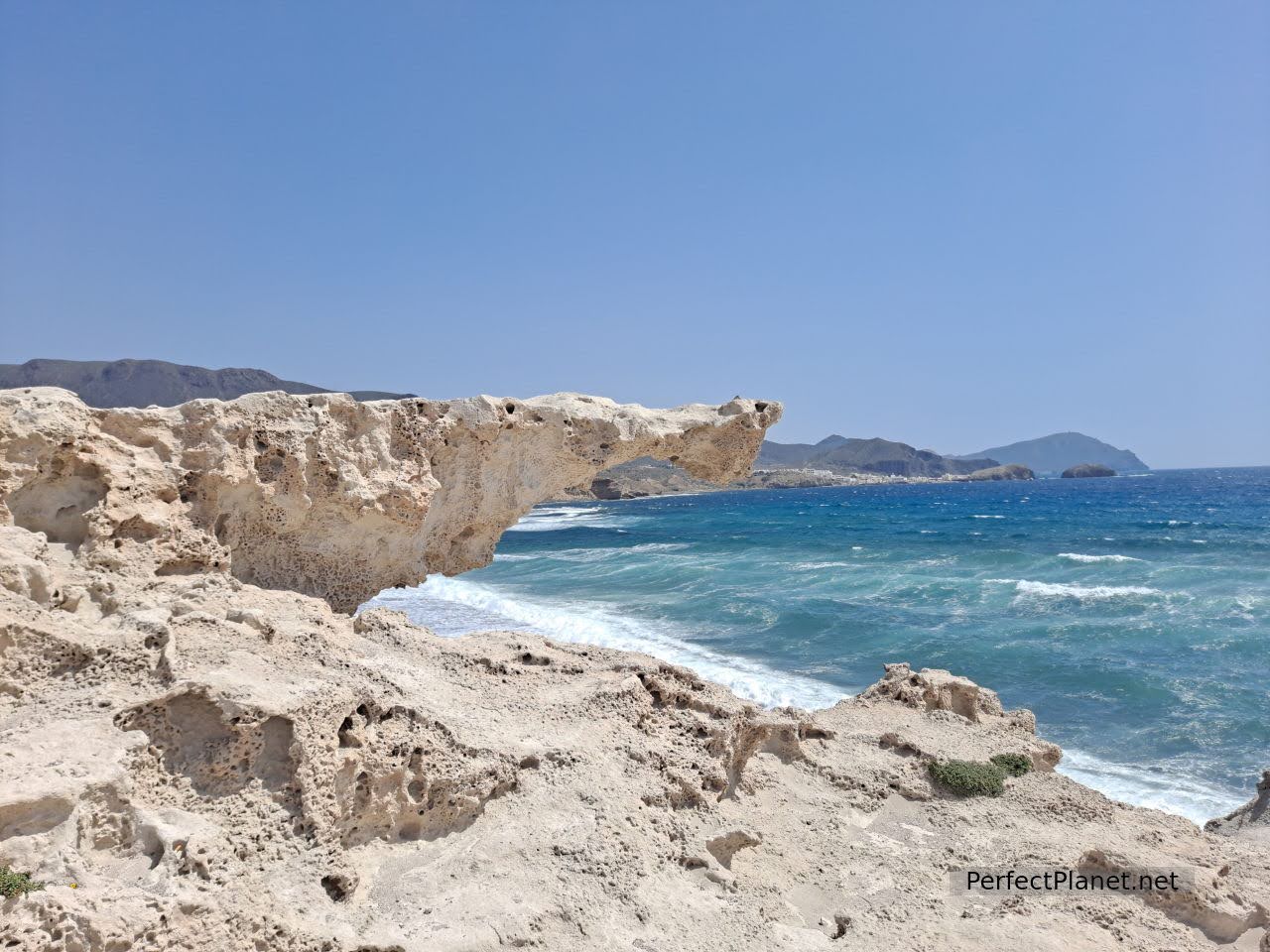
Arco beach
You can stay at Los Escullos campsite or at the los Escullos hotel.
5. La Isleta del Moro and Amatista viewpoint
This small fishing village is worth a visit. White houses, narrow streets. The beach of Peñón Blanco and a cove where you can practise sea sports and where you can find boats.
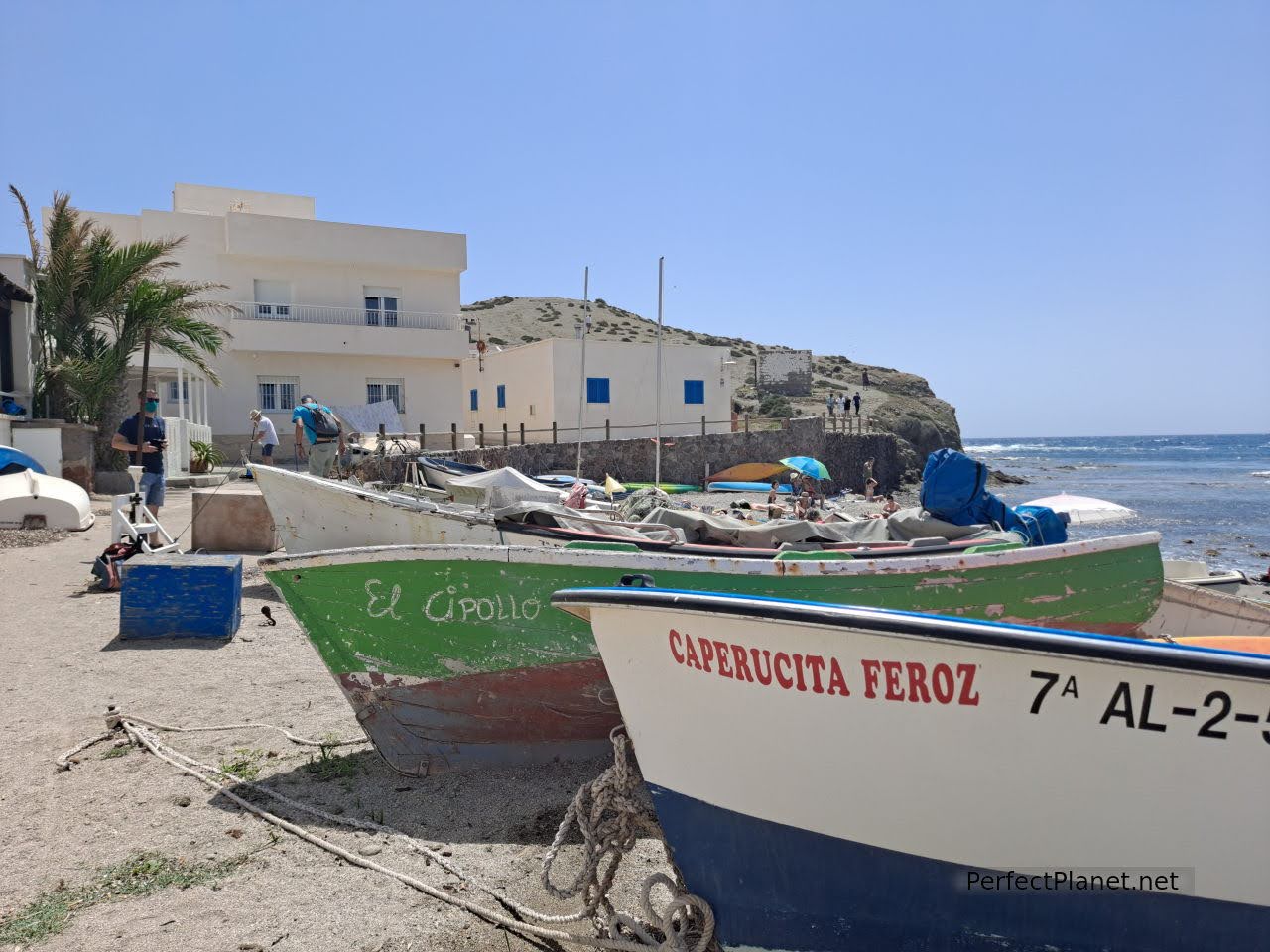
Isleta del Moro
From the jetty you can access the islet that gives its name to the village, the Isleta del Moro, with beautiful views, just sit back and enjoy.
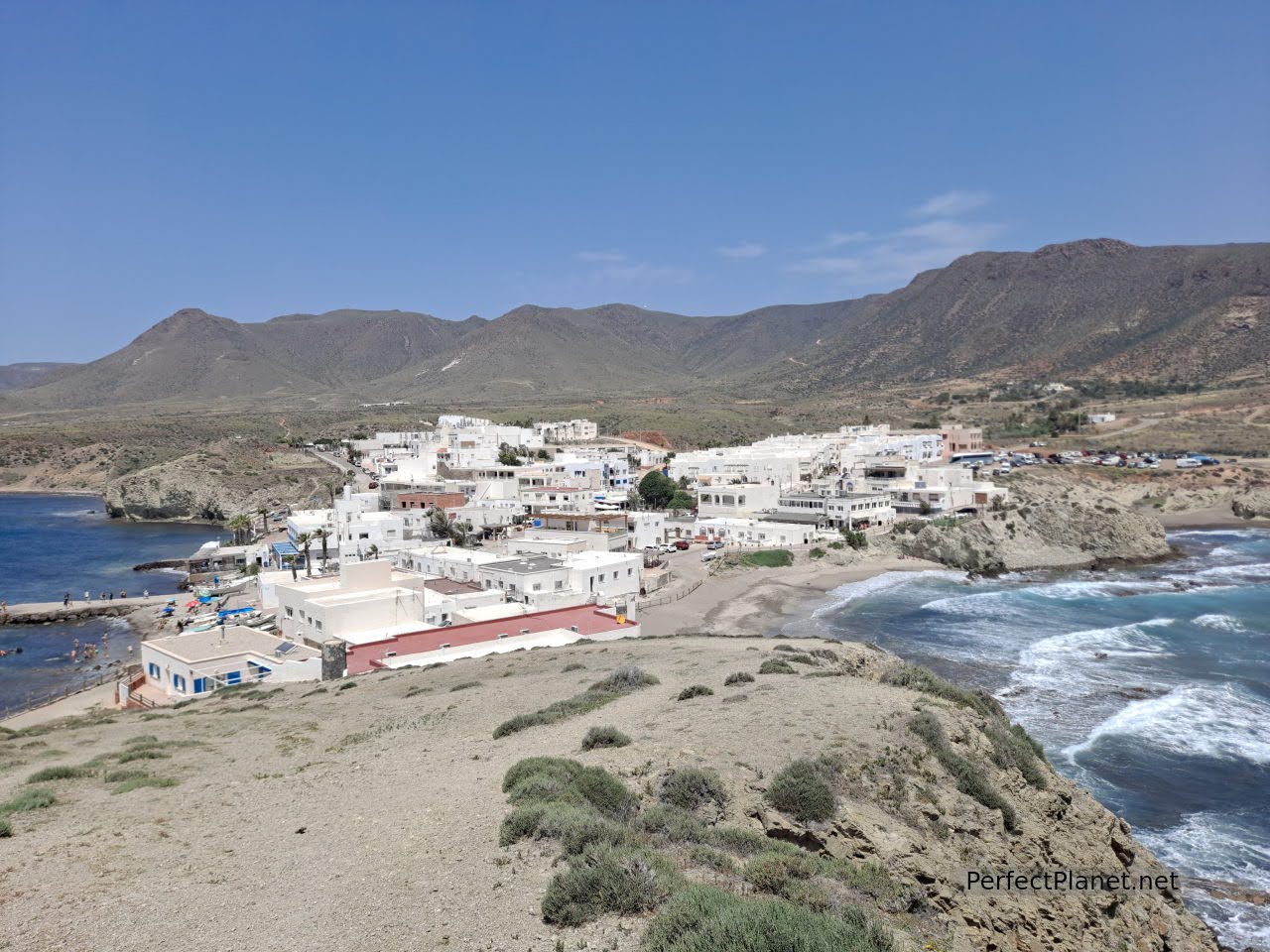
Isleta del Moro
Although the village is small, there are several restaurants where you can enjoy the gastronomic wonders of the area. We recommend the restaurant La Ola..
You can go hiking either in the direction of Arco beach or in the direction of Cala del Toro.
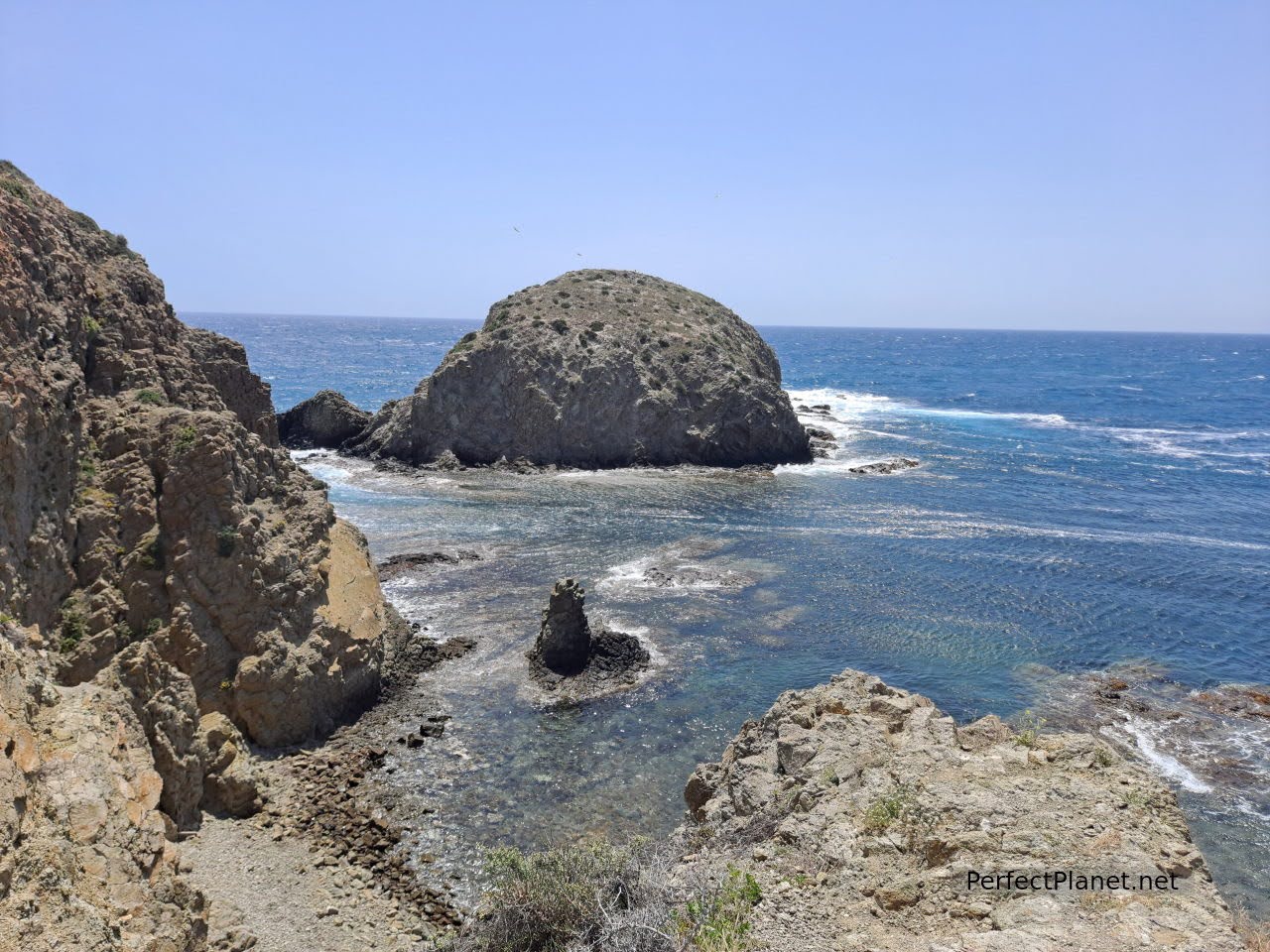
Isleta del Moro
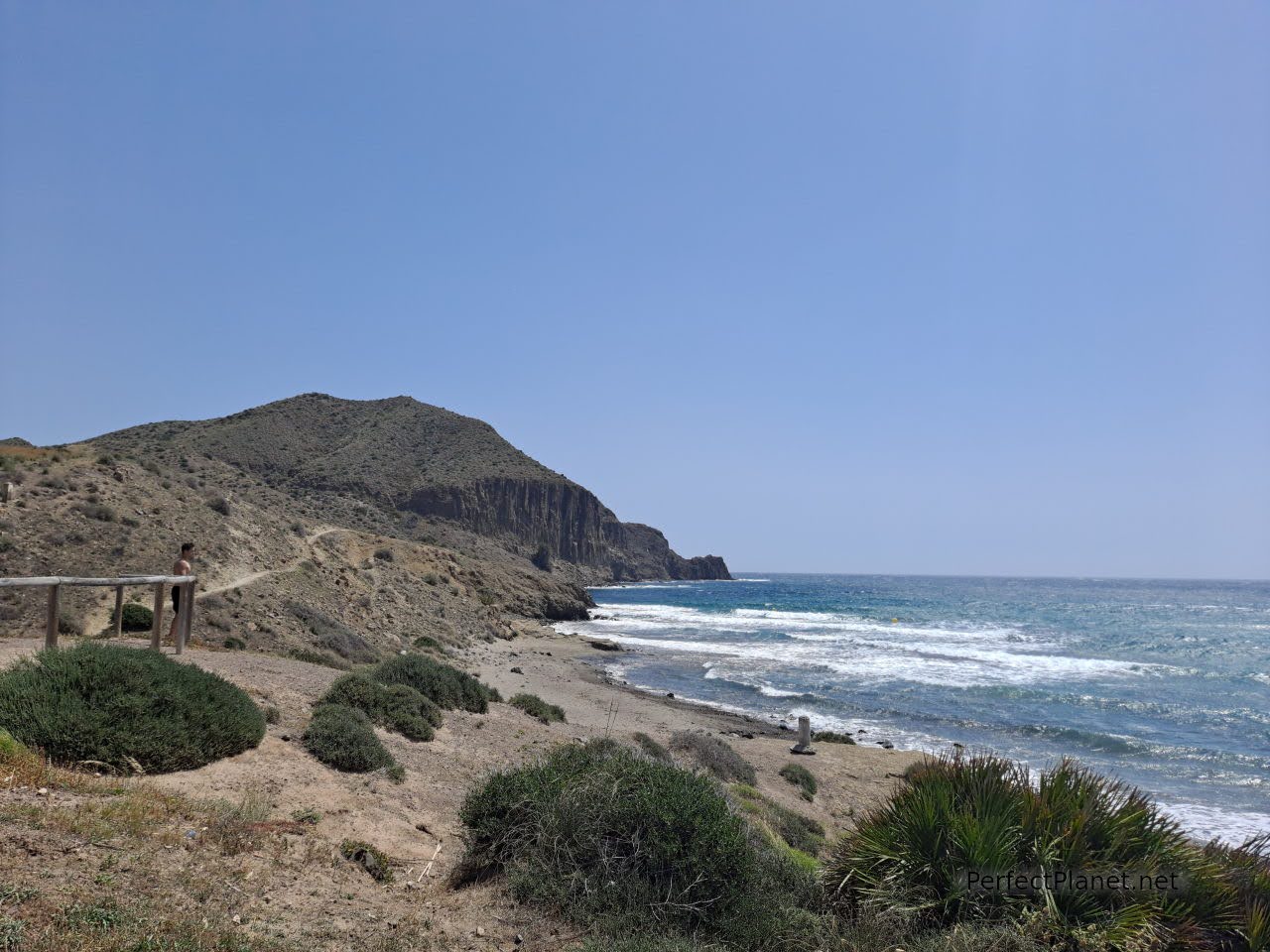
Peñón Blanco beach
If you continue along the AL4200 road towards Rodalquilar, you will come to the Amatista viewpoint on the right hand side. It is a beautiful place to stop and enjoy the views again.
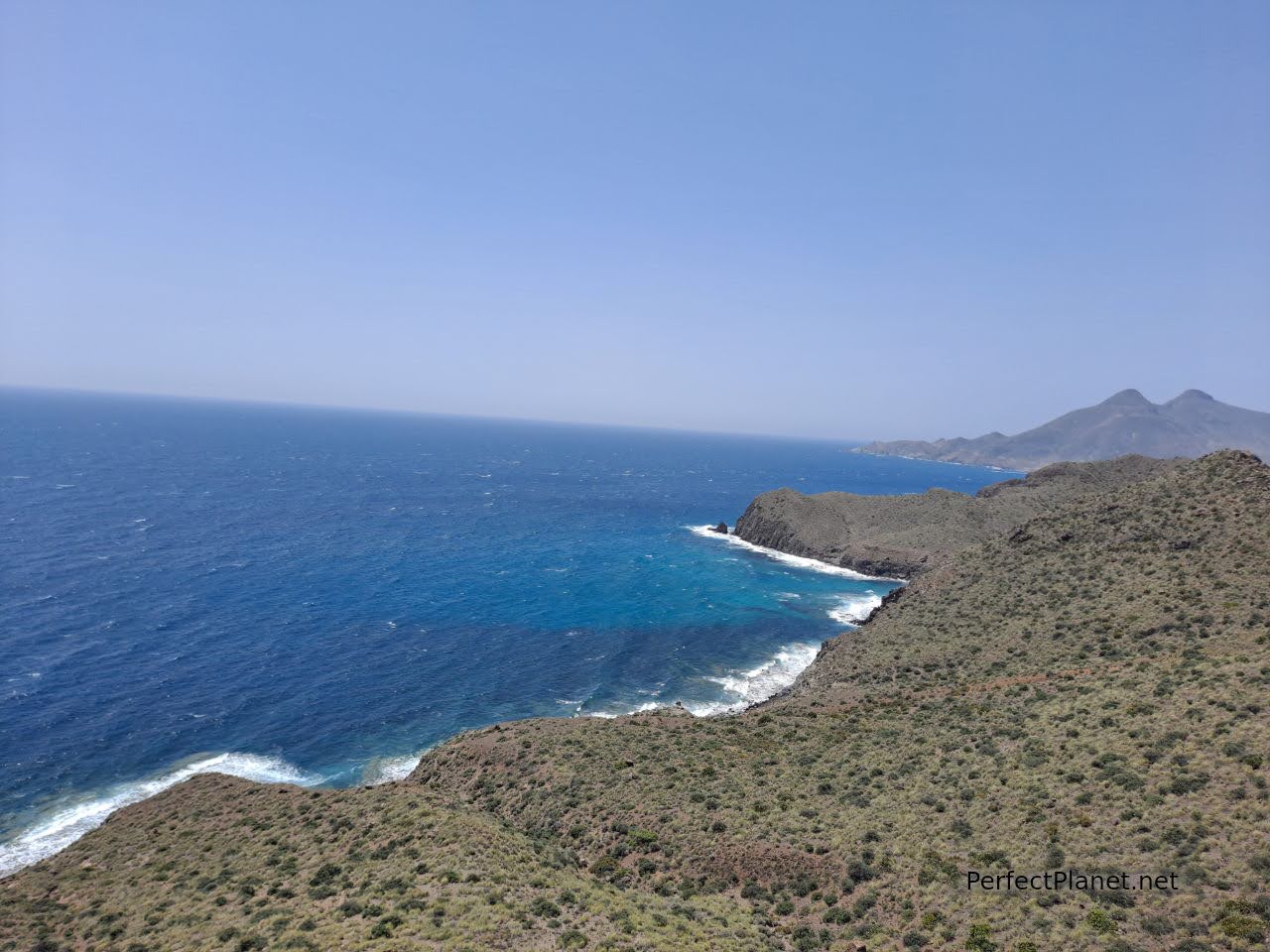
Amatista viewpoint
6. Rodalquilar and el Playazo
Rodalquilar is a small inland village perfect to learn about the mining history of the area and visit its botanical garden with endemic species. It still preserves the huts where the workers used to live, dedicated to the extraction of gold and alum.
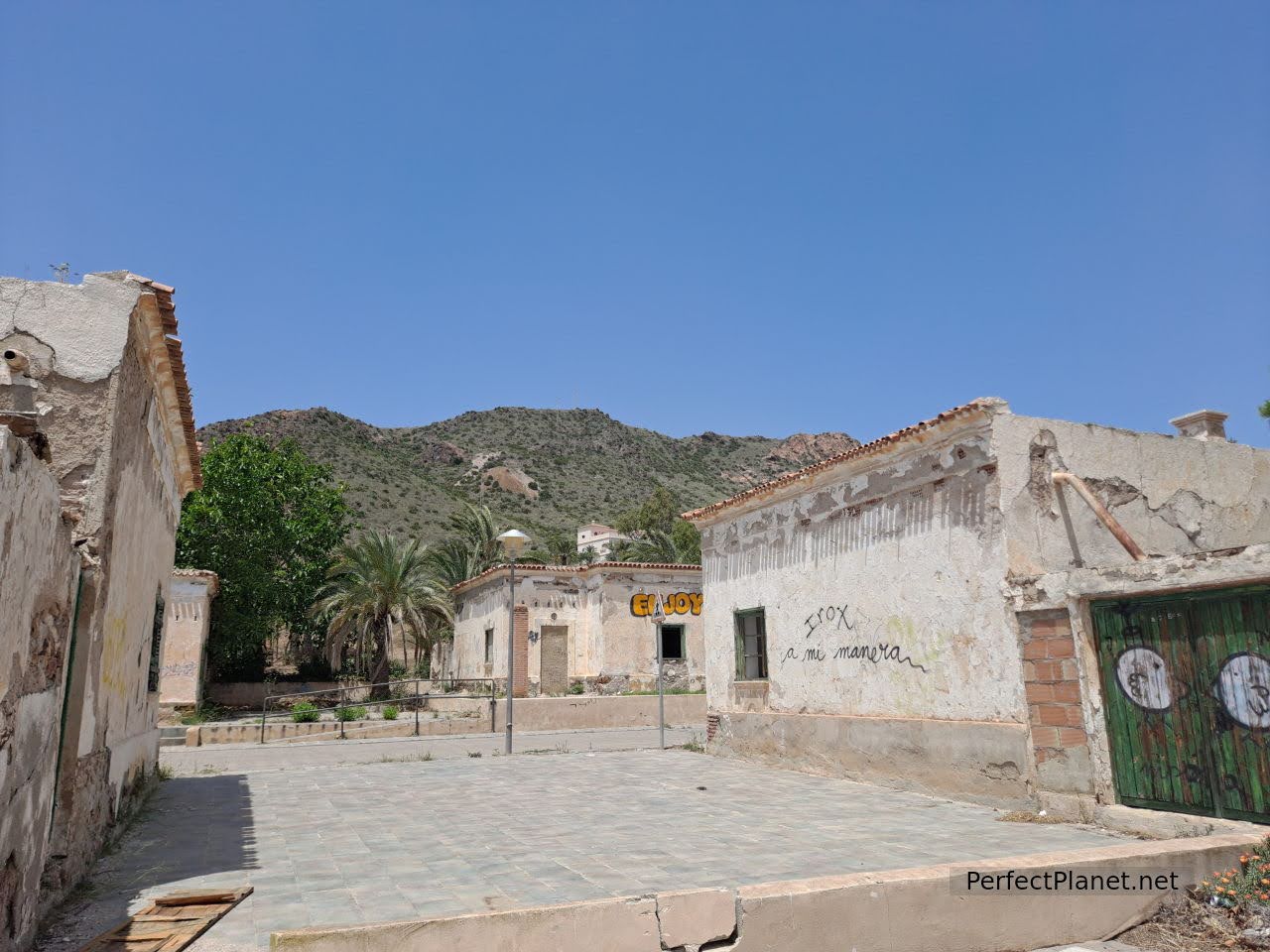
Rodalquilar
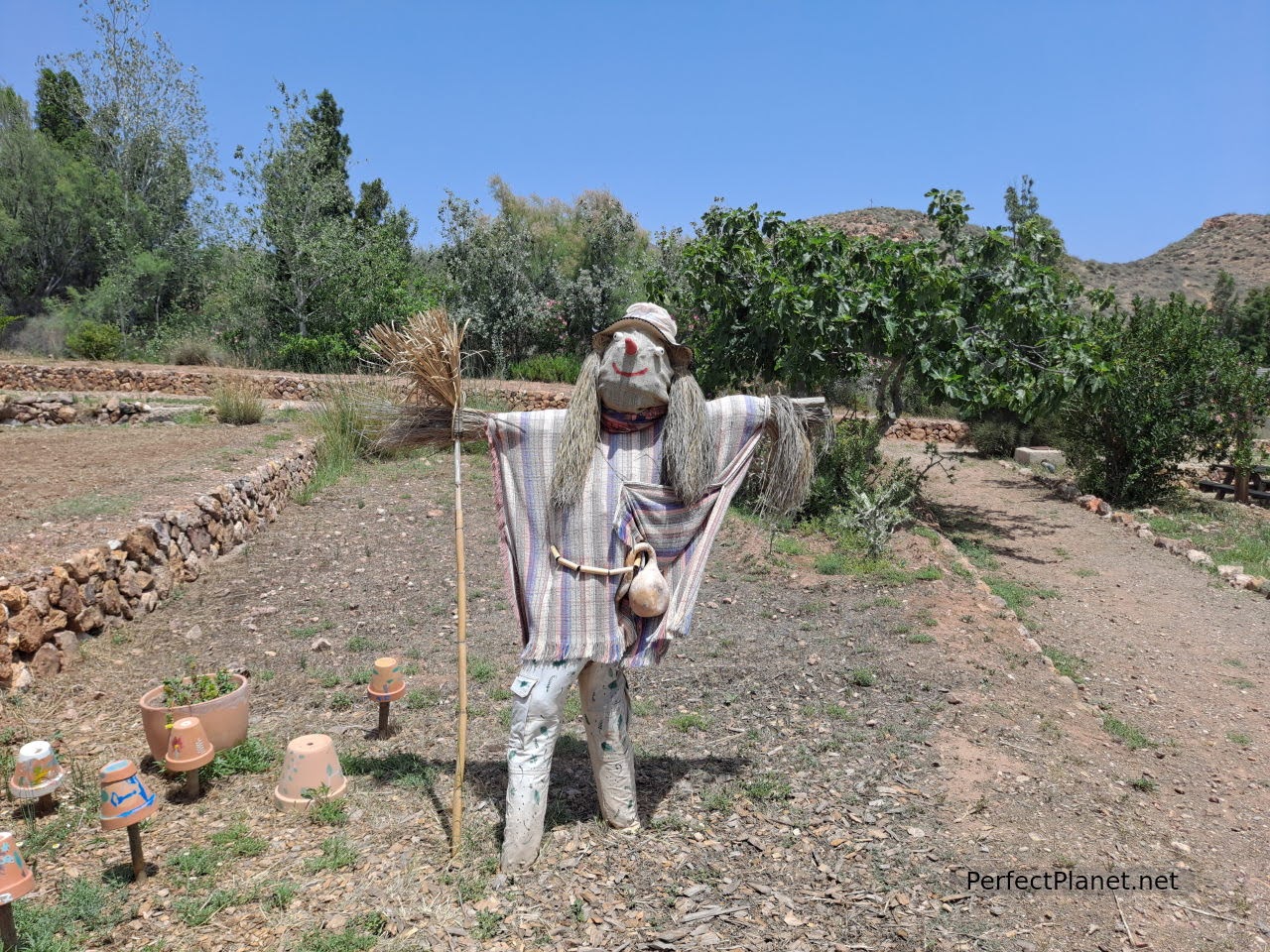
Botanic garden
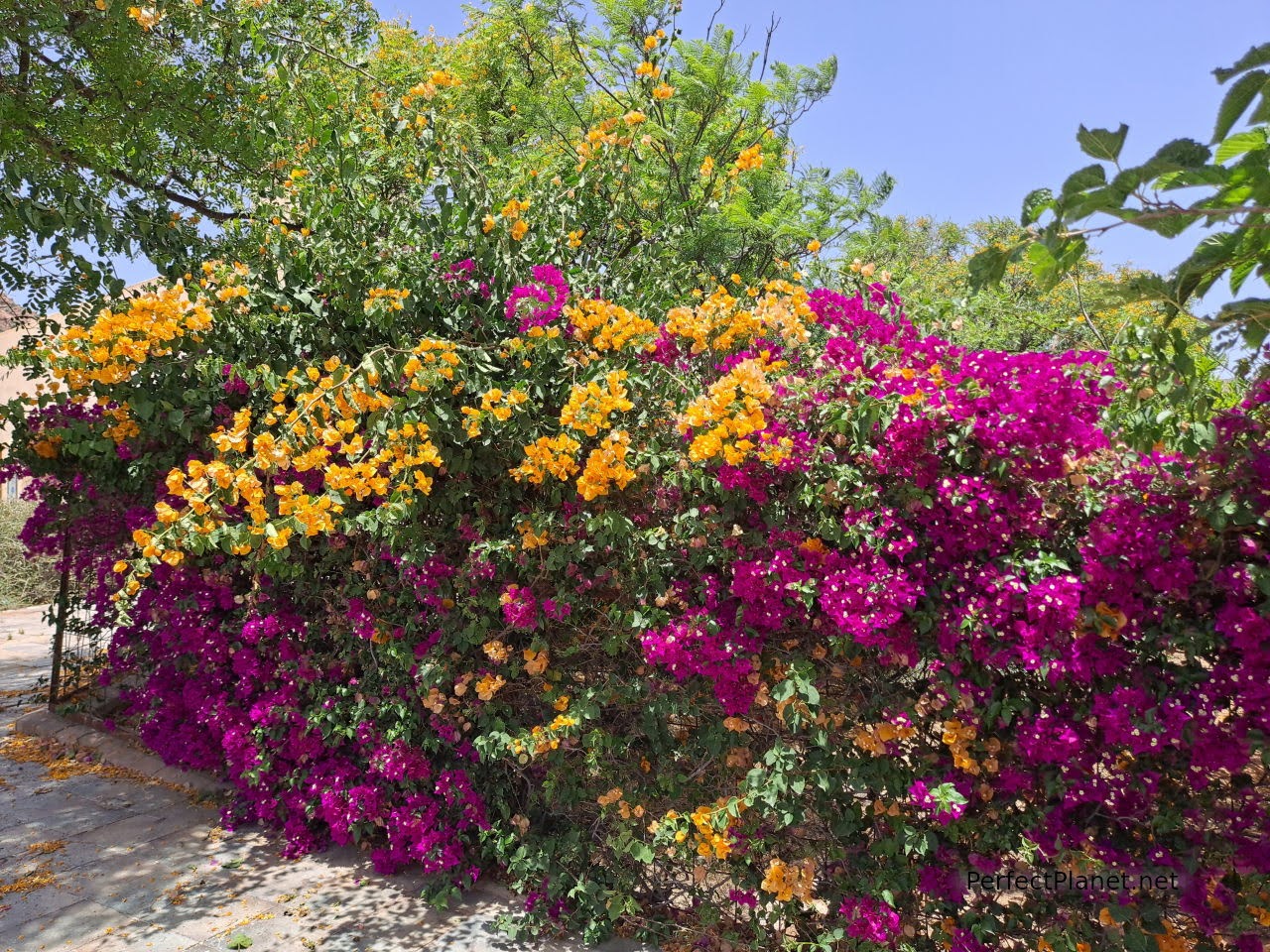
Botanic garden
It is also a good place to have lunch or dinner. We recommend Bar Fidel. Delicious grilled fish. Very good value for money. We had some spectacular sardines.

Sardines
Botanical park: free entrance.
Lunch: Bar Fidel 24€/two people.
Very close to Rodalquilar is the beach known as El Playazo. On the access road to the beach is the Torre de los Alumbres, which was used as a backdrop for the filming of some movies. A curious place to make a stop.
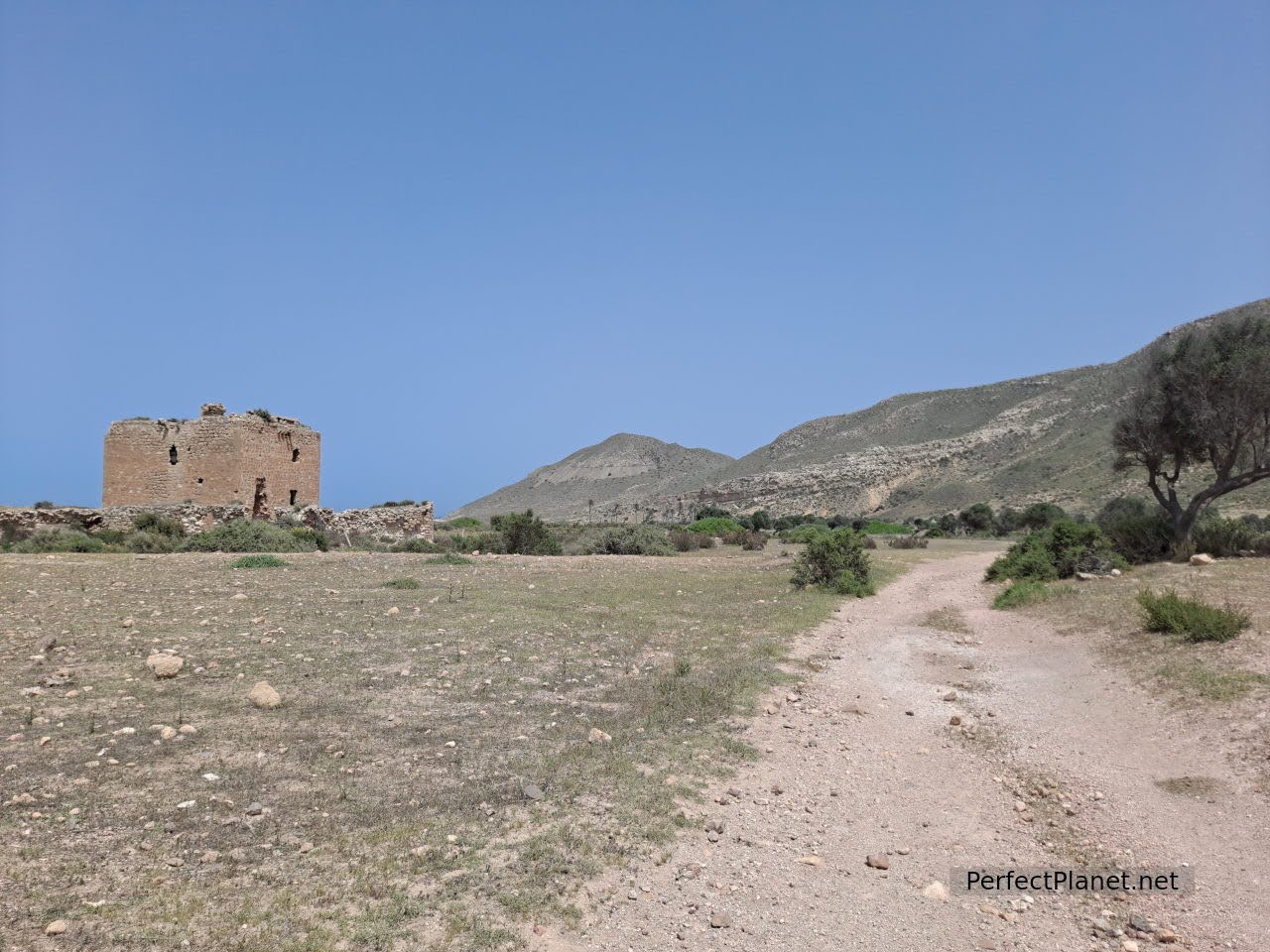
Alum Tower
Once in El Playazo you must visit the Castle of San Ramón, which was built in the 18th century as a defensive building. It is currently in private hands and its interior can be visited, although it is not always open. The views from the castle are spectacular.
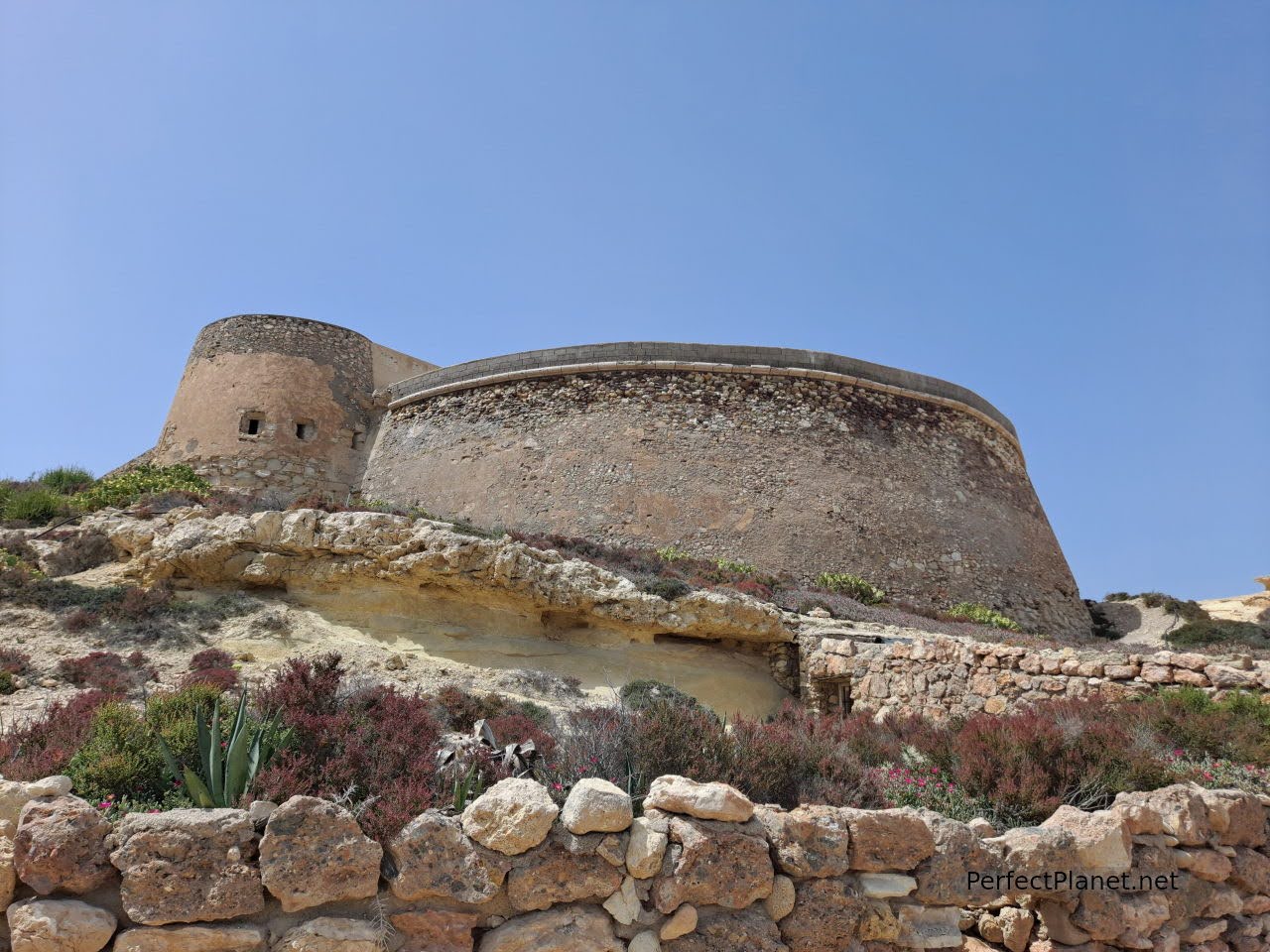
Castle of San Ramon
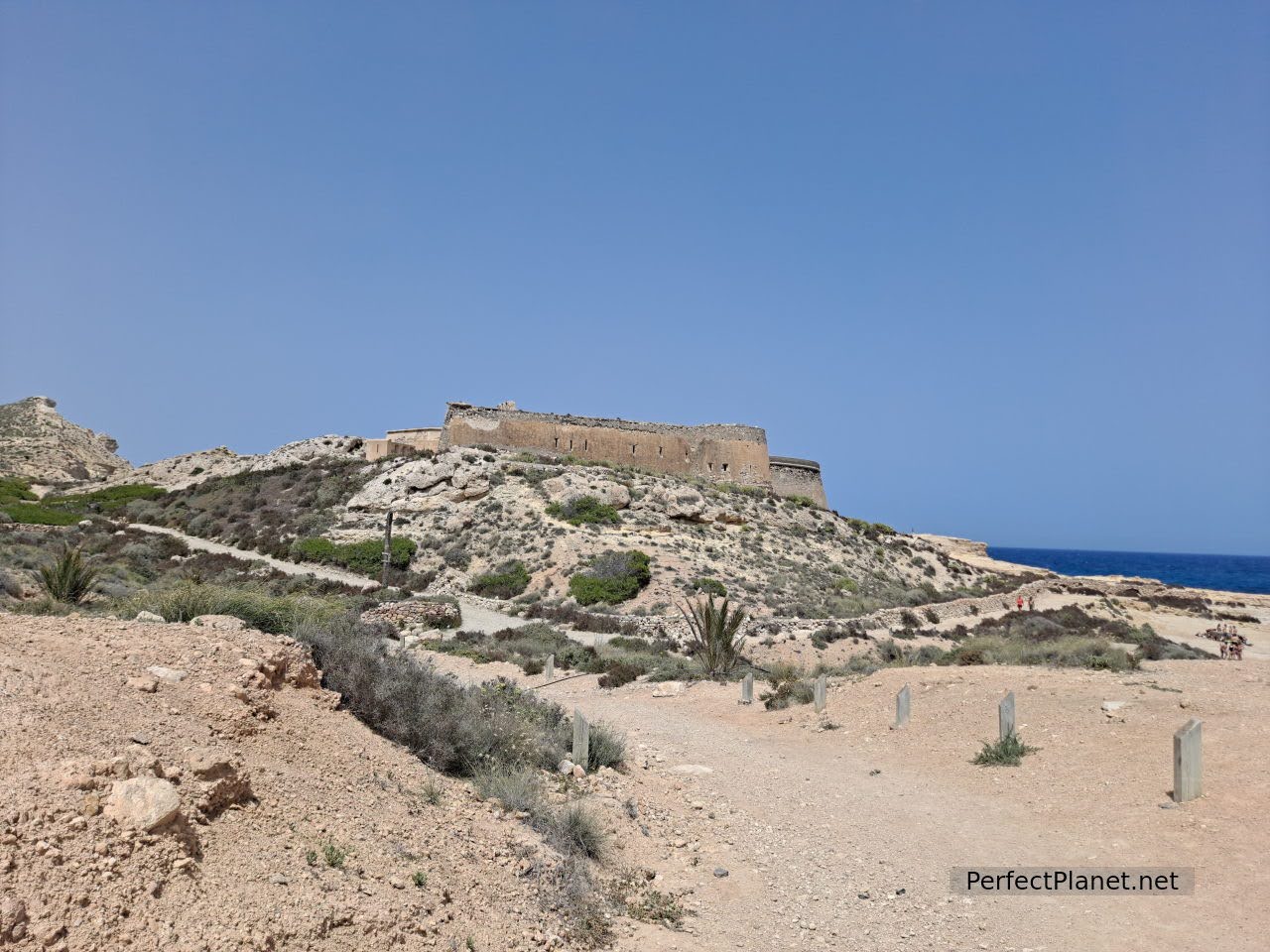
Castle of San Ramon
El Playazo is set in a desert terrain flanked by mountains. The sand is fine and golden but not free of strong currents. The car park is not very big. Like all the beaches of the Park outside urban centres, it does not have a beach bar.
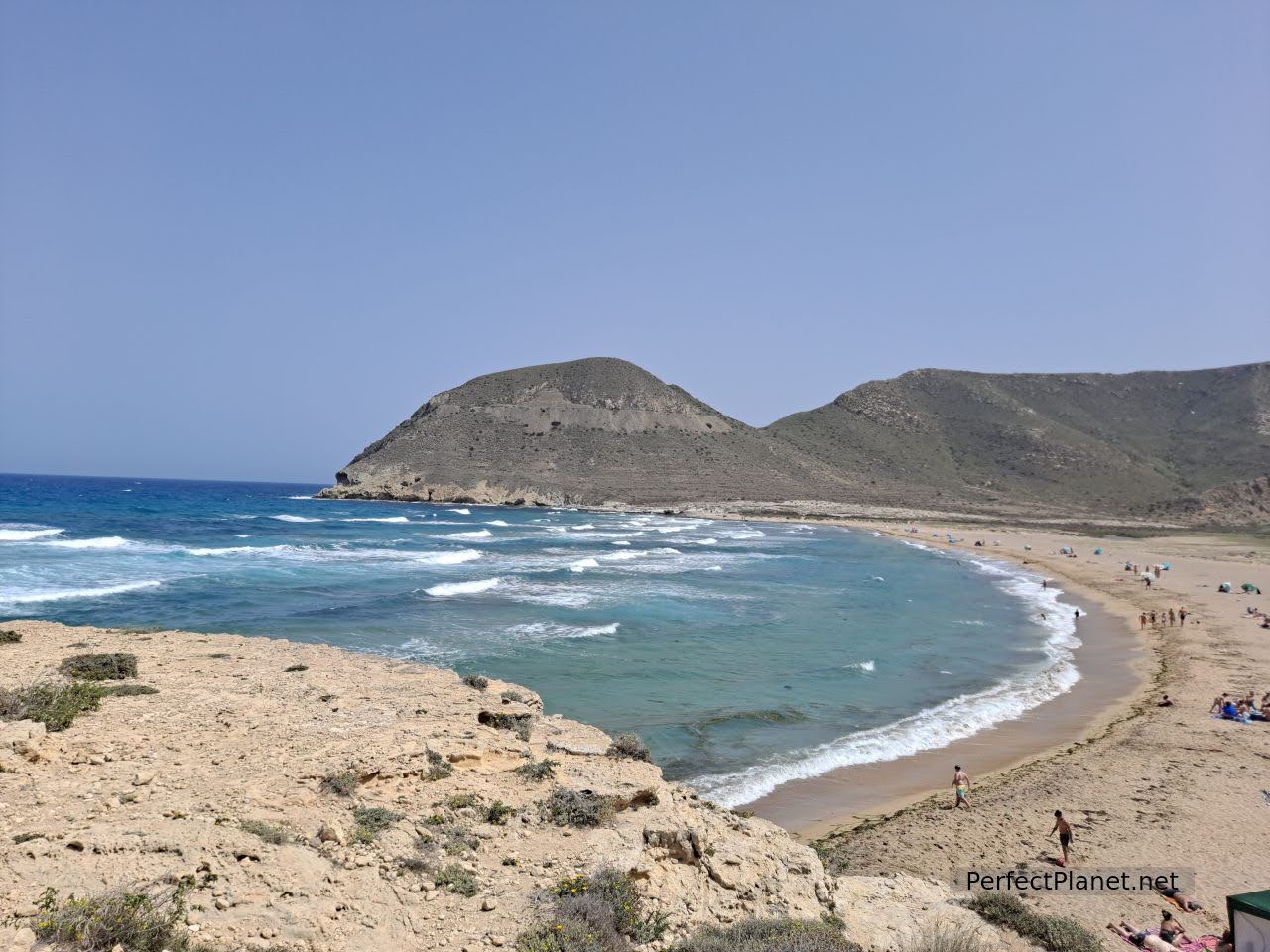
El Playazo
If we continue in a northerly direction we reach Las Negras, a very authentic coastal village sheltered by the Cerro Negro, a large volcanic mass.
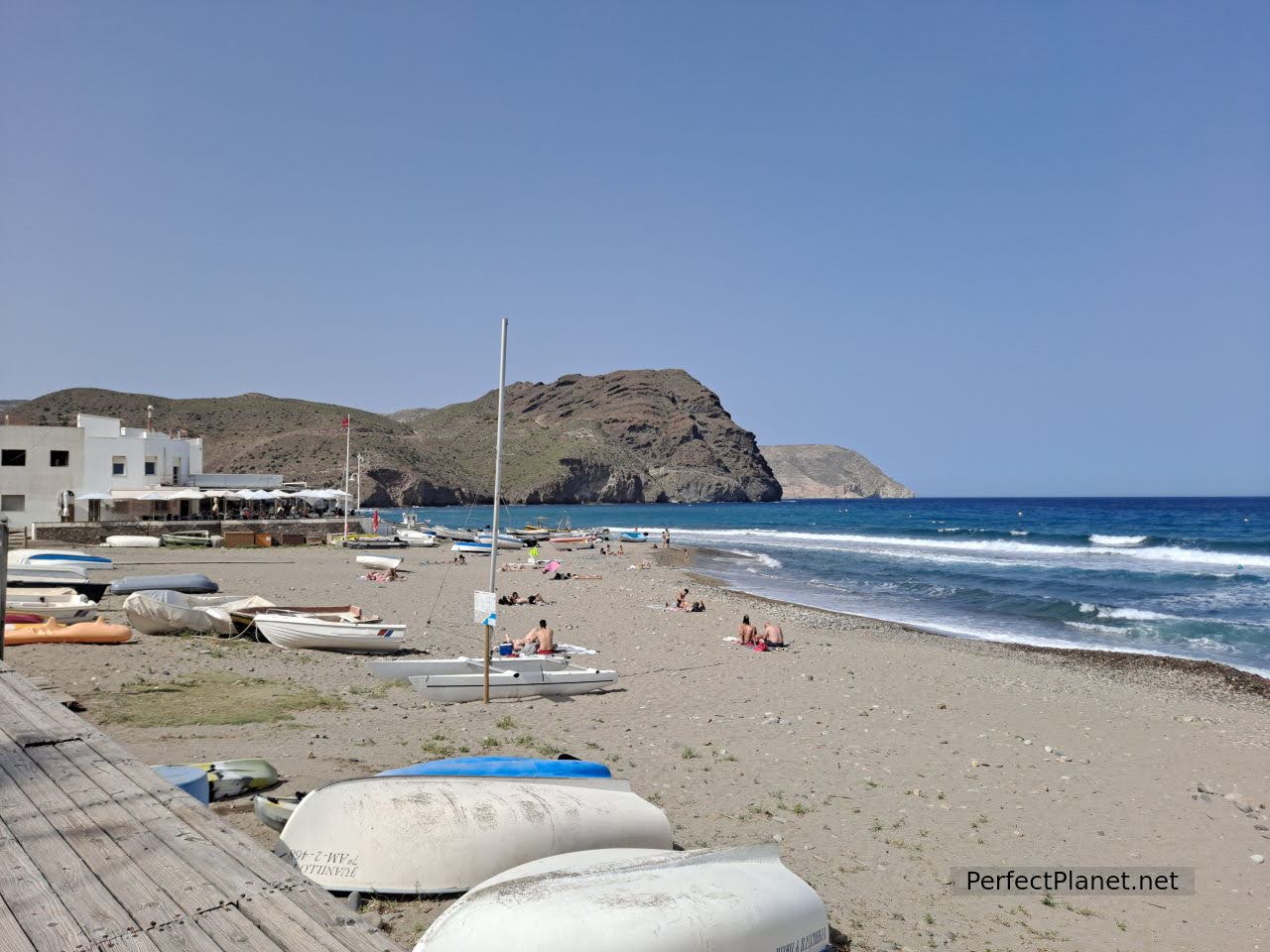
Las Negras beach
From Las Negras you can take a footpath to Cala de San Pedro beach, which takes about thirty minutes. Remember comfortable shoes and water, or you can take a boat from Las Negras beach which will take you to the cove for €10.
7. Cabo de Gata Lighthouse and Sirenas reef
The Cabo de Gata Lighthouse is located at the southernmost tip of the Park. Built in the 19th century, it was erected on the ruins of an ancient castle. It was already known to the Greeks and Phoenicians and has always been a reference point for navigators as it served as a warning of the nearby reef.

Cabo de Gata Lighthouse
It is an emblematic spot and one of the best places to watch the sunset.
On one side of the Cape, the Corralete beach and on the other the spectacular Sirenas reef. From the lighthouse car park, the Sirenas viewpoint offers you the opportunity to admire its beauty.
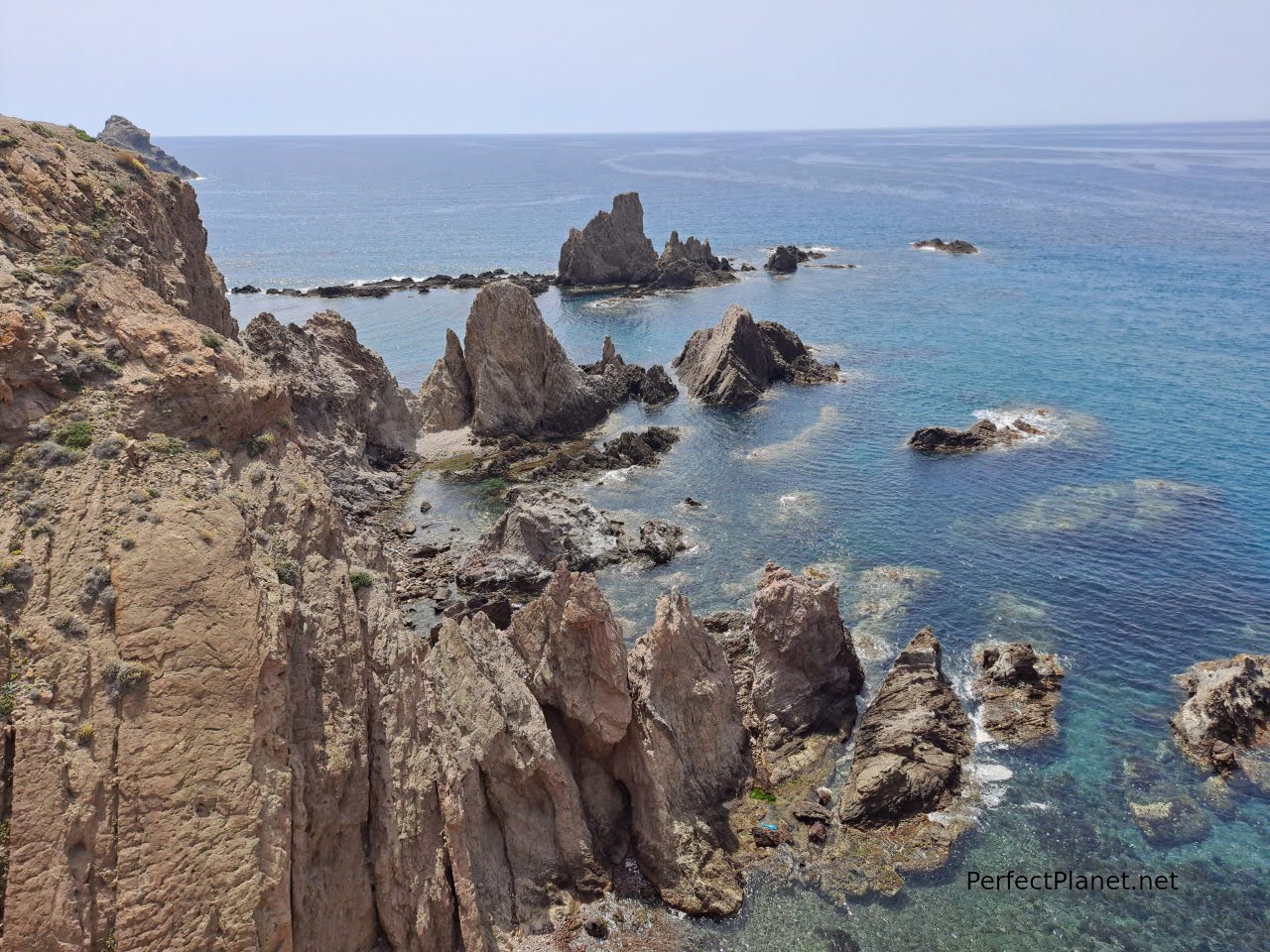
Sirenas reef
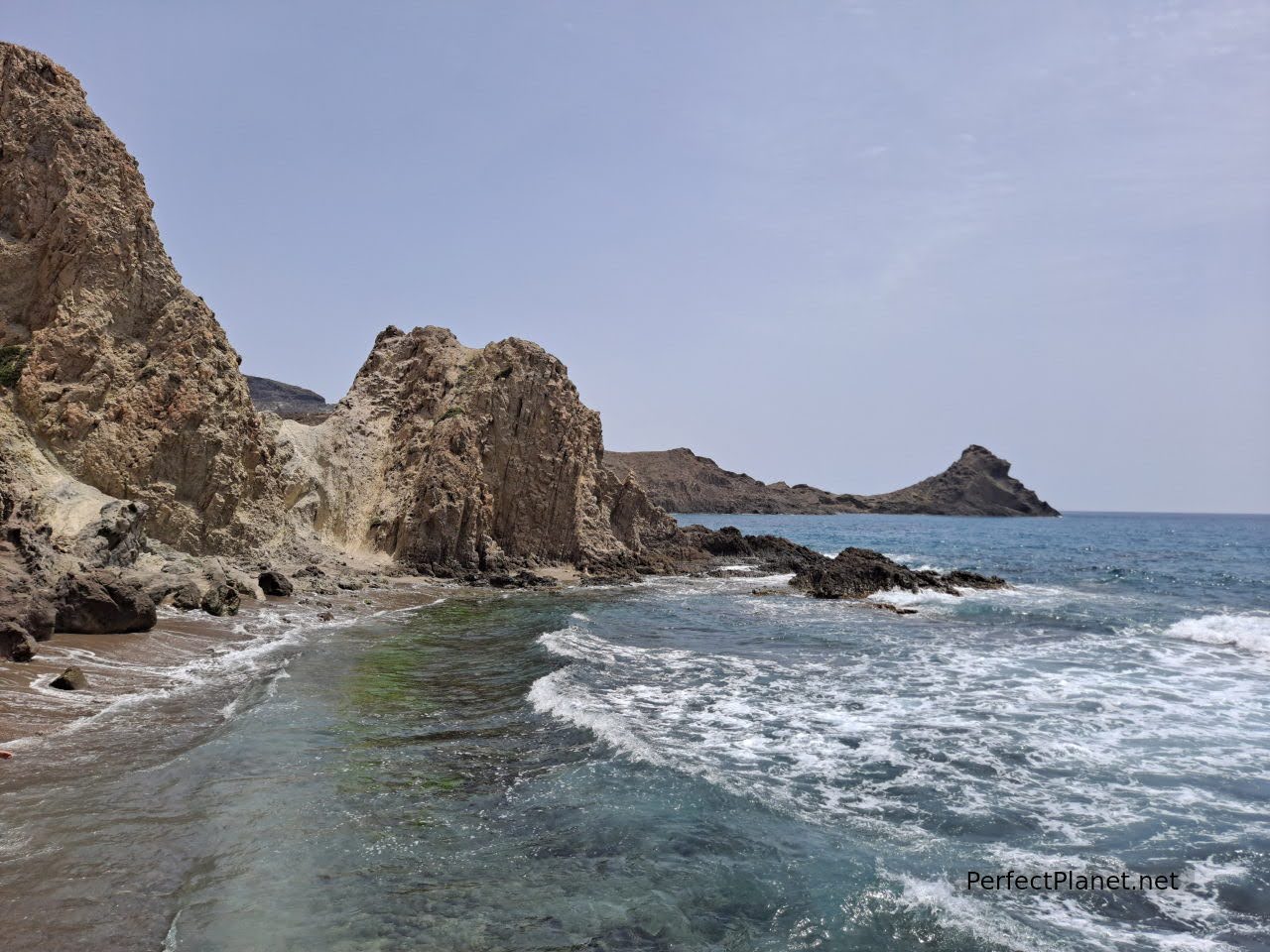
Sirenas reef
This reef is one of the best for diving and snorkelling, its marine biodiversity and the beautiful turquoise waters that bathe it make it a very special place.
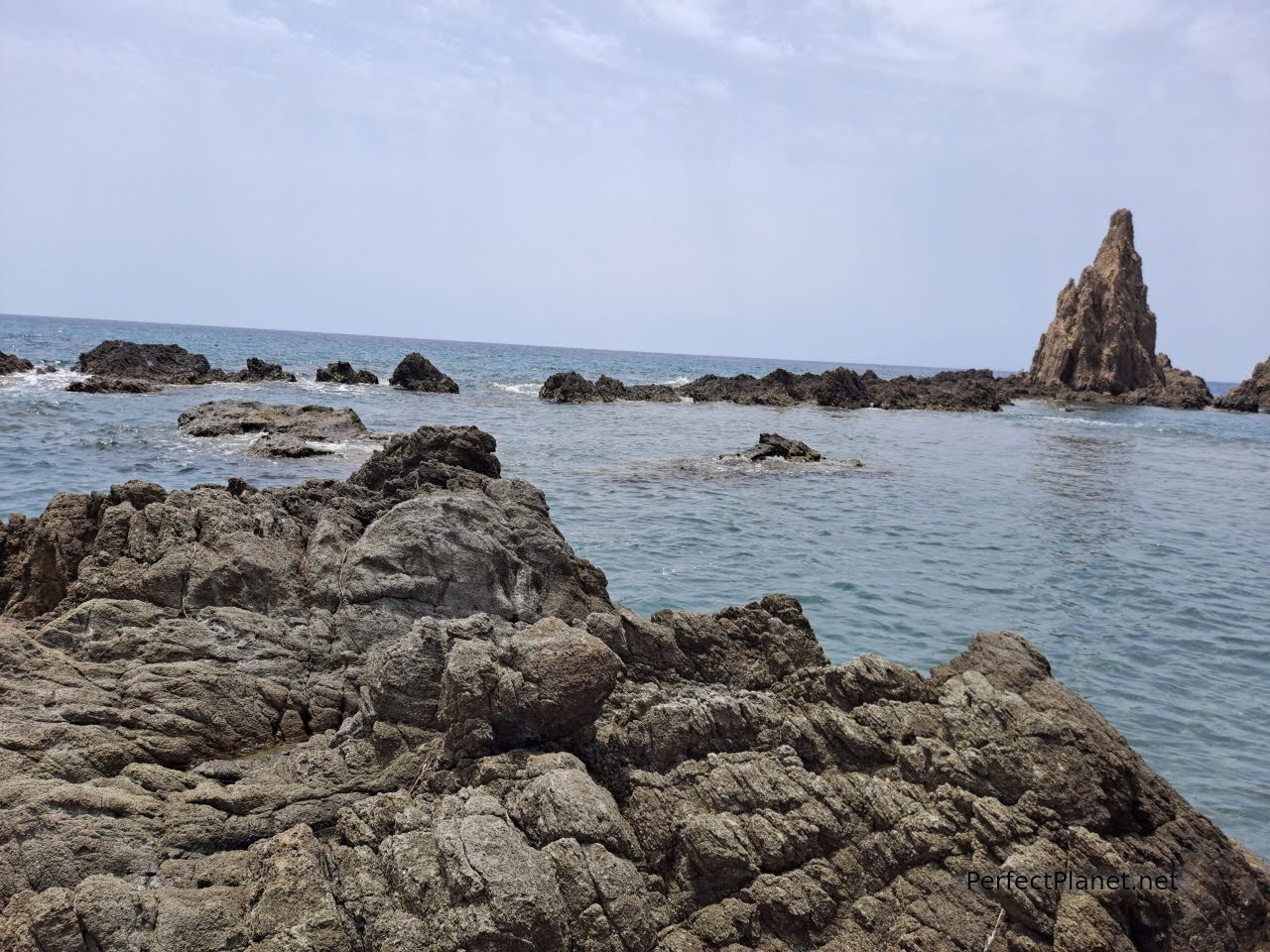
Sirenas reef
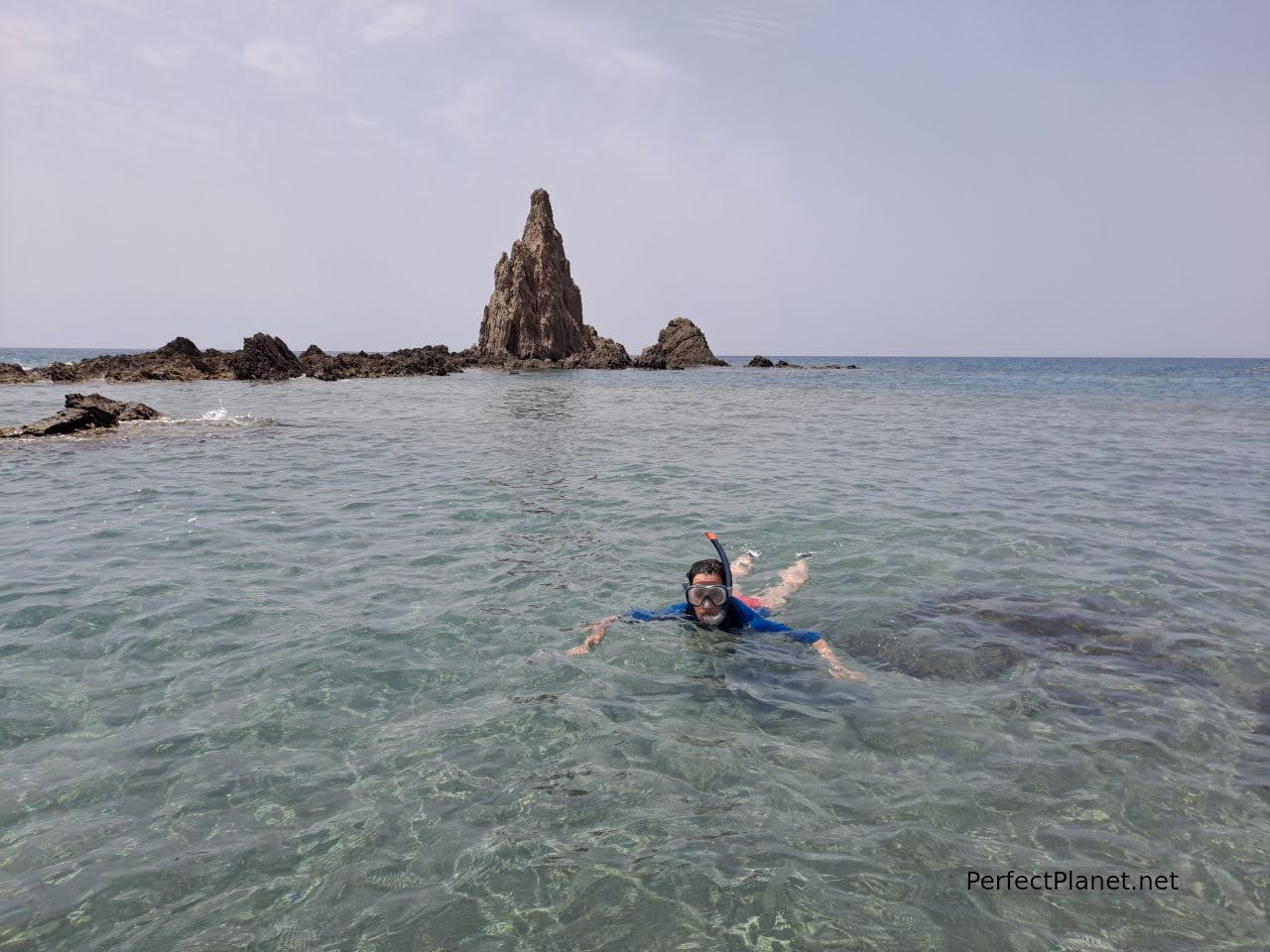
Sirenas reef
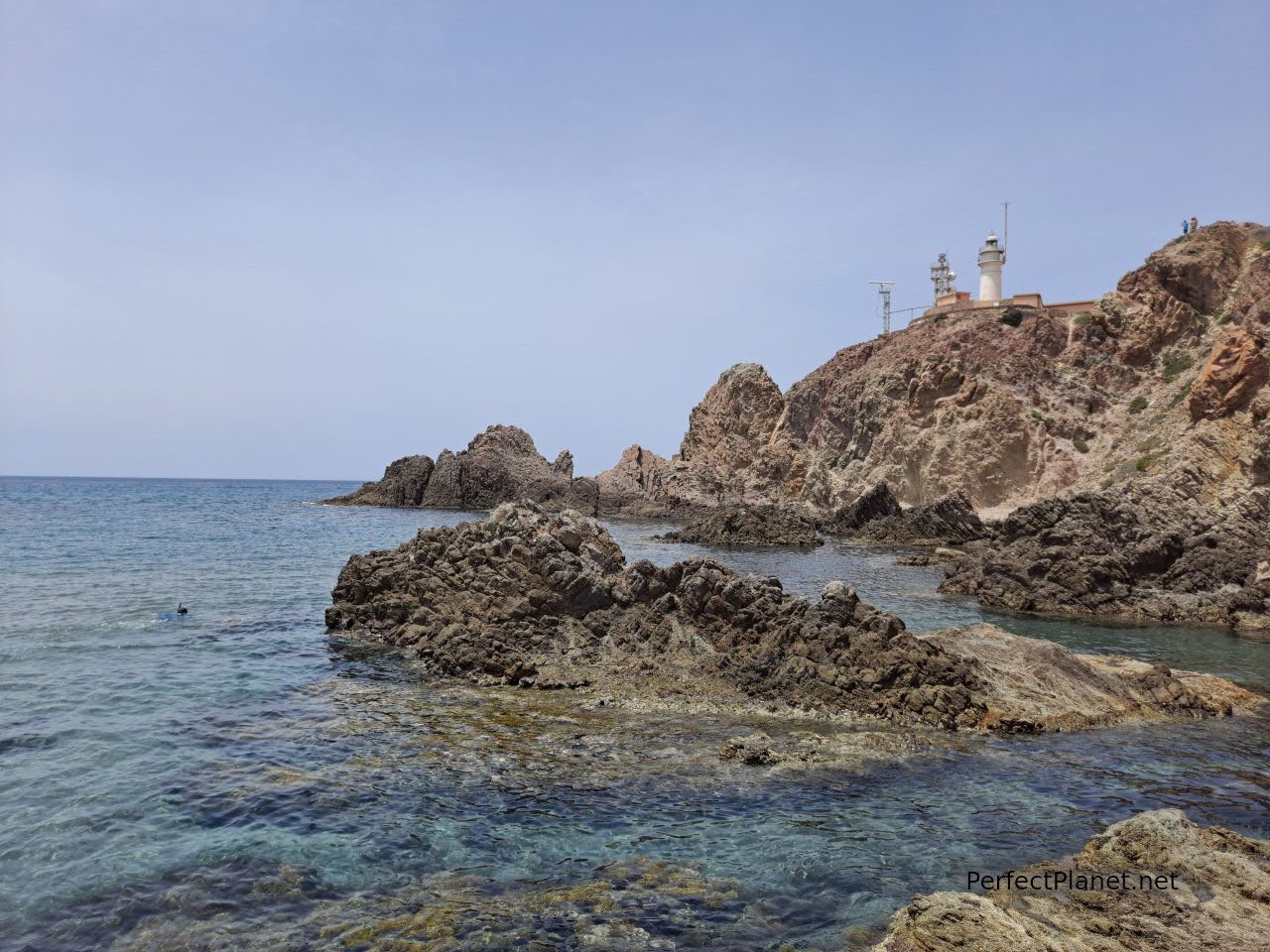
Sirenas reef
From the information panel in the car park there is a path that leads to the jetty. From here, goggles and snorkel and enjoy this marvellous place.
8. Domo del cerro de Vela Blanca and Cala Rajá
On the AL3115 road there is a junction that leads you along the ALP 822 to the beautiful and secluded beaches of Cala Arena or Cala Rajá.
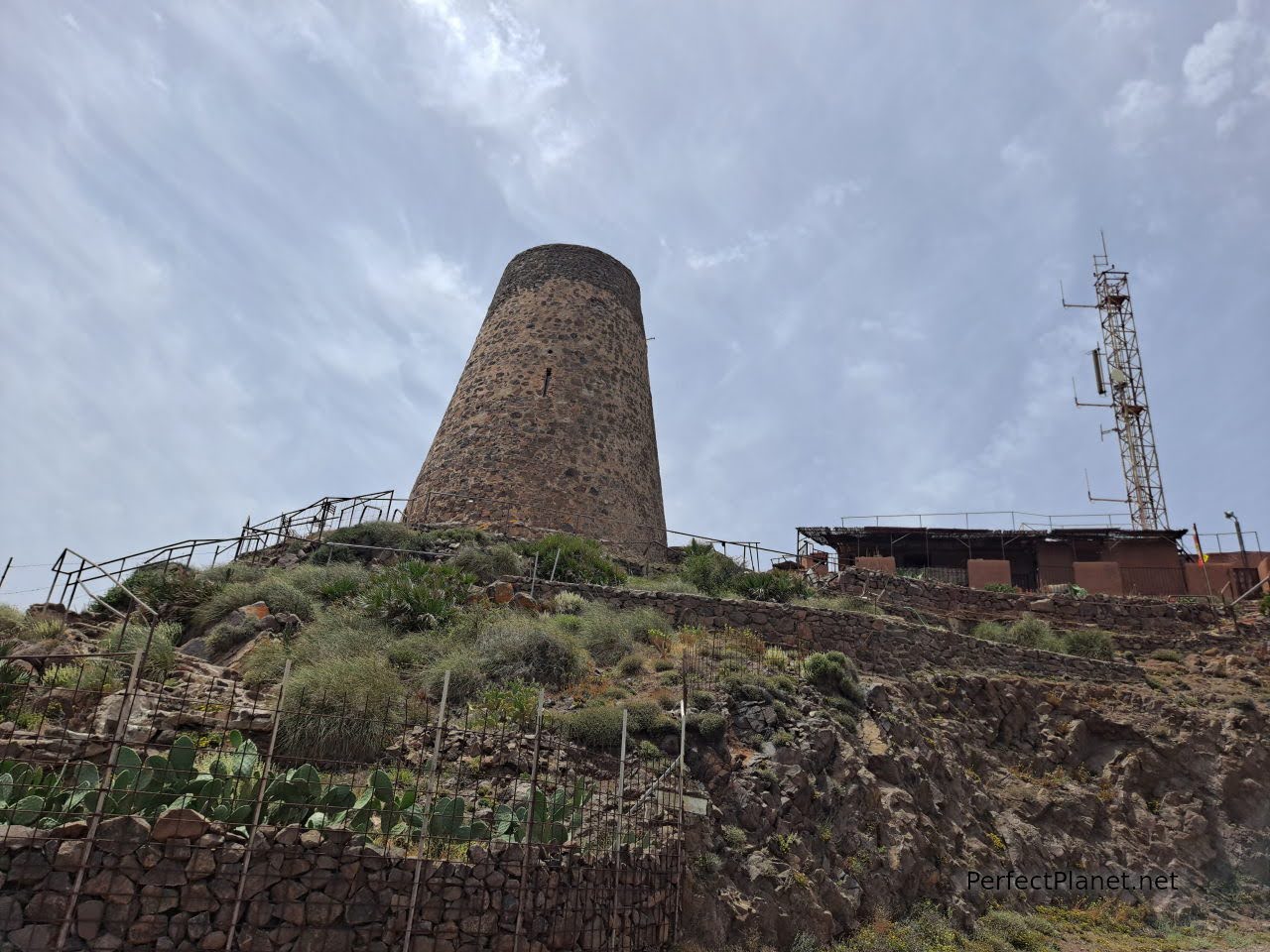
Cerro de Vela Blanca
The ALP822 continues (although in very poor condition) to the Domo del Cerro de Vela Blanca where we find the Torre de Vela Blanca where there is a viewpoint with spectacular views of both the East and South where a few kilometres away are the famous beaches of Monsul and Los Genoveses. The access from here to these beaches is a forest track which is limited to walkers and cyclists, so to visit them we need to return to the lighthouse and continue on to San José.

Views from Cerro de Vela Blanca
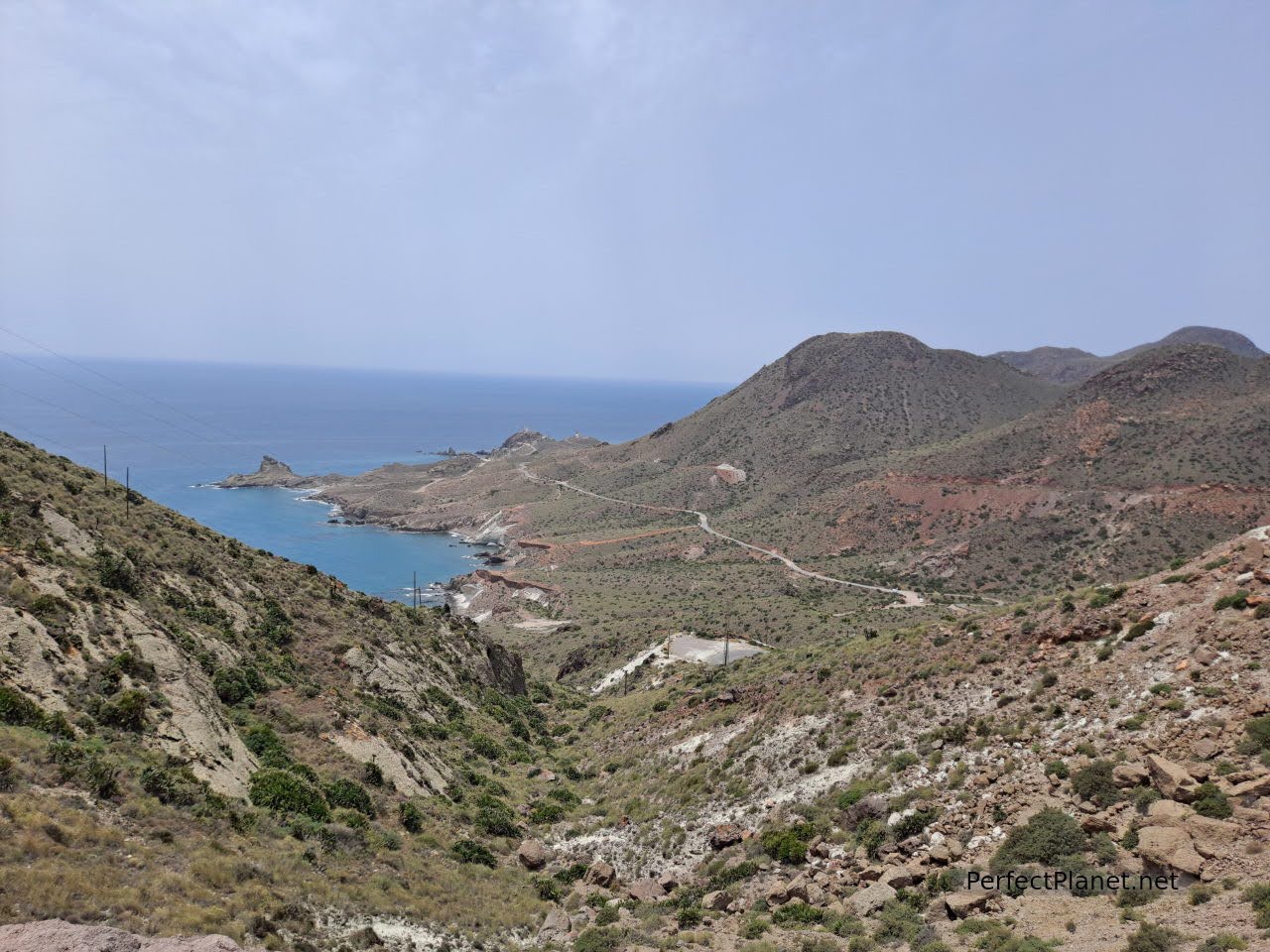
Views from Cerro de Vela Blanca
This volcanic dome surrounded by overlapping volcanic lava flows is impressive. The rocks that form it, originating millions of years ago, contrast with other lighter coloured rocks. Due to the outcropping of white tuffs, it resembles a ship's sail from afar, hence its name.
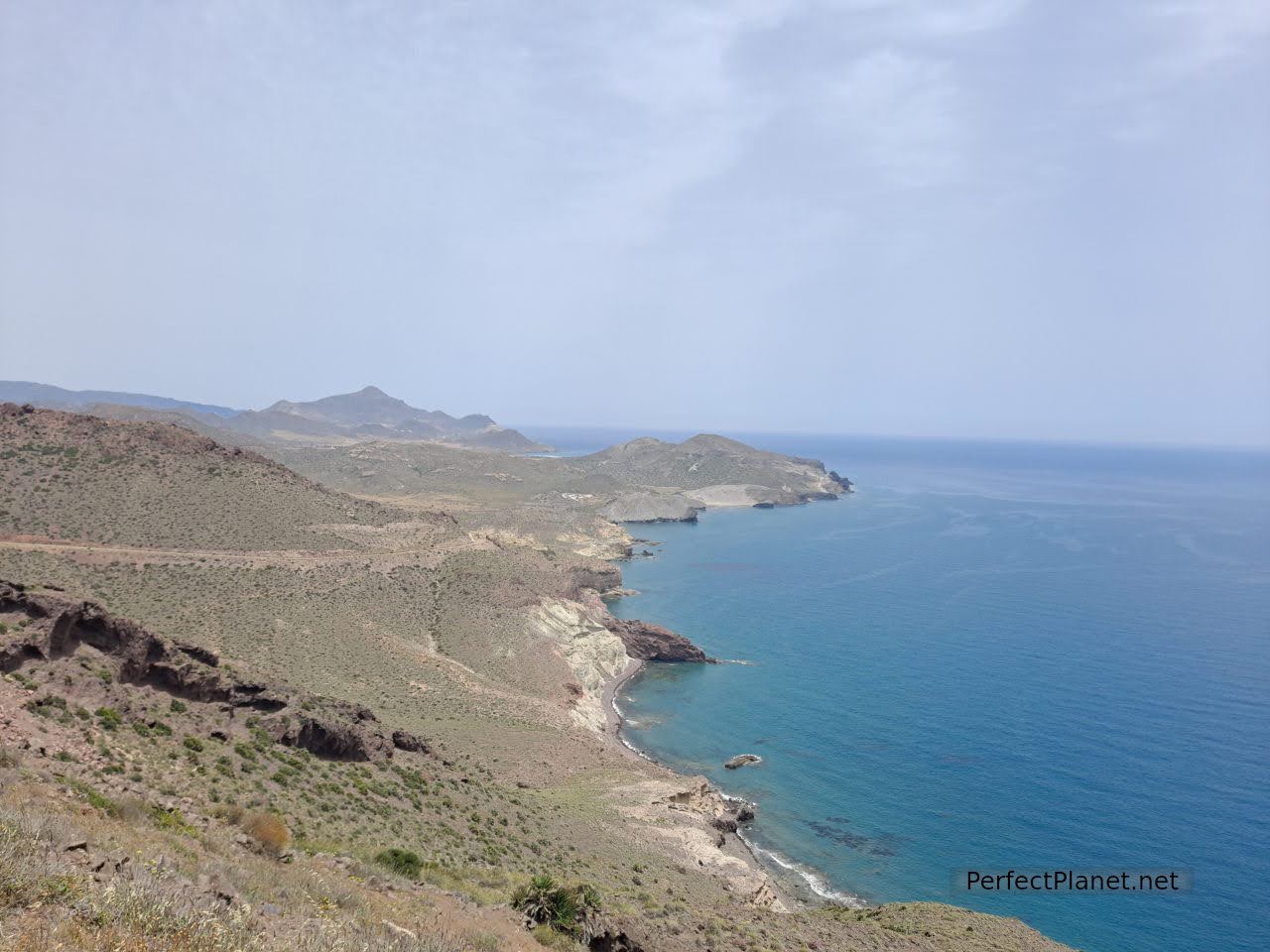
Views from Cerro de Vela Blanca
9. San José, Monsul beach and Genoveses beach
San José is considered the capital of the Natural Park of Cabo de Gata Nijar. It is accessed via the AL3108 road and has all services.
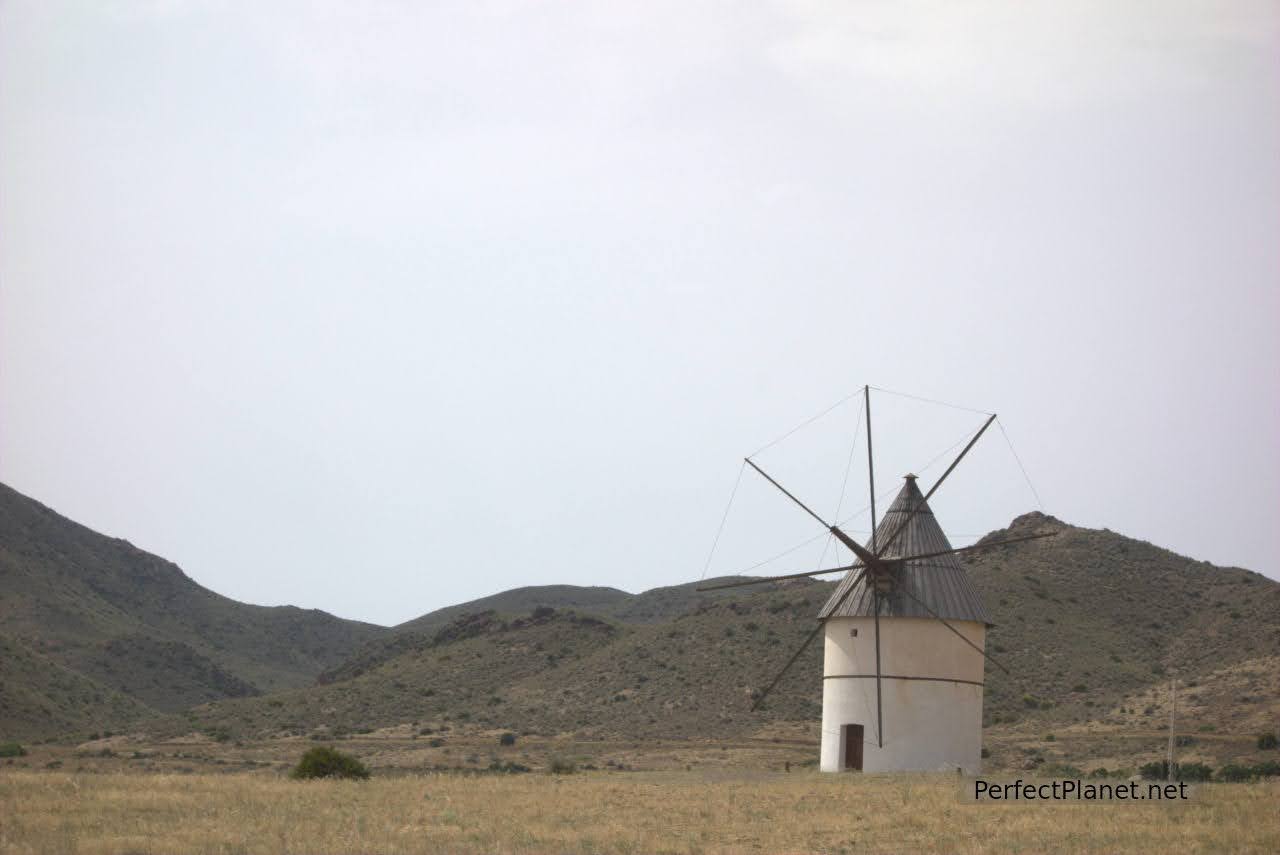
Windmill
Close to San José are two of the most famous beaches in the park, Monsul and Genoveses.
Access from San José is via a well-kept forest track for about 4 kilometres. Both have large car parks and are suitable for bathing.
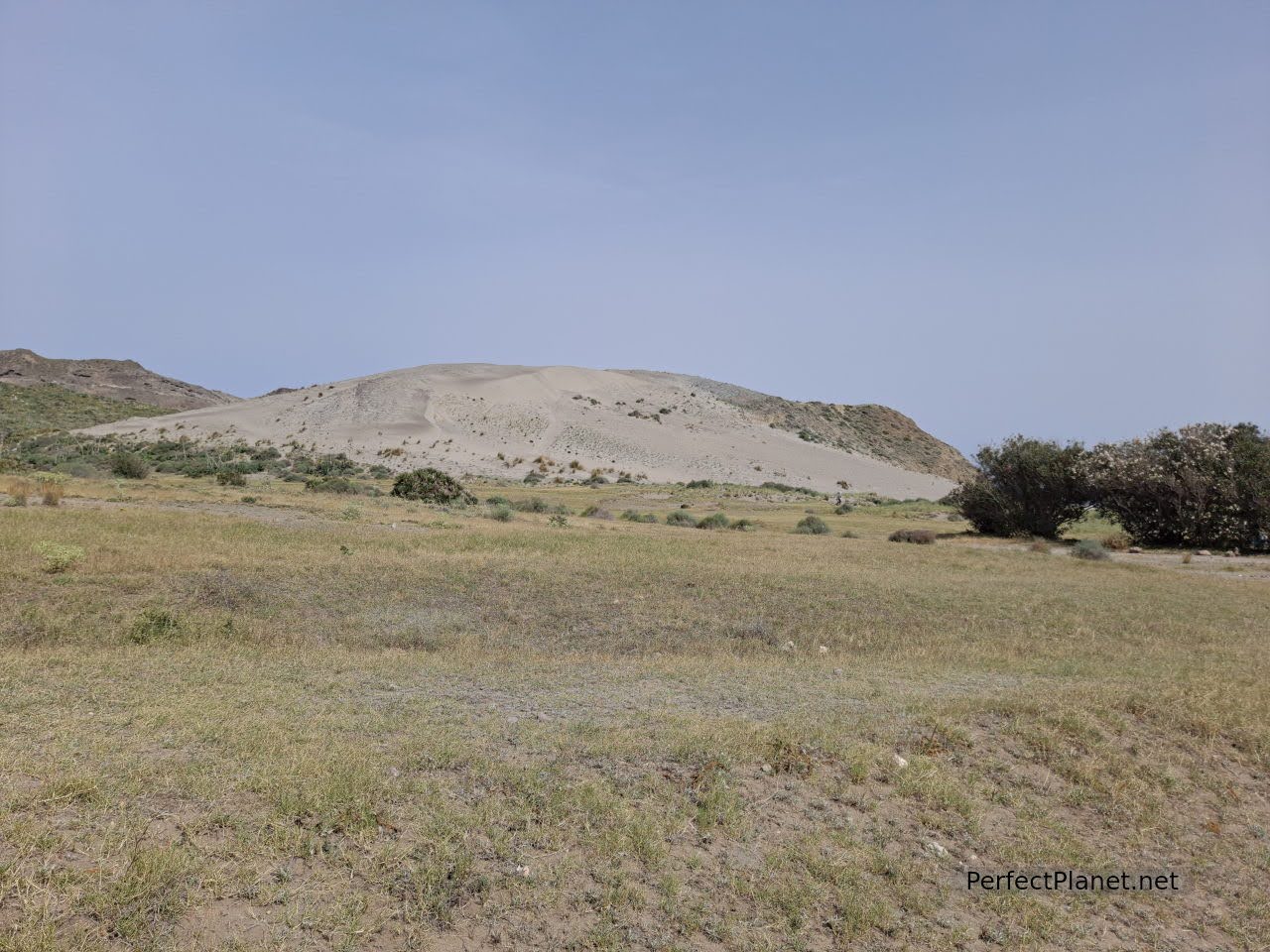
Monsul dune
There is an entrance fee of €5 per vehicle.
The beach of Monsul is famous for having appeared in music videos and films (Indiana Jones). It has a beautiful and immense dune of fine sand on the left bank. Beautiful.
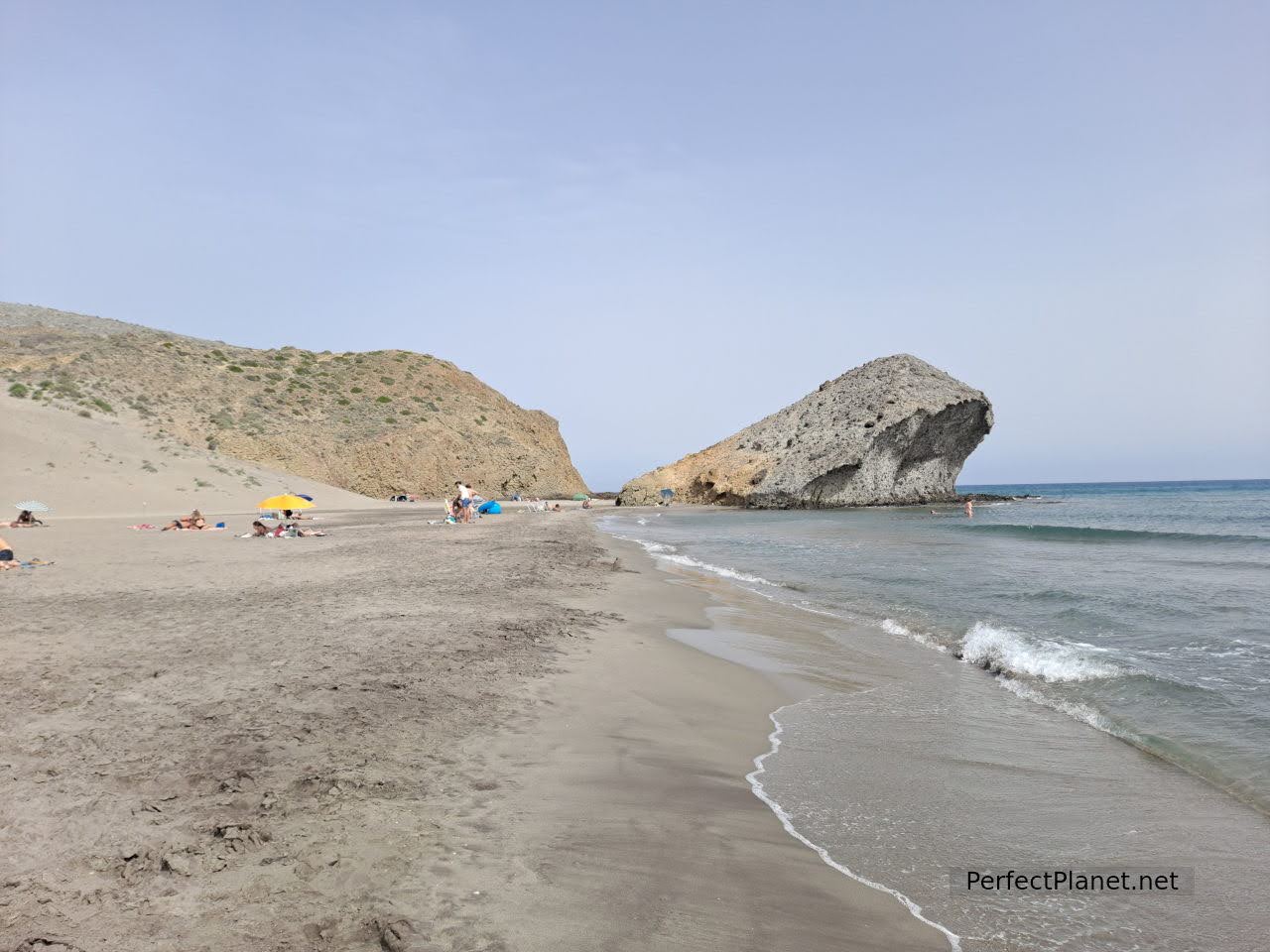
Monsul beach
Transparent waters, fine sand, with lots of marine life. It is surrounded on both sides by rocks of volcanic origin and thanks to its shallow depth it is ideal for the whole family.
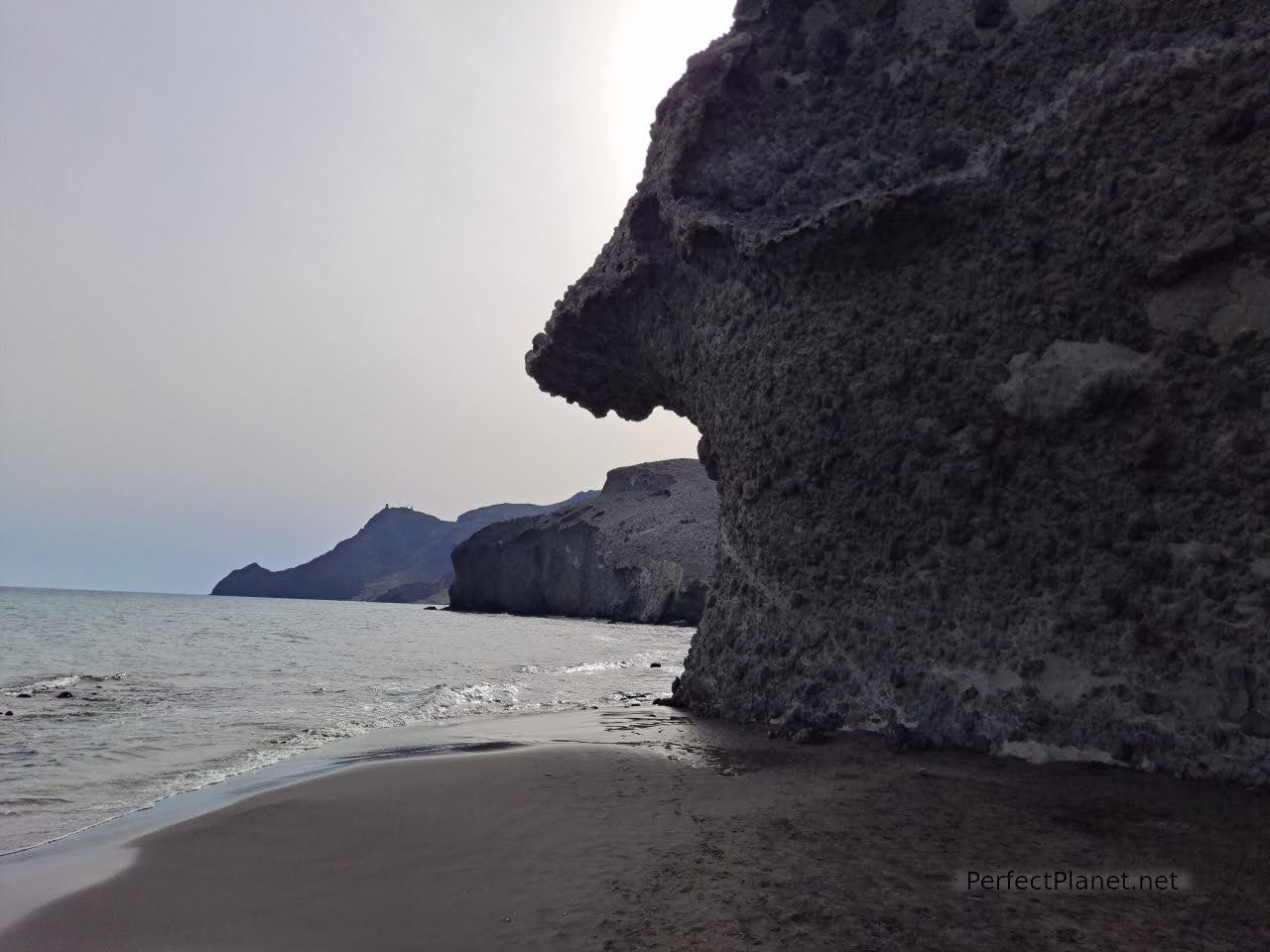
Monsul beach
In the middle of the beach is the famous Peineta of Monsul. Passing the rocks on the right hand side you can visit the Media Luna cove.
If you continue along the forest track you can reach the Cerro de Vela Blanca but access is only available on foot or by bike. Beautiful.
Between the beaches of Monsul and Genoveses is the nudist beach of Barronal.
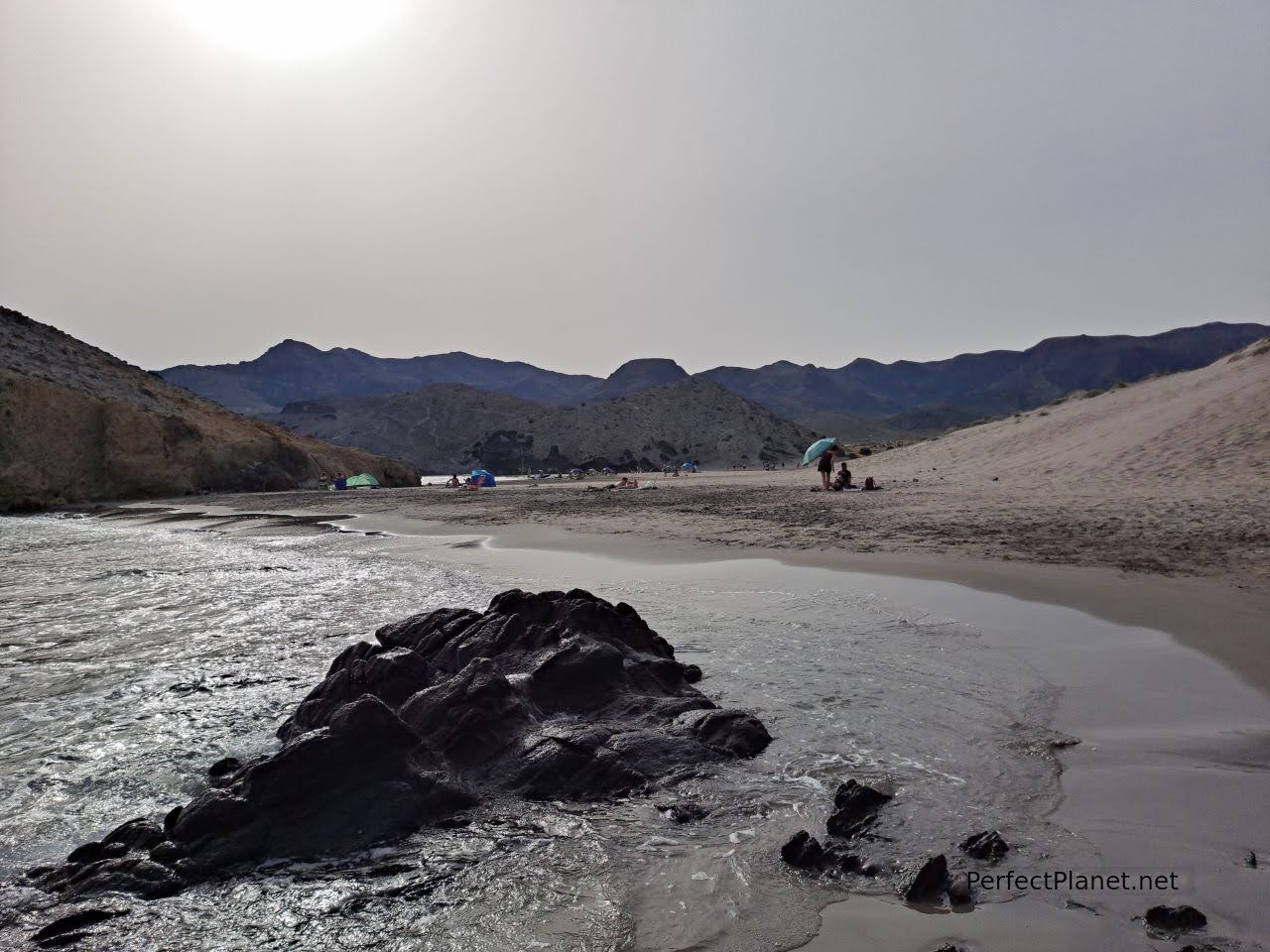
Monsul beach
Los Genoveses beach is located in Campillo del Genoveses, with no buildings or asphalted roads. It is surrounded by small dunes with vegetation. It is quite large and has fine sand. Be careful with the currents, especially on windy days.
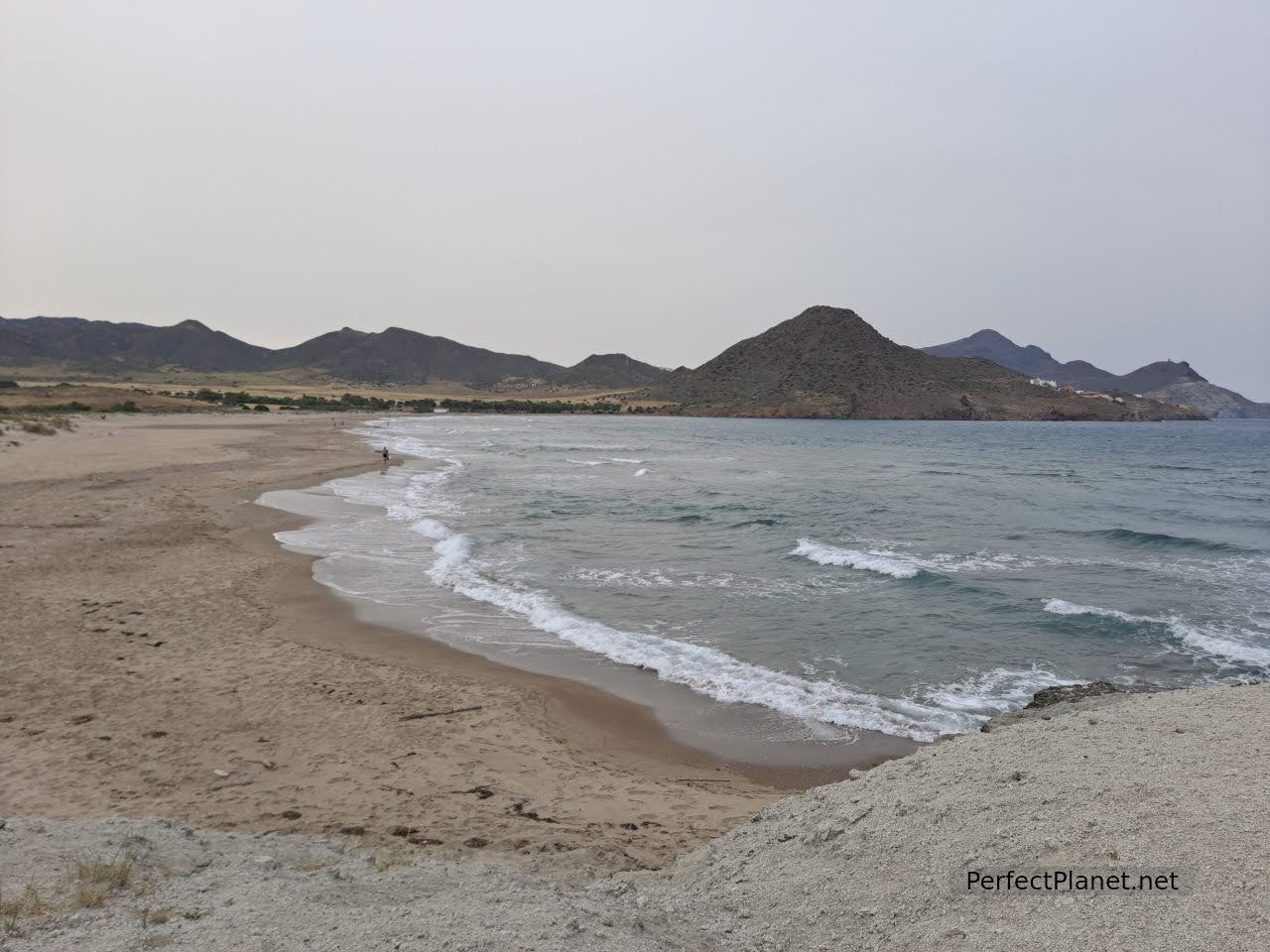
Genoveses beach
You can walk to the Morrón de Genoveses, a hill with privileged views of the beach.
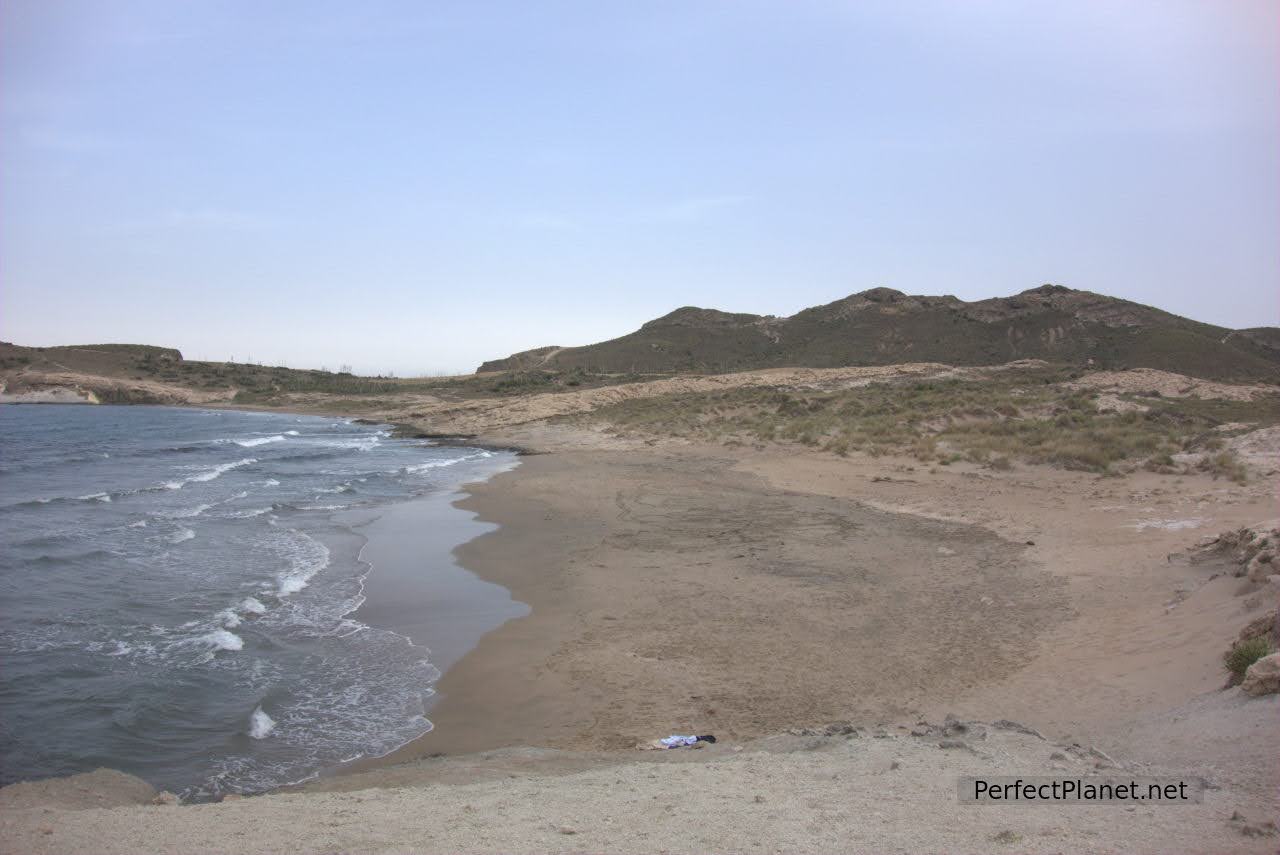
Genoveses beach
Los Genoveses beach is located one kilometre from San José and has a city bus service.
At the southern end of Cabo de Gata are the Salinas along the AL3115 road.
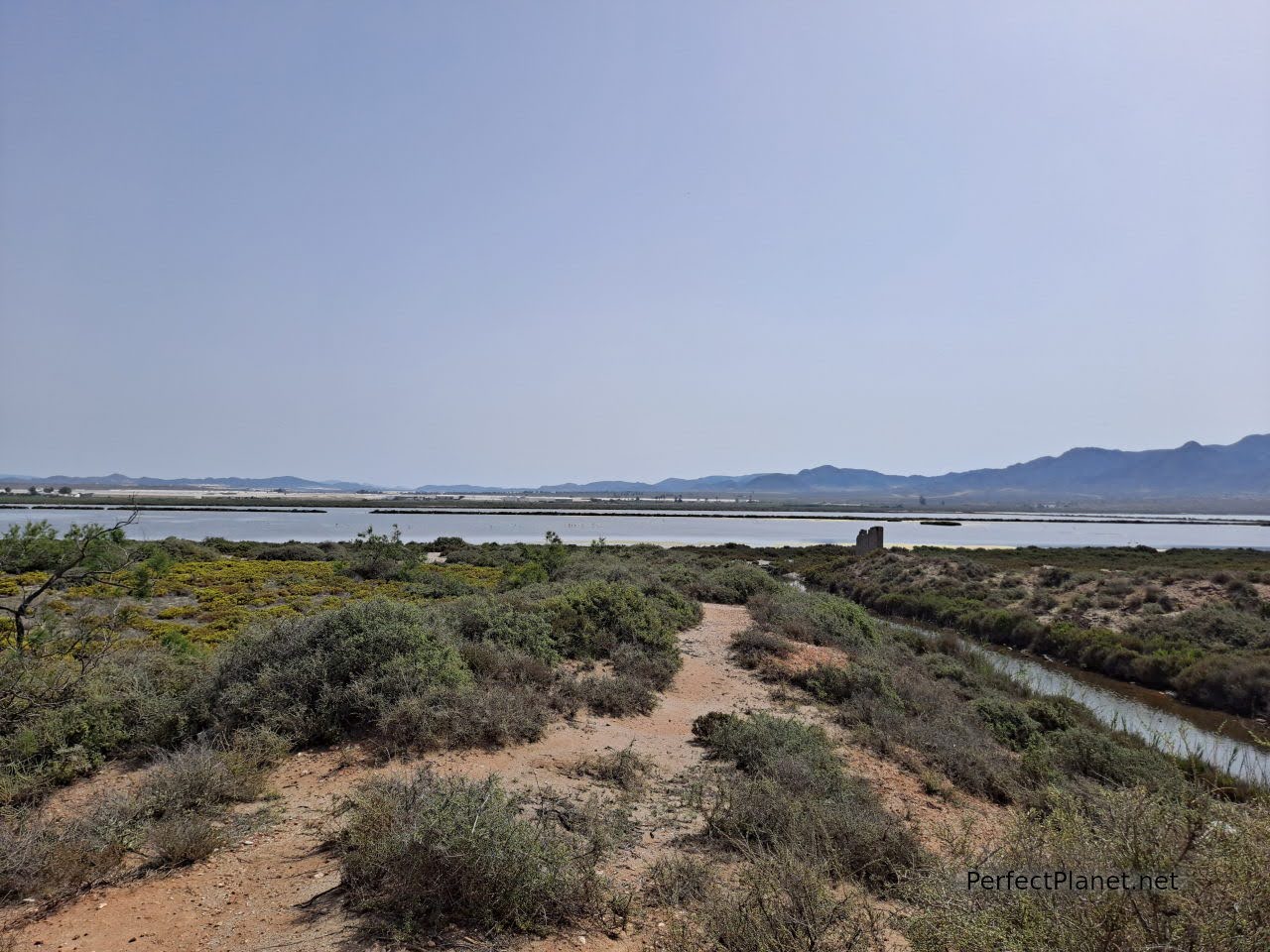
Salf flats
It is worth spending a few hours at the Cabo de Gata salt flats, which are still active and of great ecological value due to the multitude of species they are home to.
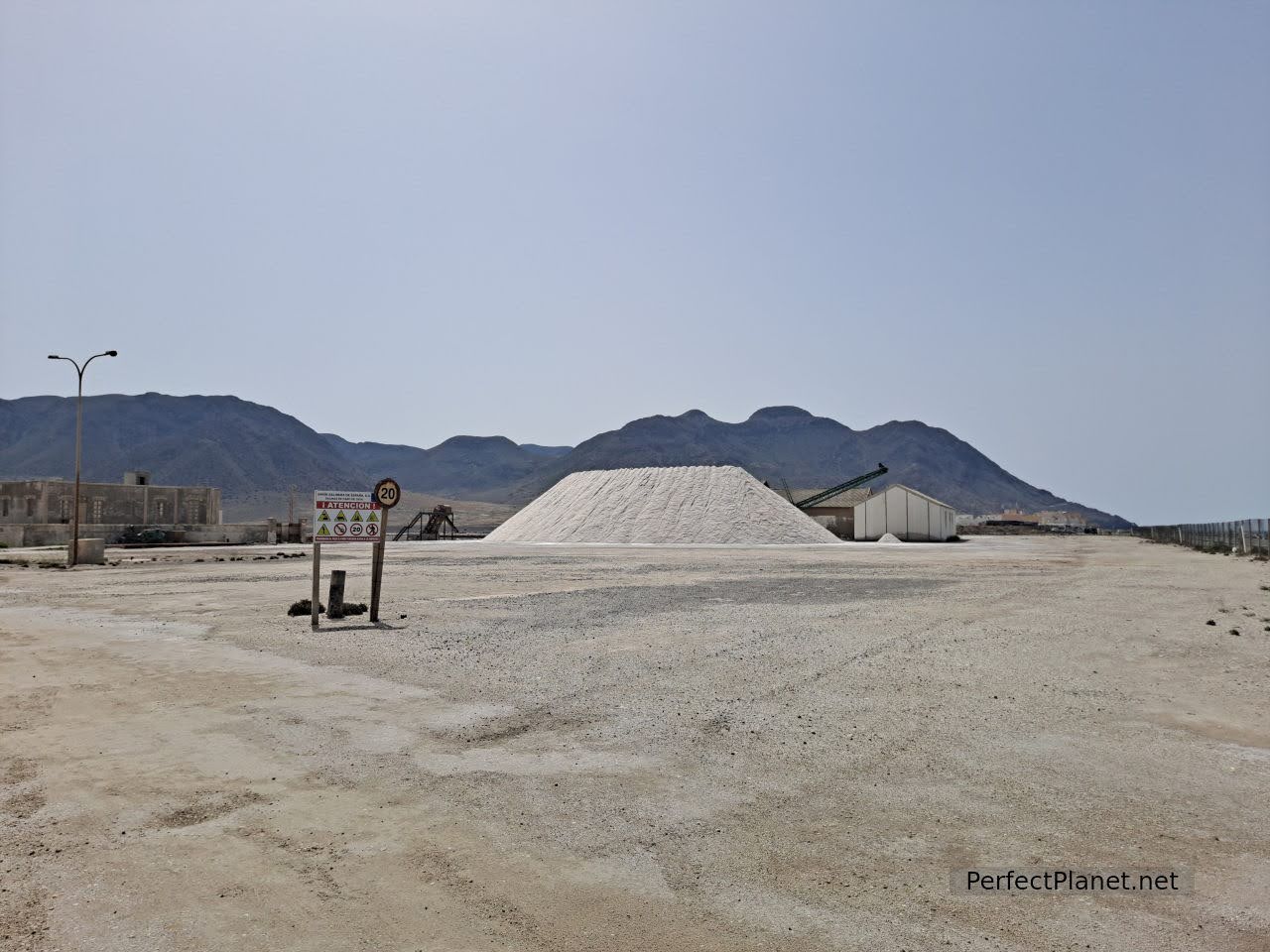
Salf flats
There are several observation posts along the Salinas. We were lucky enough to see flamingos, herons and other birds that use this paradise as a resting place in their migratory process.
The heat is very hot in this area but it is cool in the viewing huts.
This wetland is located near Fabriquilla, a small fishing village where you can enjoy the very long beach of Las Salinas where the church of the same name is located.
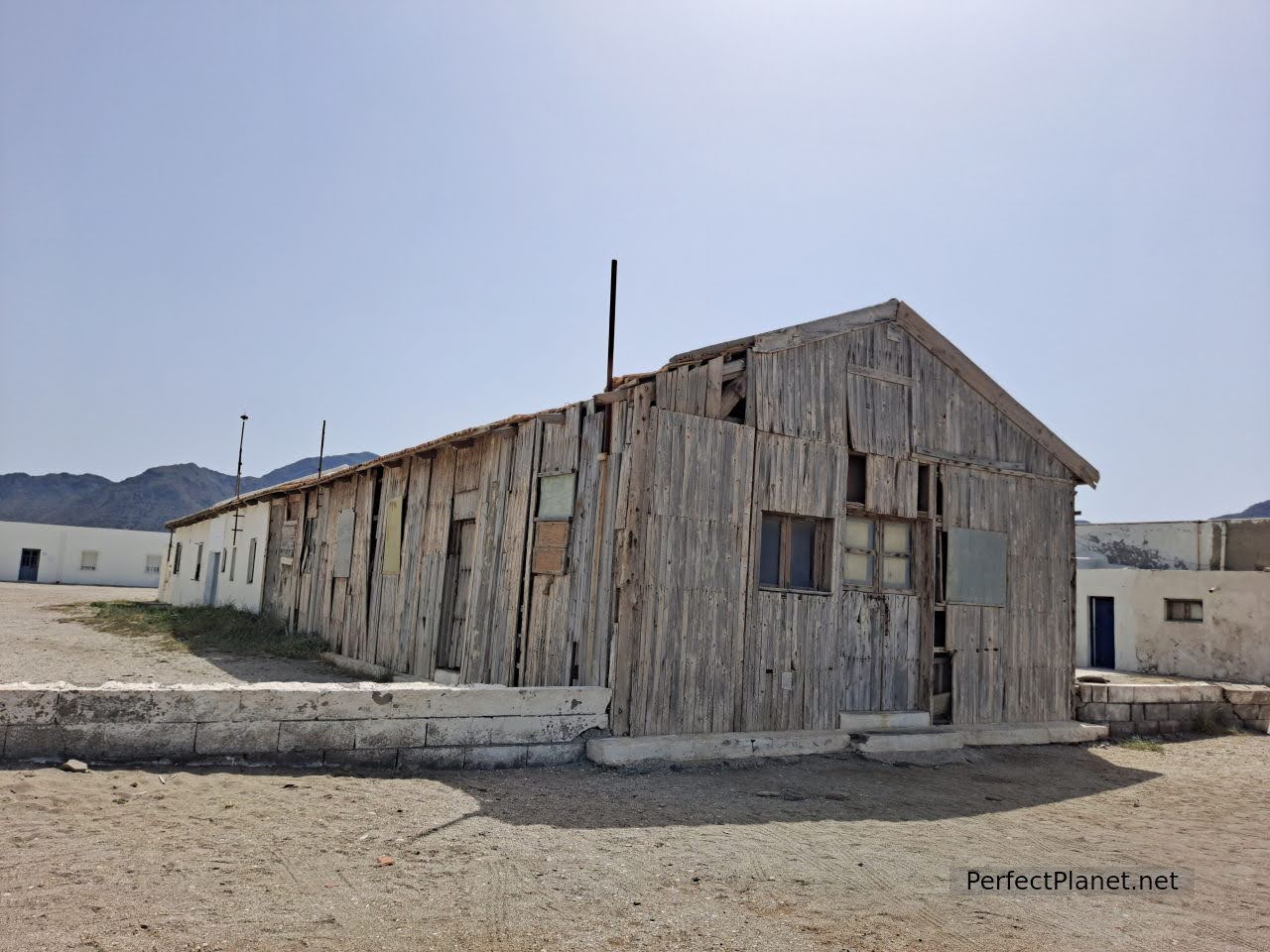
Village
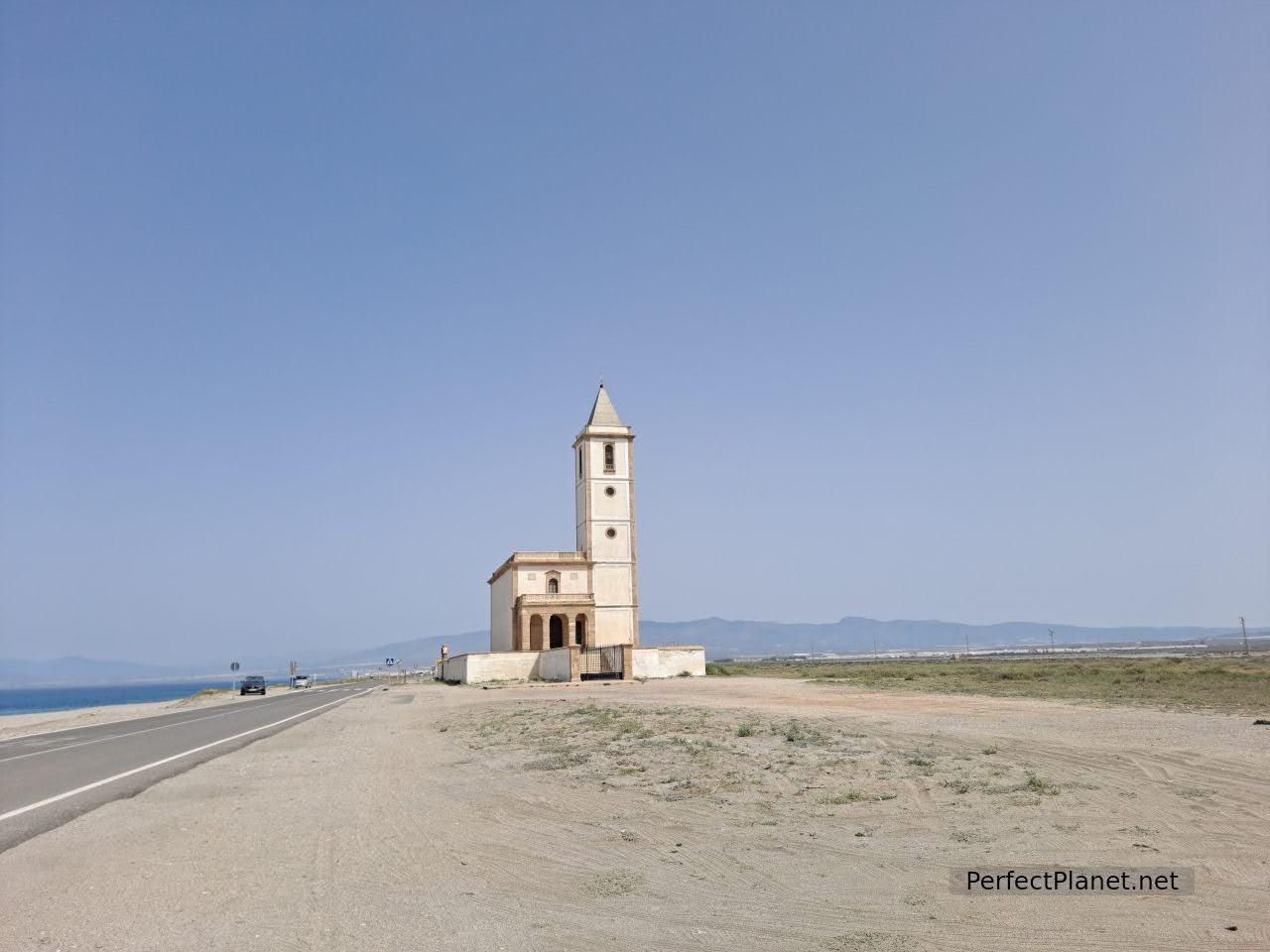
Church of Salinas
For lunch we recommend the restaurant Blanca Brisa. If you don't want to go à la carte they have impressive menus for 12€.
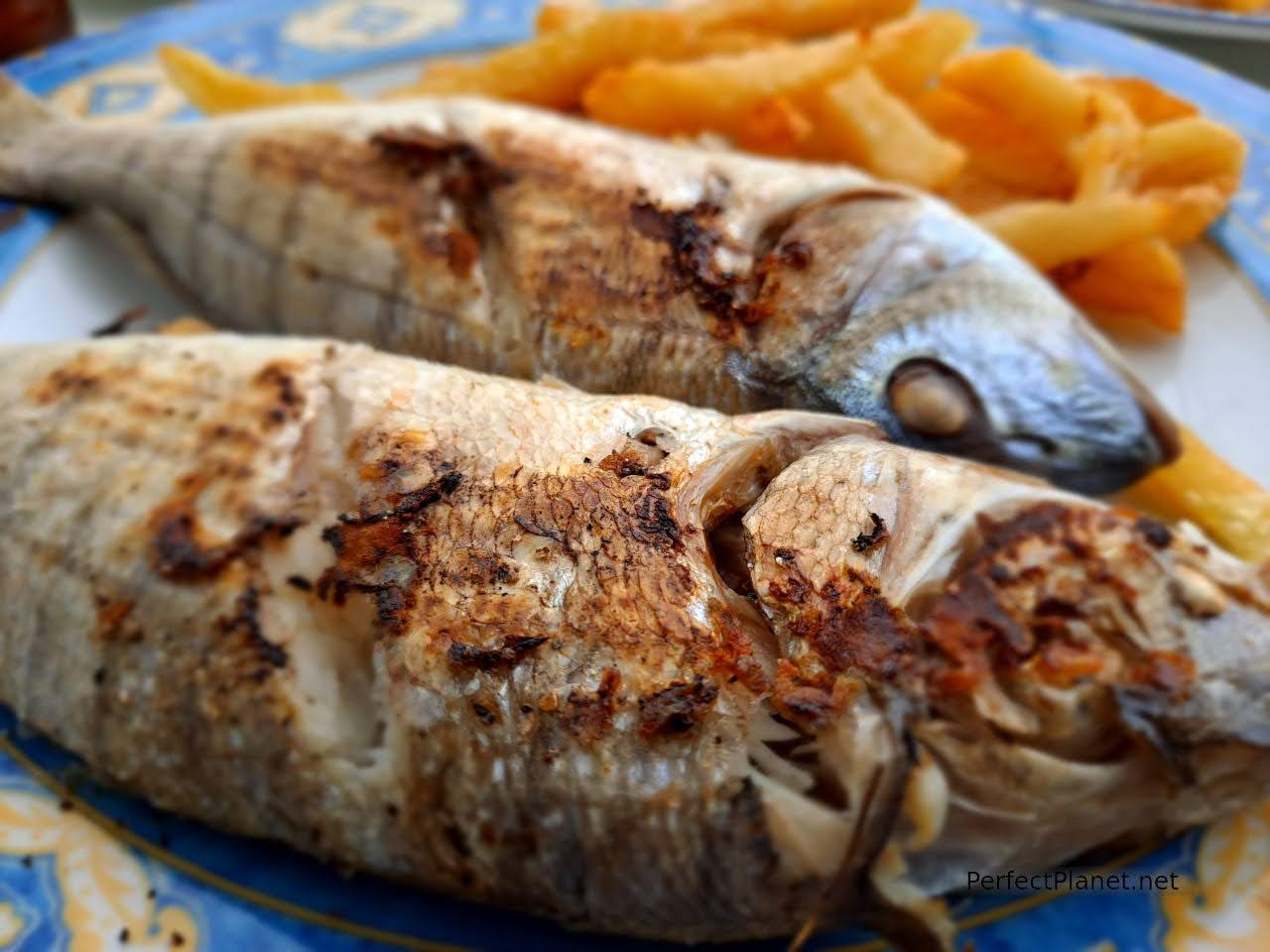
Local fish
TIPS
The Natural Park is made up of a fairly extensive network of trails where you can enjoy nature in its purest form. They are not very difficult, but the heat and the lack of fountains are two aspects to bear in mind.
Most of the beaches are outside urban centres, so remember to take water and food with you and, above all, don't forget to take your rubbish with you when you leave.
Remember to always wear comfortable shoes for beach access. Booties are very useful as many of them combine stone, rock and sand.
- Log in to post comments

